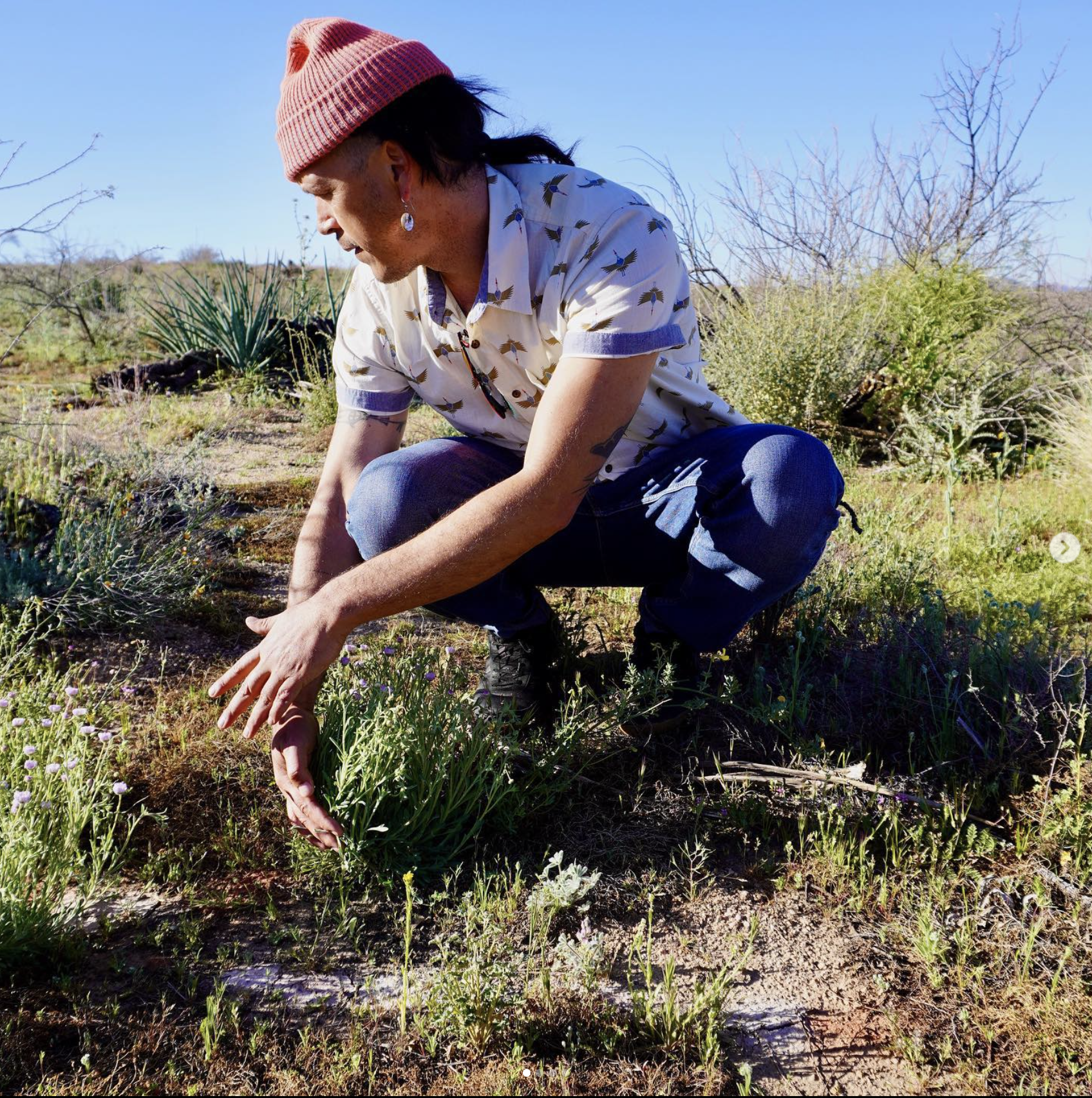
Something To Hold Onto asks us to consider ancestral migratory routes and the lands of Indigenous peoples affected by borders while acknowledging contemporary asylum seekers and our changing relationships to land.
Something To Hold Onto actively engages those working towards Indigenous sovereignty and the liberation of Indigenous migration routes.
Something To Hold Onto is a large-scale ephemeral artwork and immersive installation by Cannupa Hanska Luger using over 9000 unfired clay beads created in collaboration with communities across the US and Mexico.
According to Border Patrol statistics, more than 7,209 human beings have died while crossing the southwestern border of the United States over the past 20 years. The International Organization for Migration has recorded the deaths of nearly 25,000 humans attempting to migrate across the globe’s imposed borders since 2014. Both numbers are vastly underestimated; both are unfathomable.
Something to Hold Onto considers ancestral migratory routes and the lands of Indigenous peoples affected by imposed borders, acknowledging all asylum seekers, tribal lands, longstanding relationships to land and migration as cultural practice. This intersectional project highlights the impact of borders on Indigenous bodies and how, across the continent, our migration routes have been traumatically interrupted through incarceration and death.
Something to Hold Onto incorporates more than 9,000 handmade unfired clay beads as a way to collectively re-humanize this large, abstract, and dehumanizing data. Communities from across the United States and Mexico were invited to make and contribute clay beads, honoring lives lost along the now unsafe migration paths of Indigenous people.
This collective call to action was not designed to confront policy change, but created an opportunity to embed handmade earthen objects with empathy -- from nation to nation, from human to human. These small clay objects embedded with a fist print, string together a line of solidarity, building global consciousness around Indigenous peoples and our connection to movement and land. In opposition to the incarceration and militarization that separates geography, Something to Hold Onto pieces together people and places in a tapestry of borderless compassion.
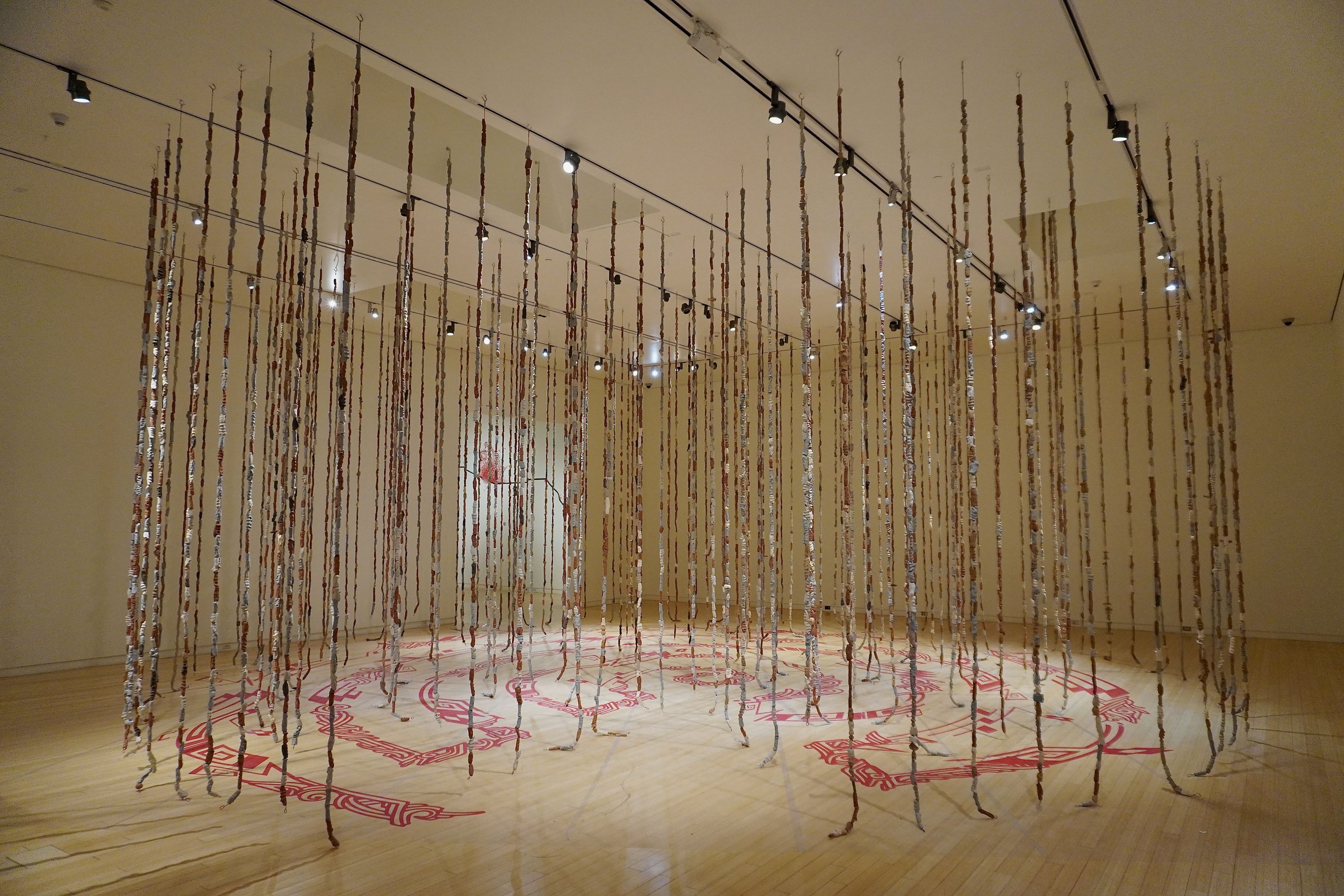
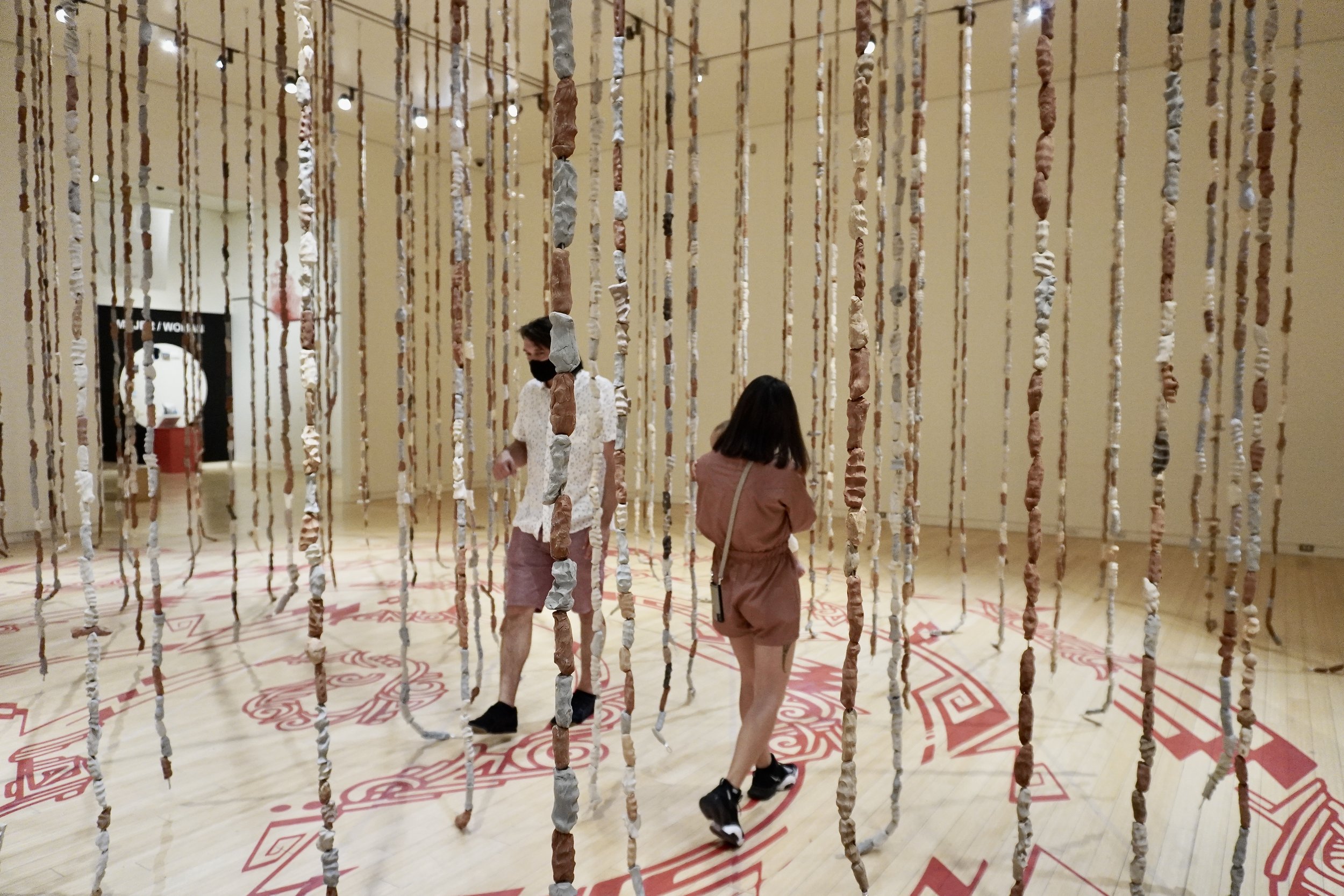

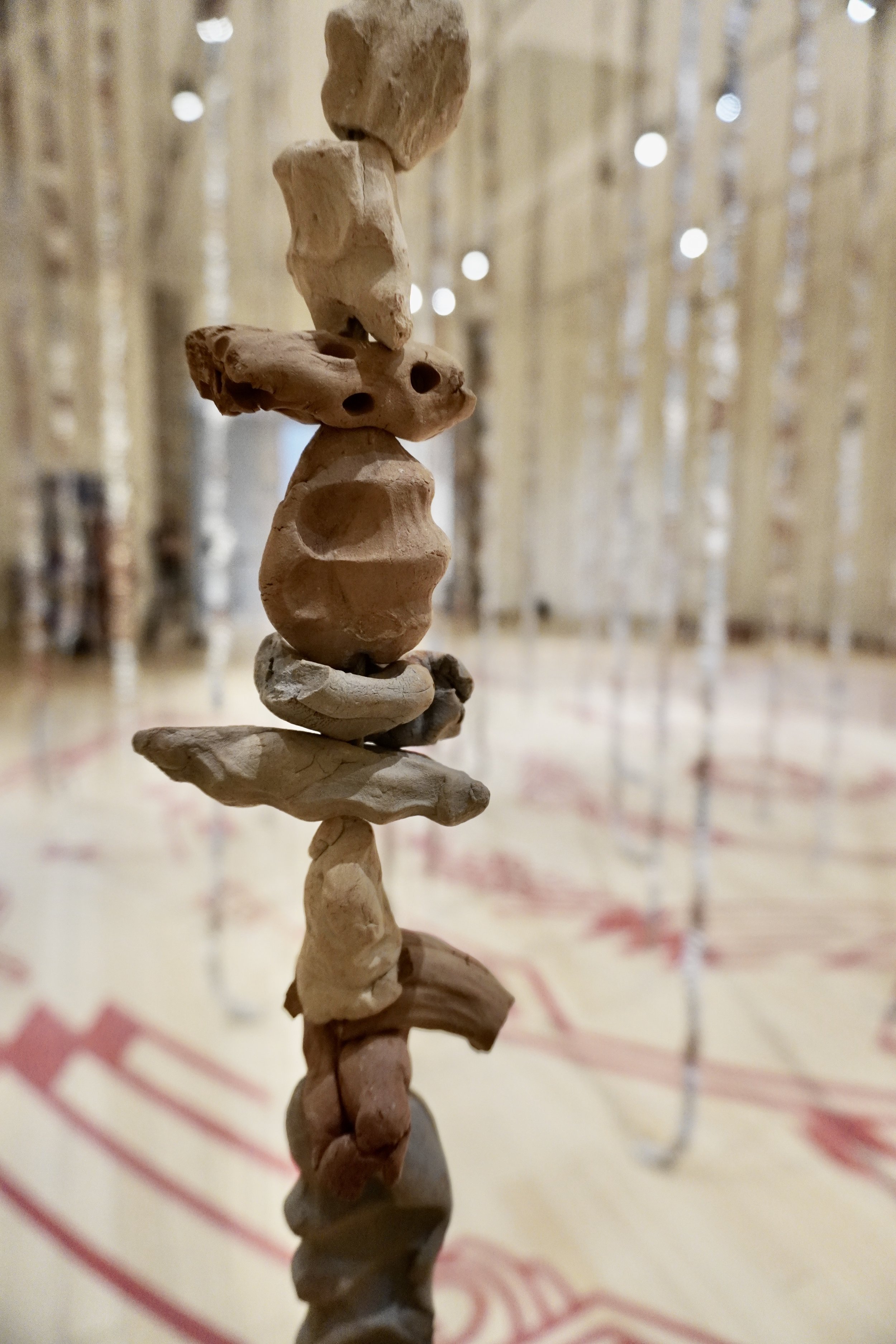
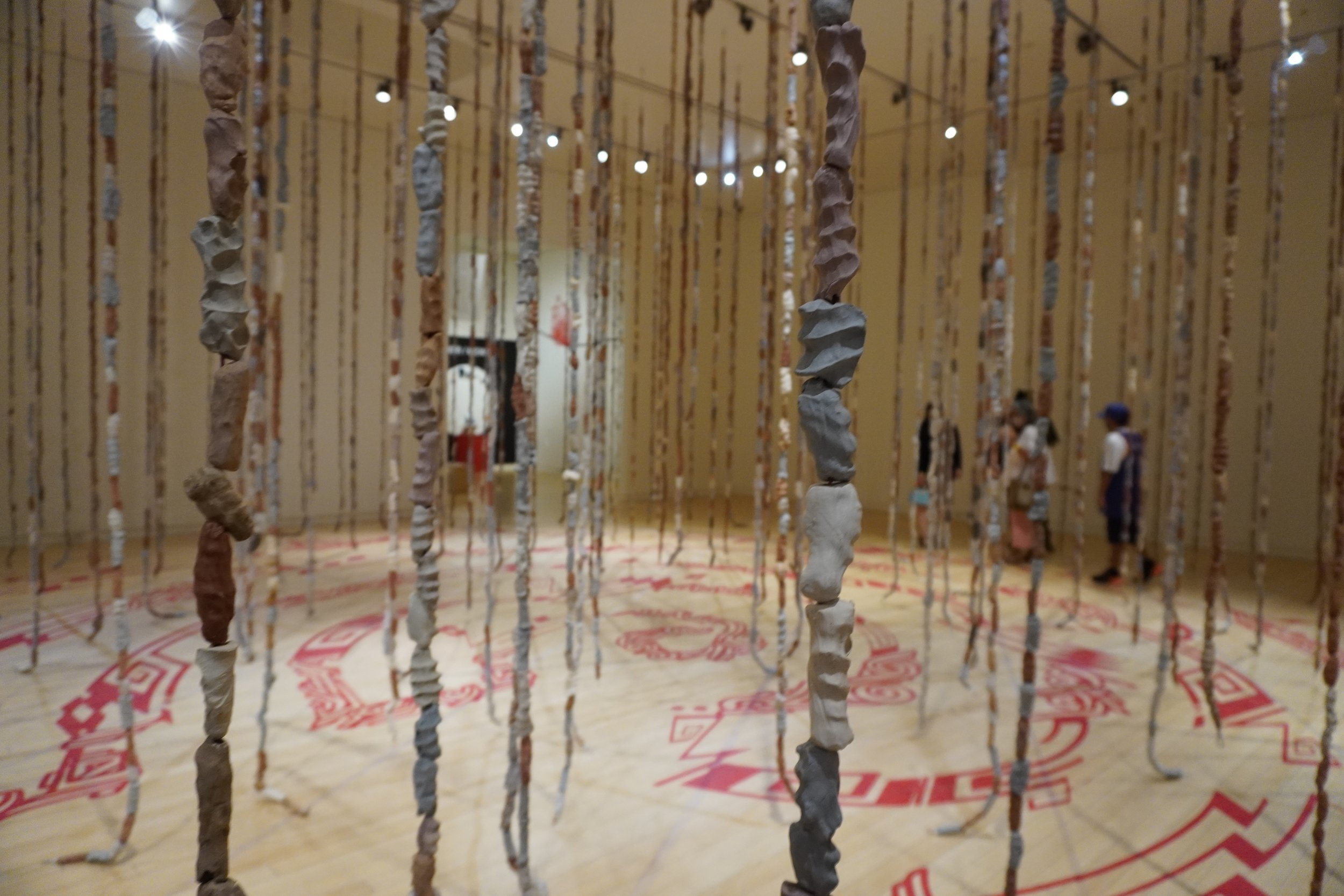

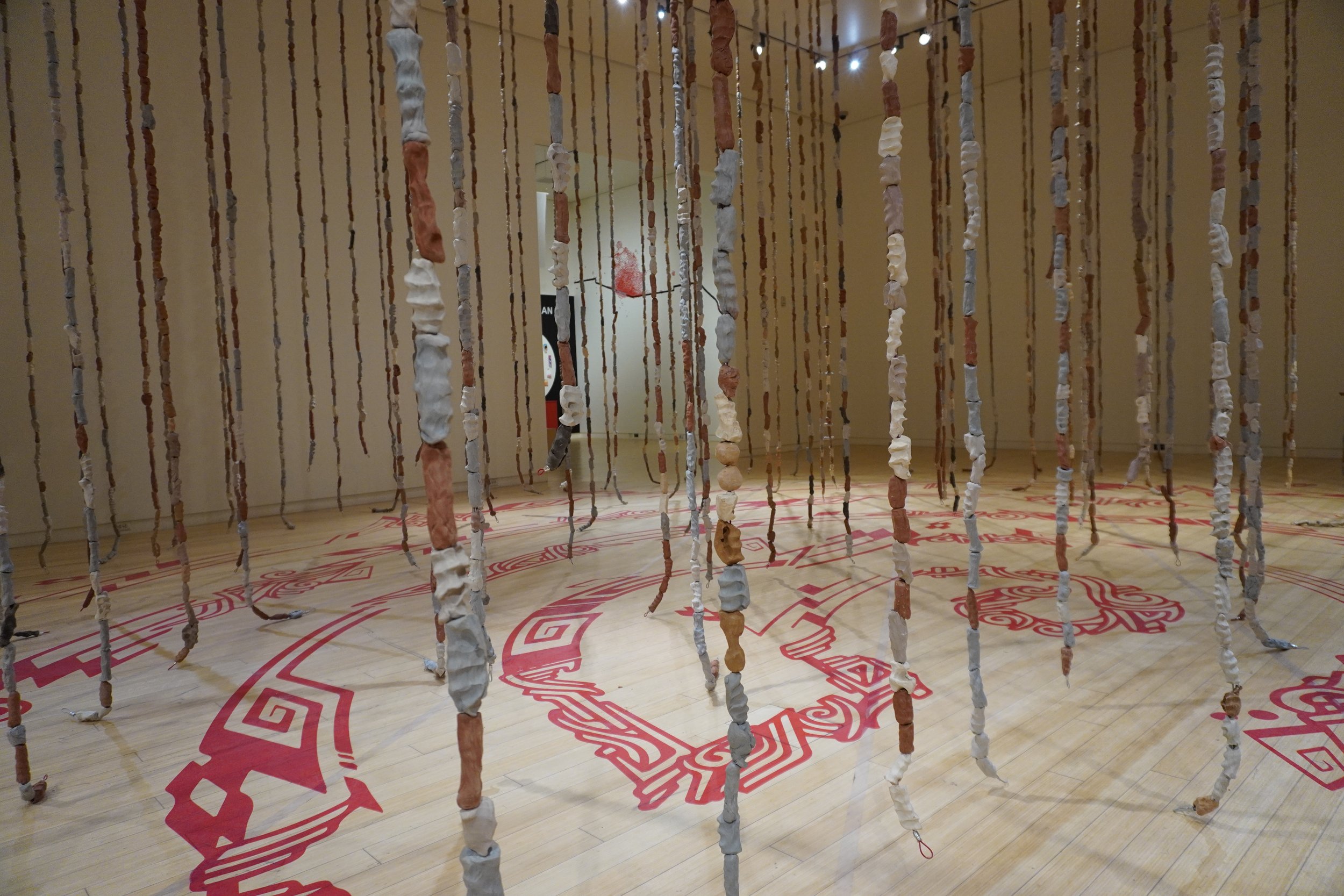
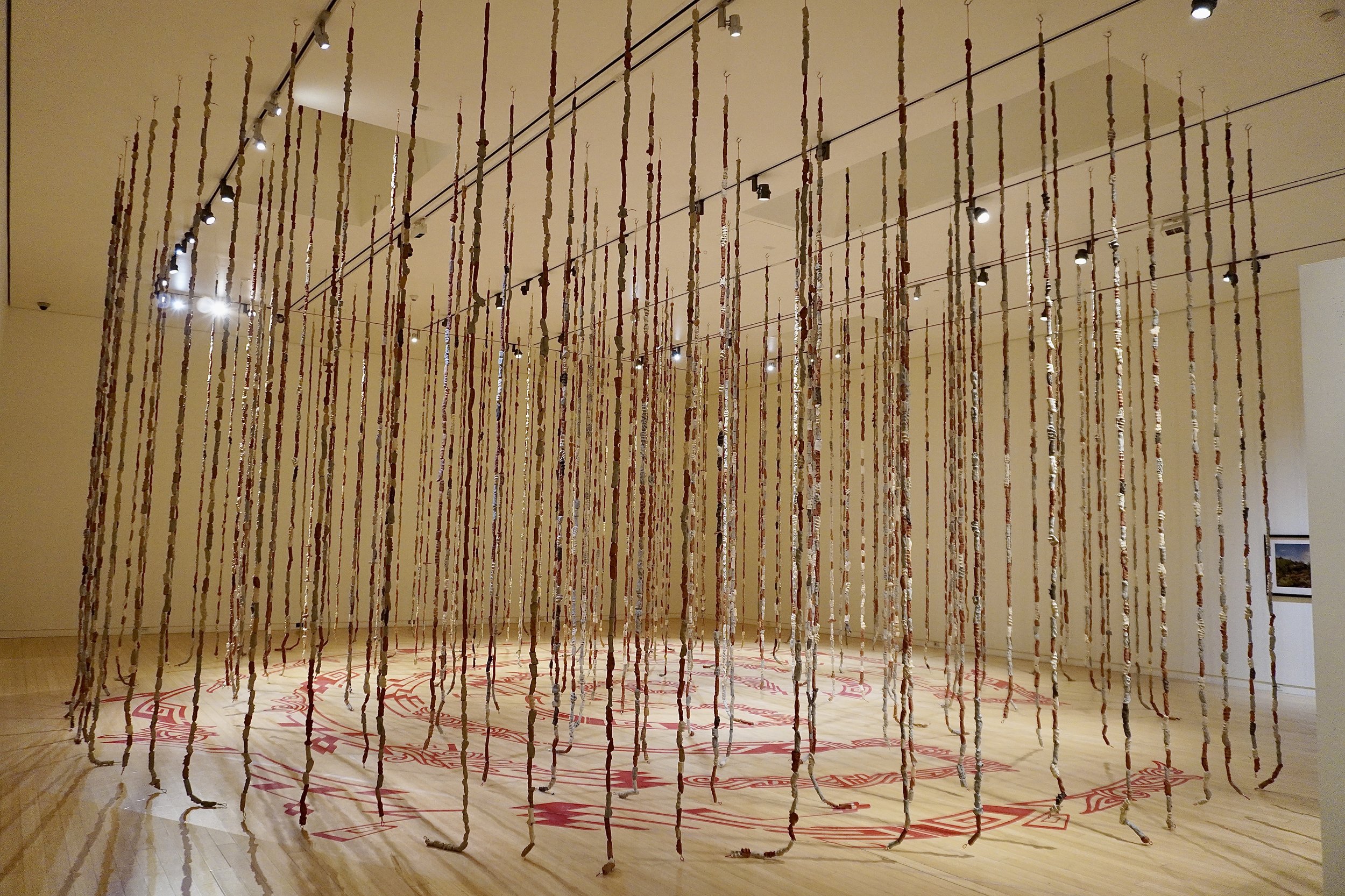
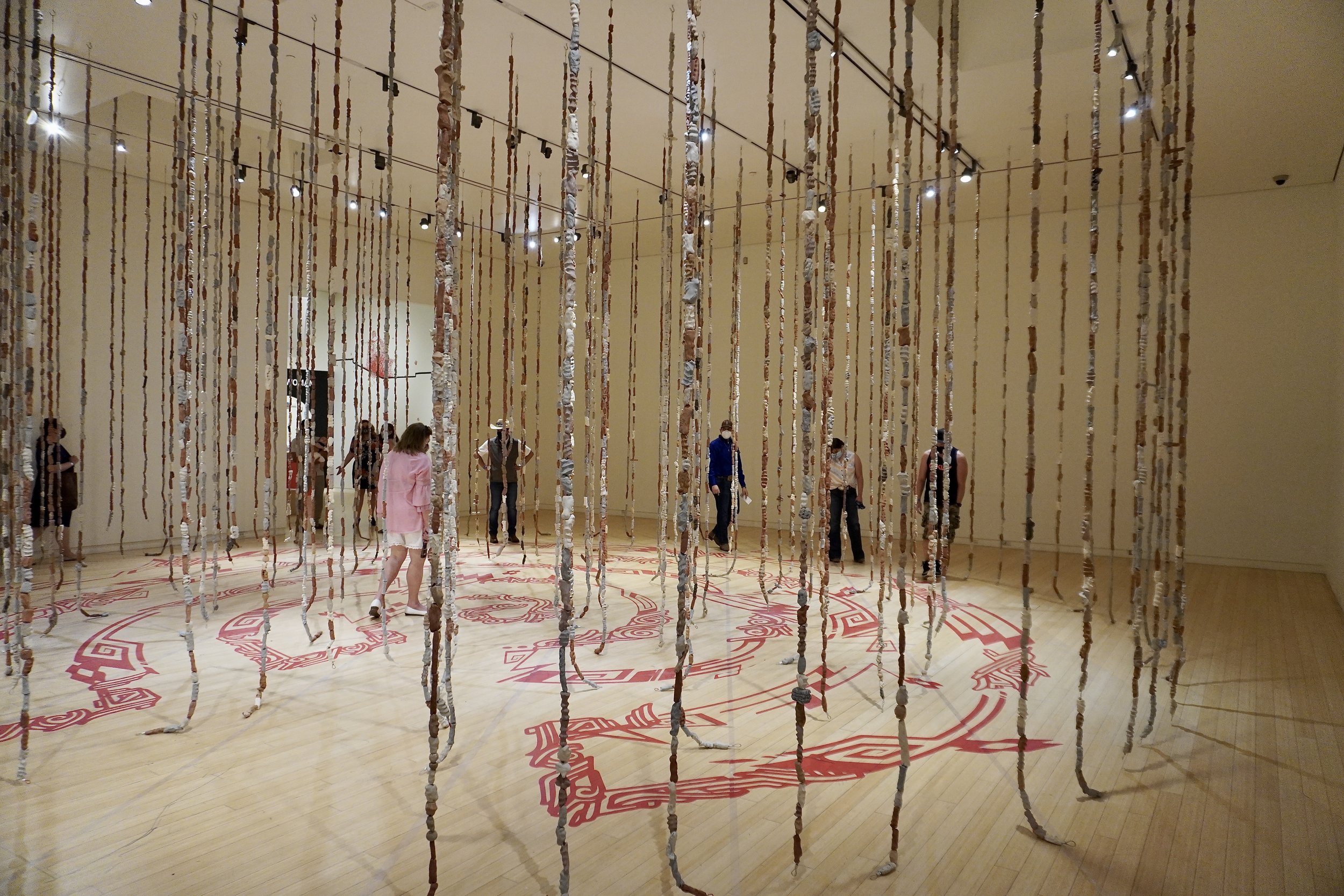
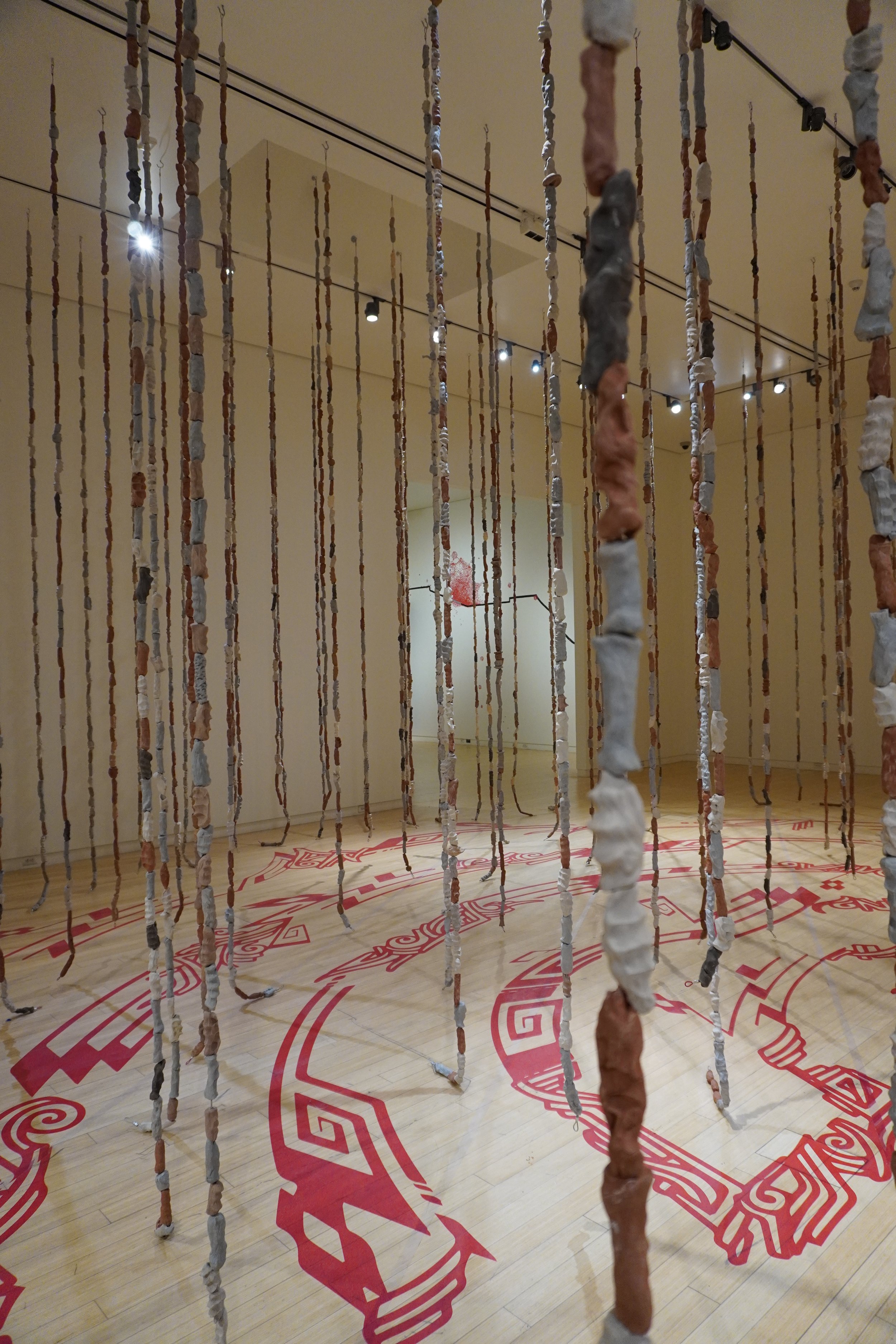
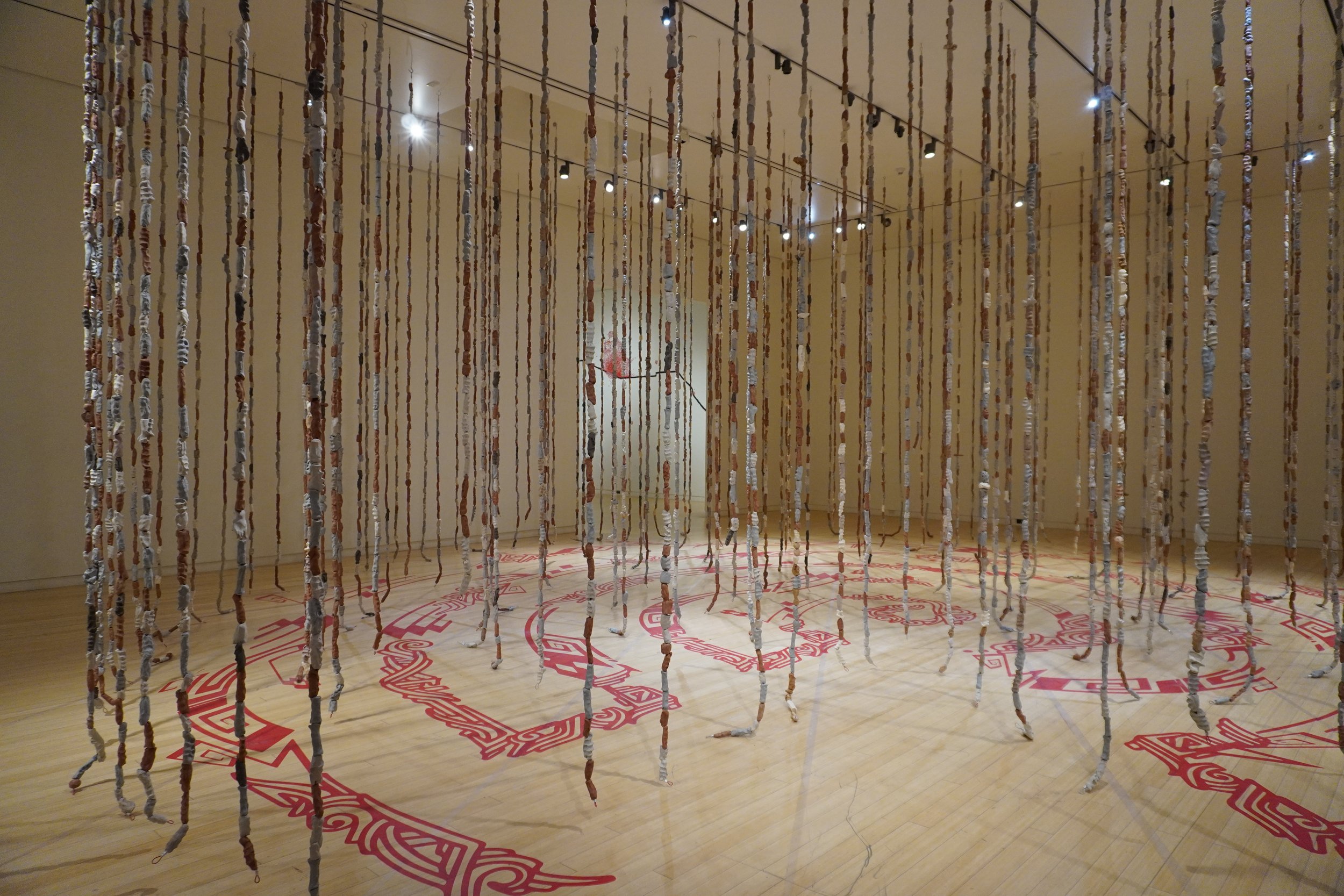
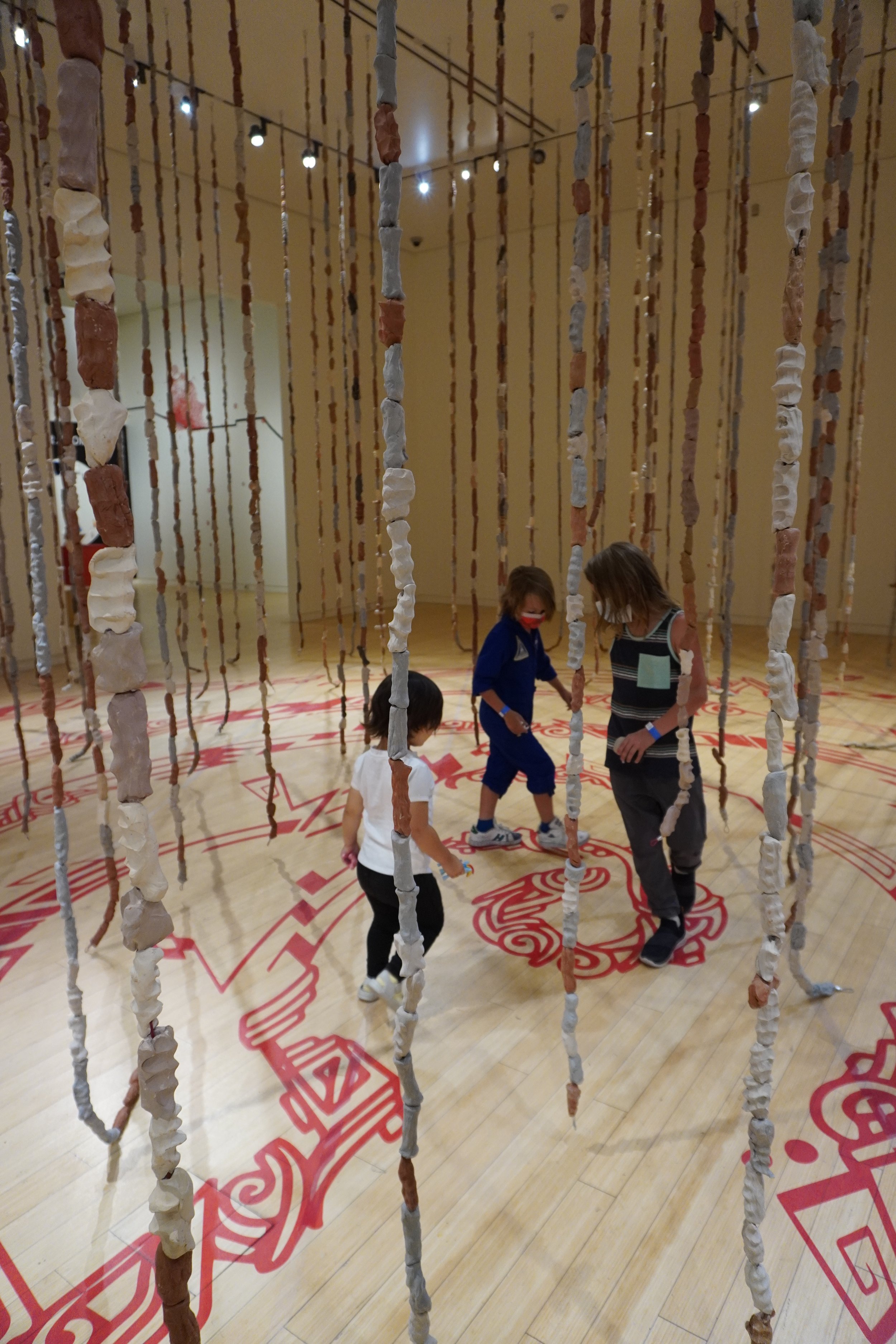
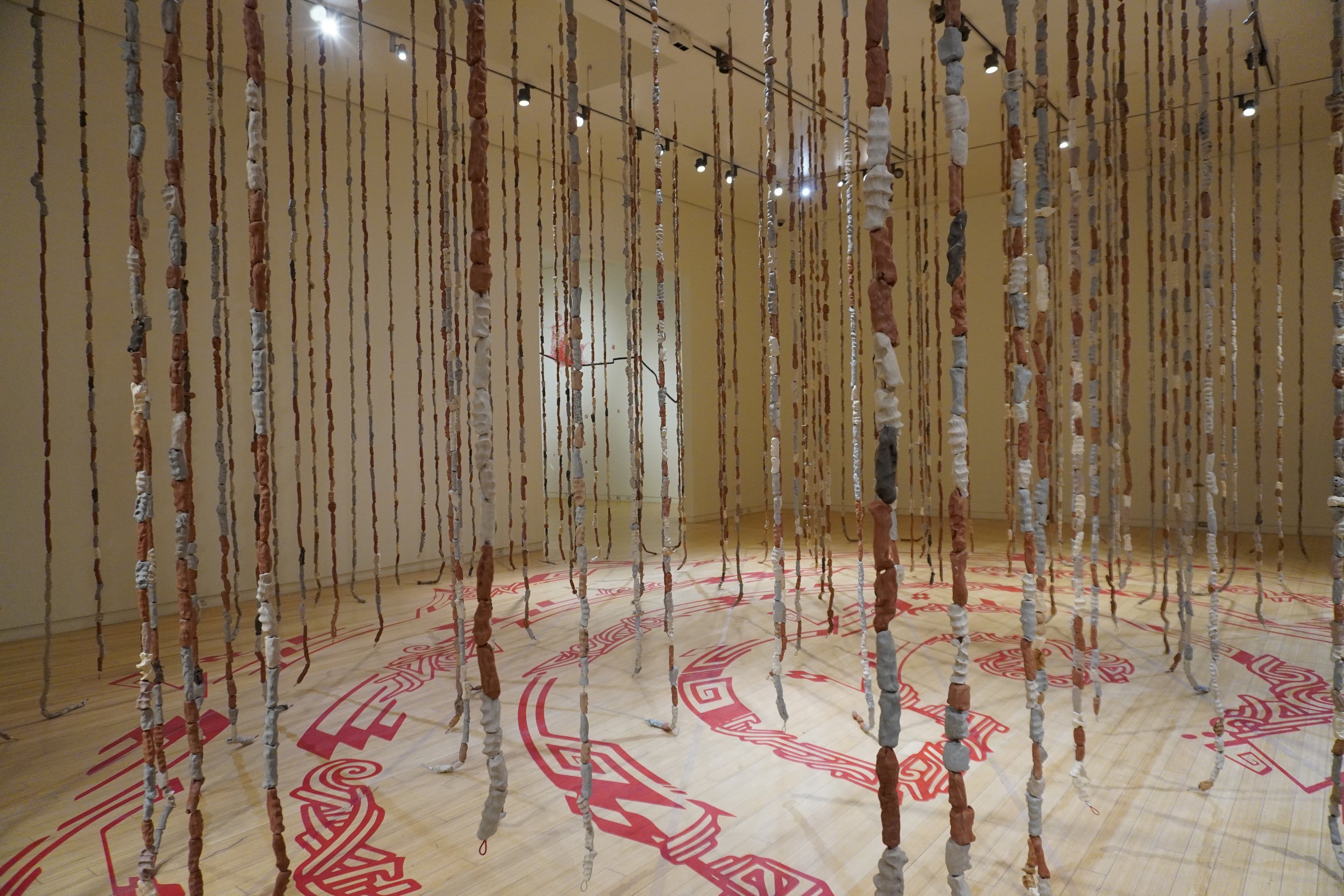
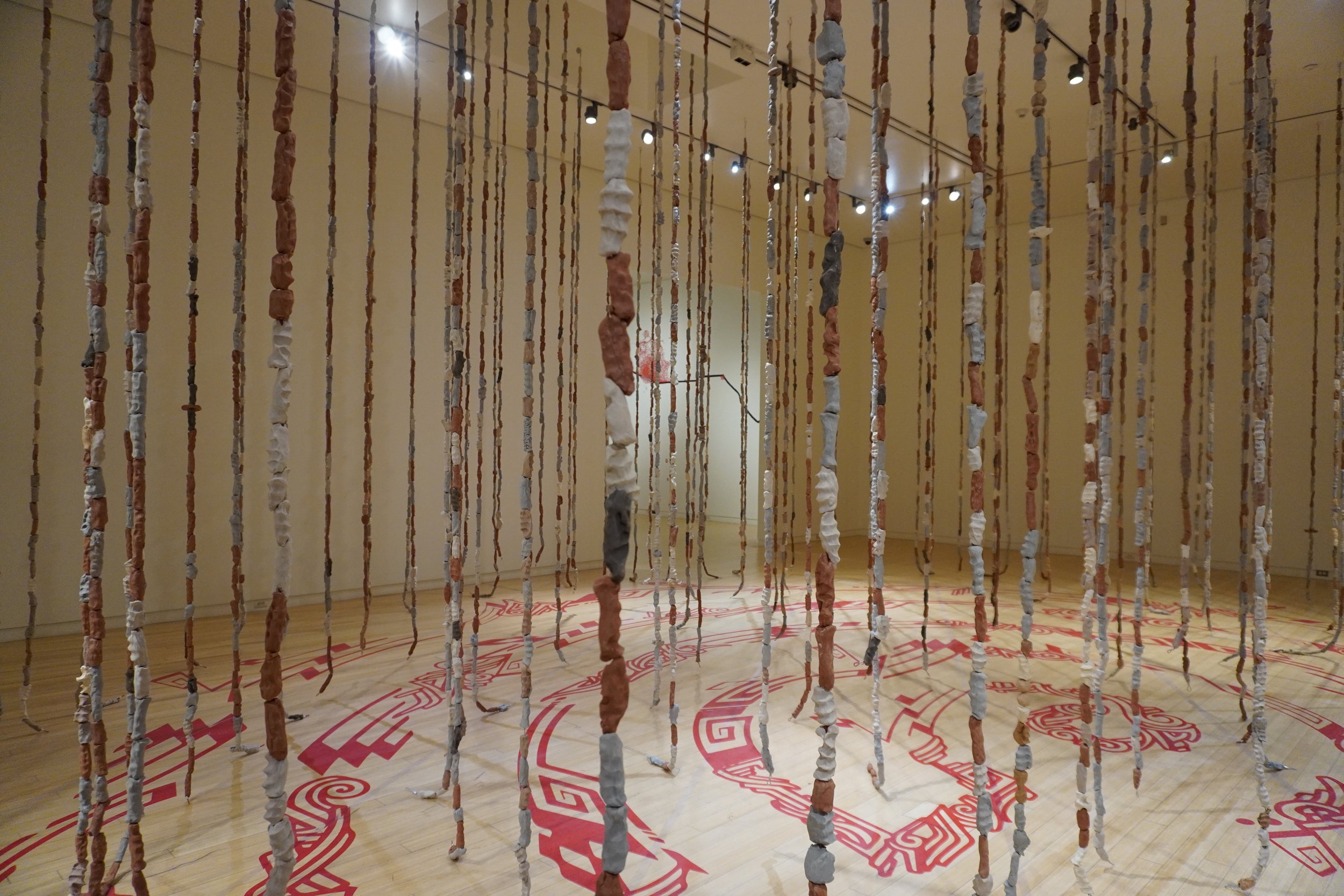
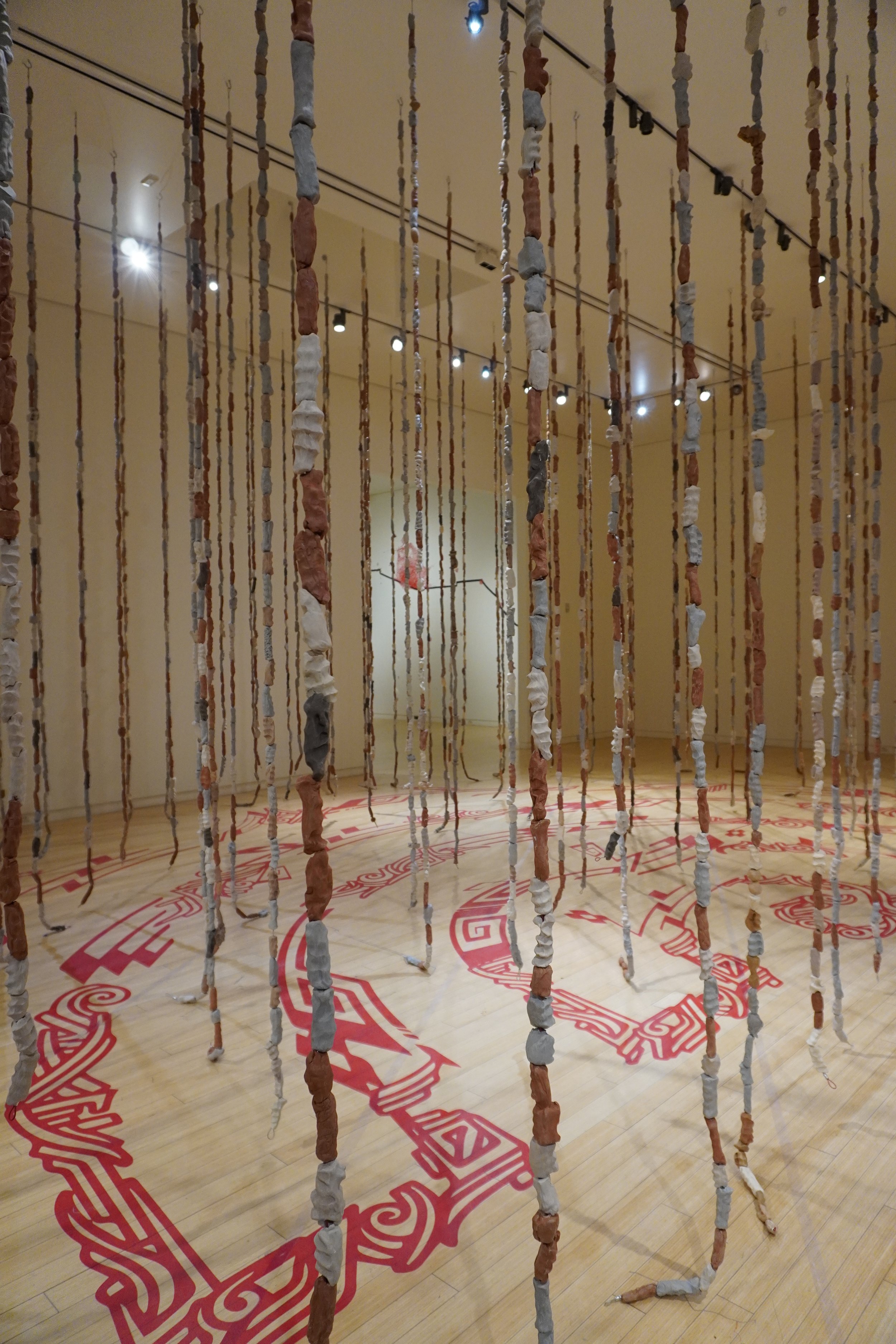
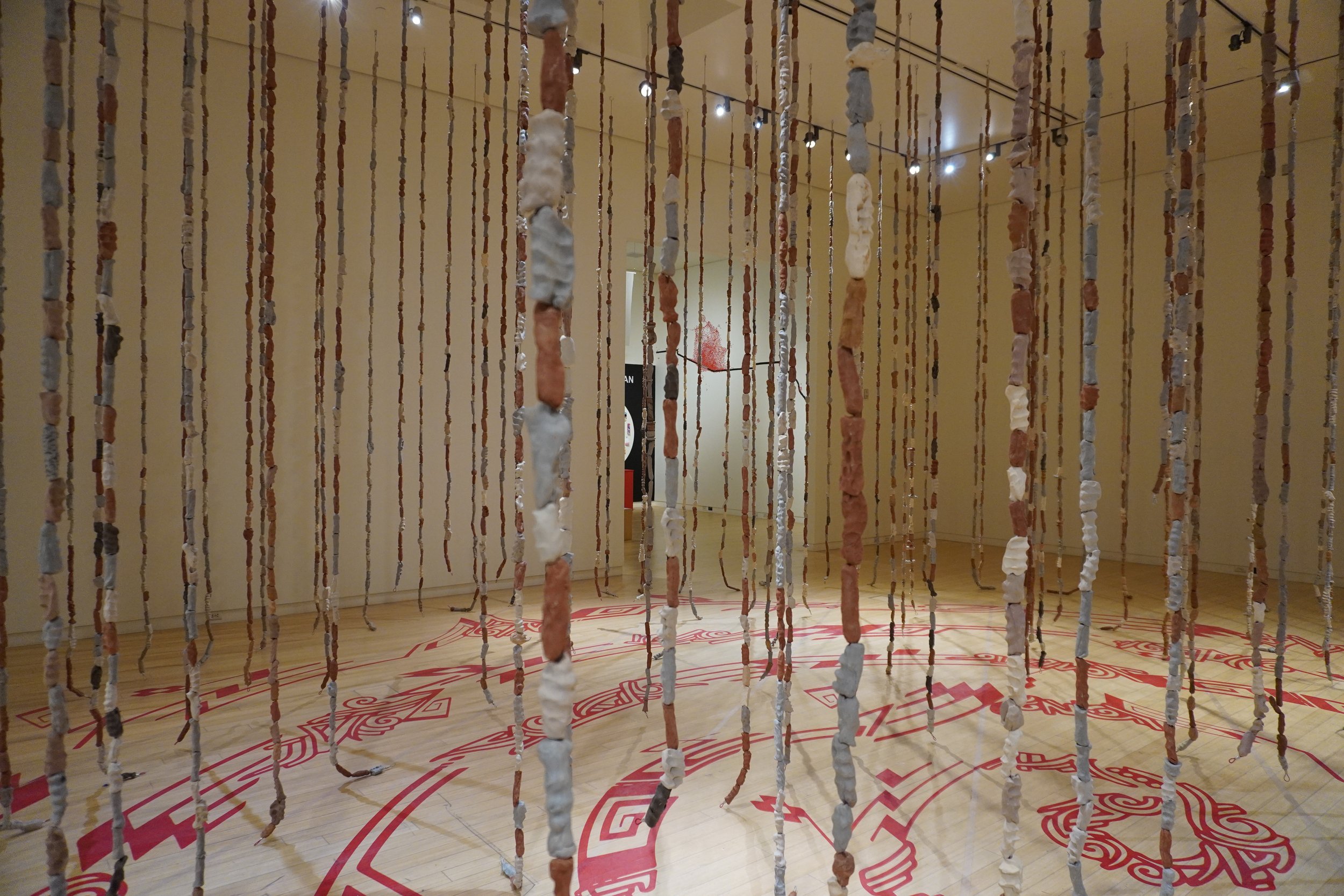
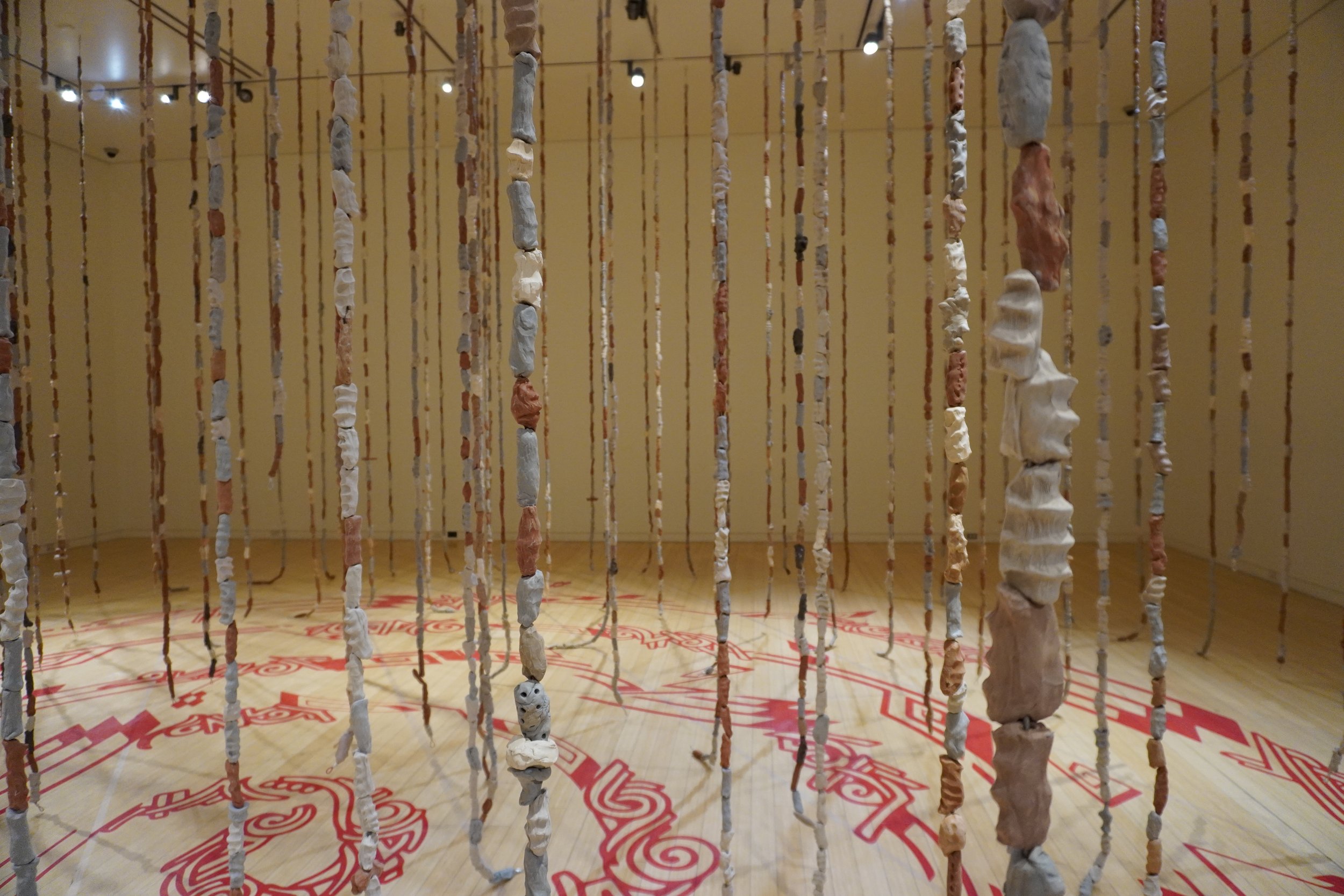

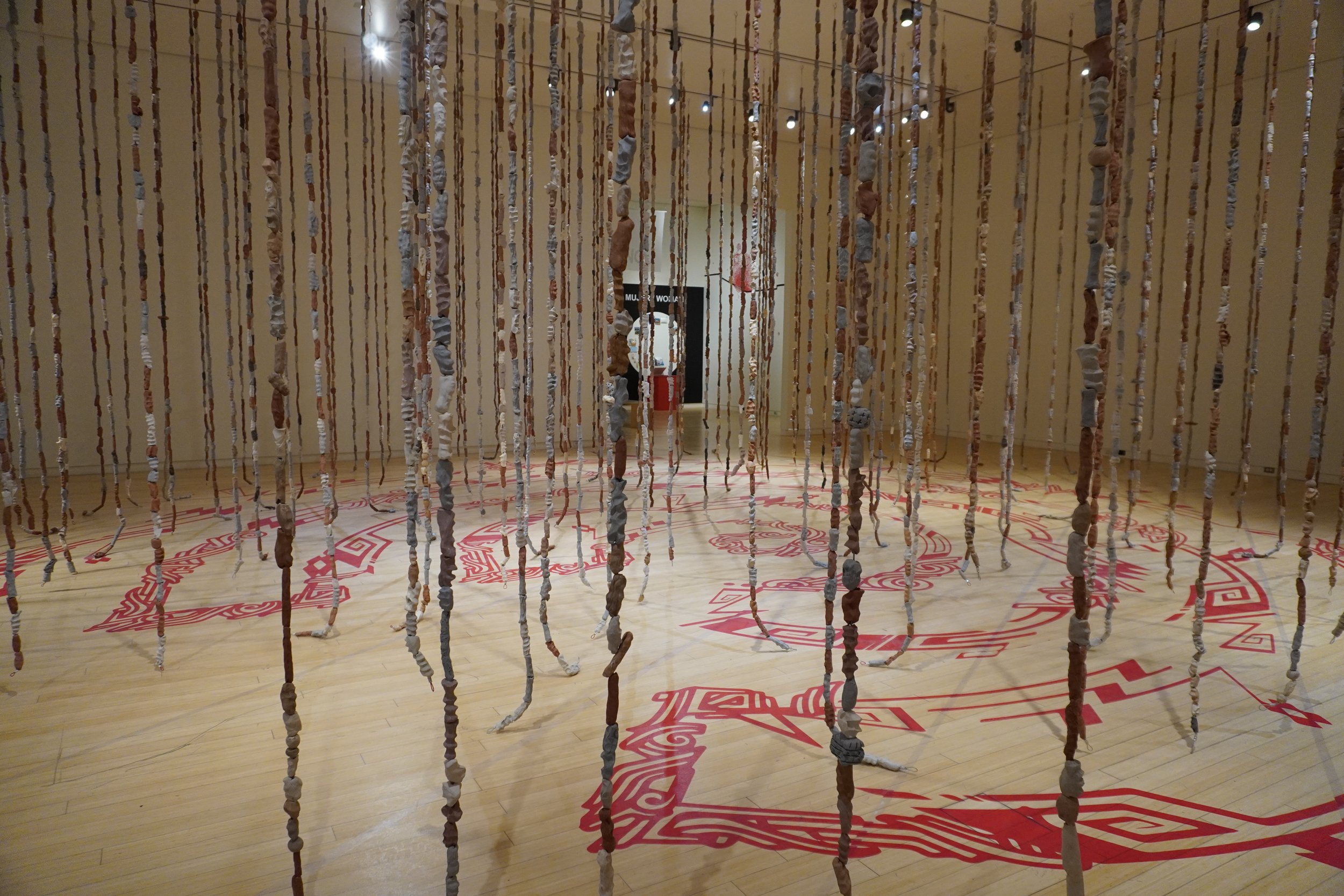
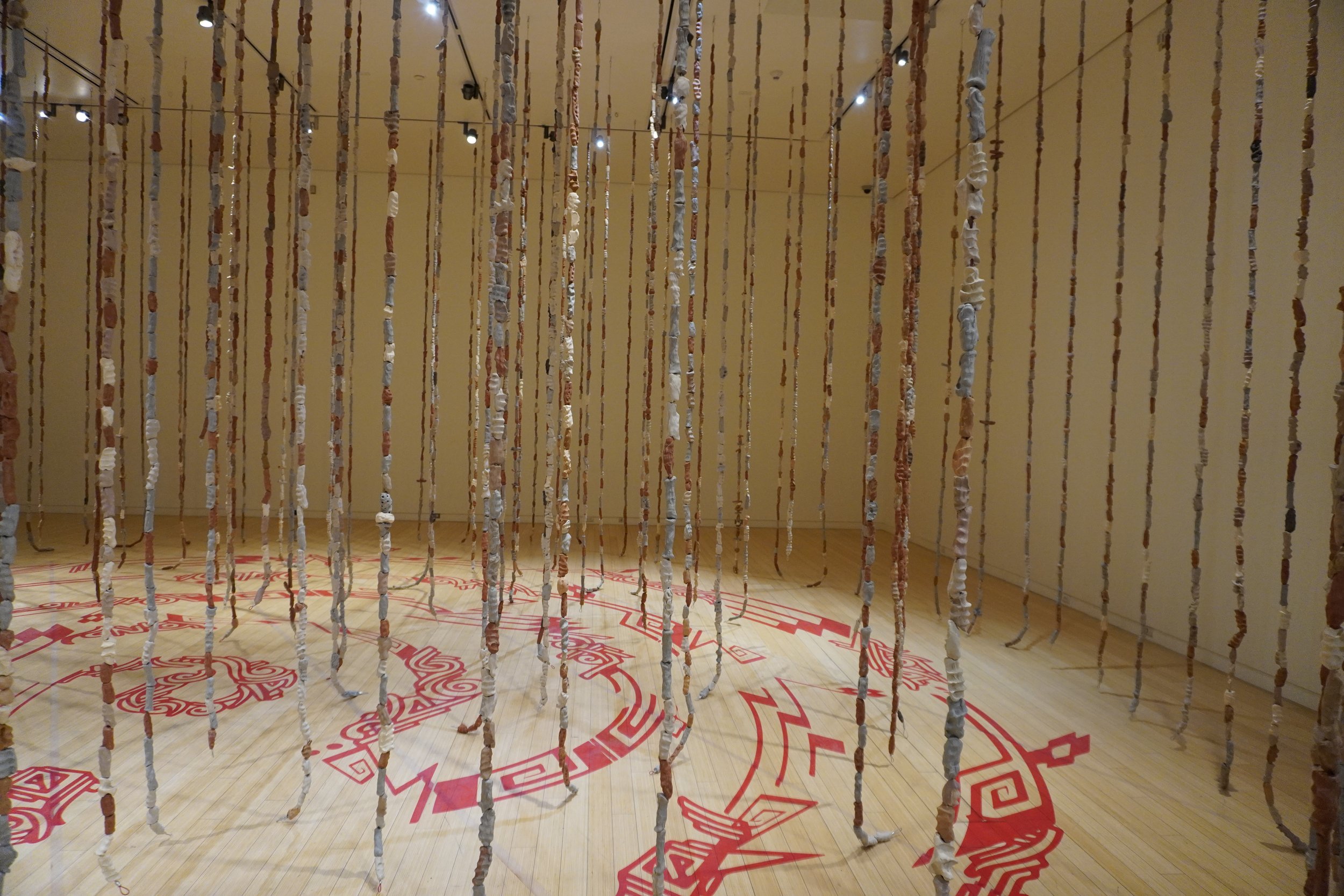
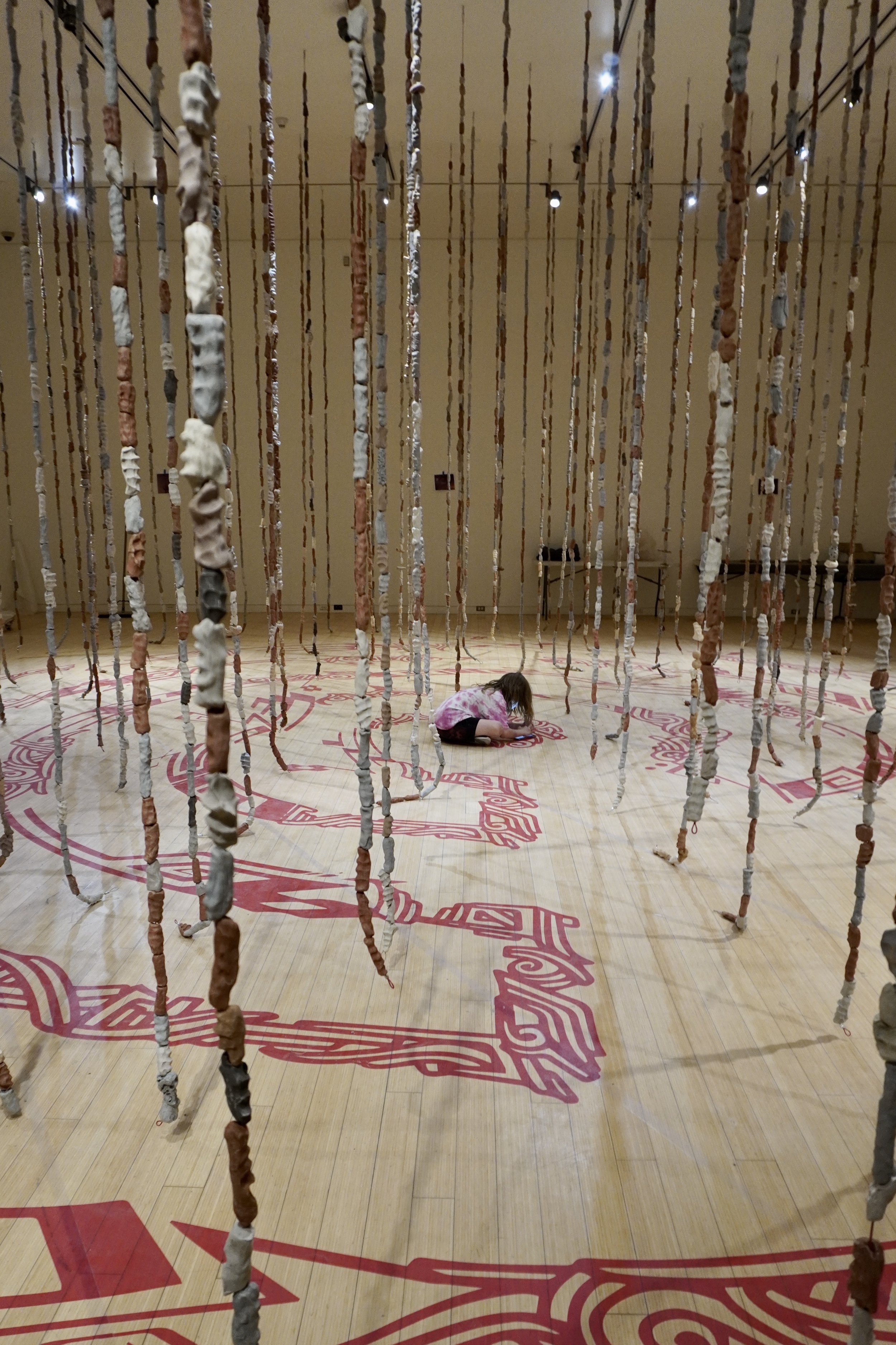
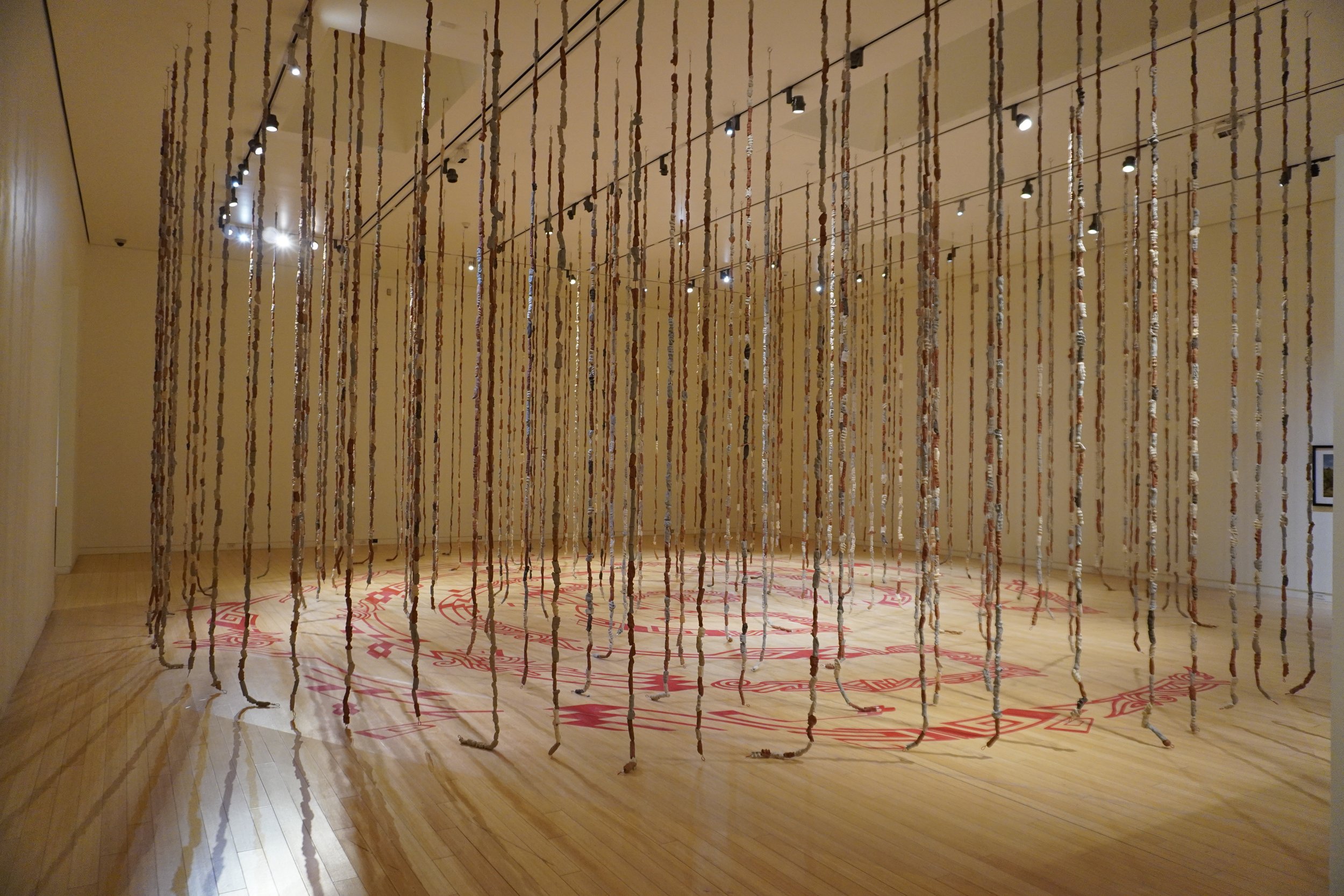
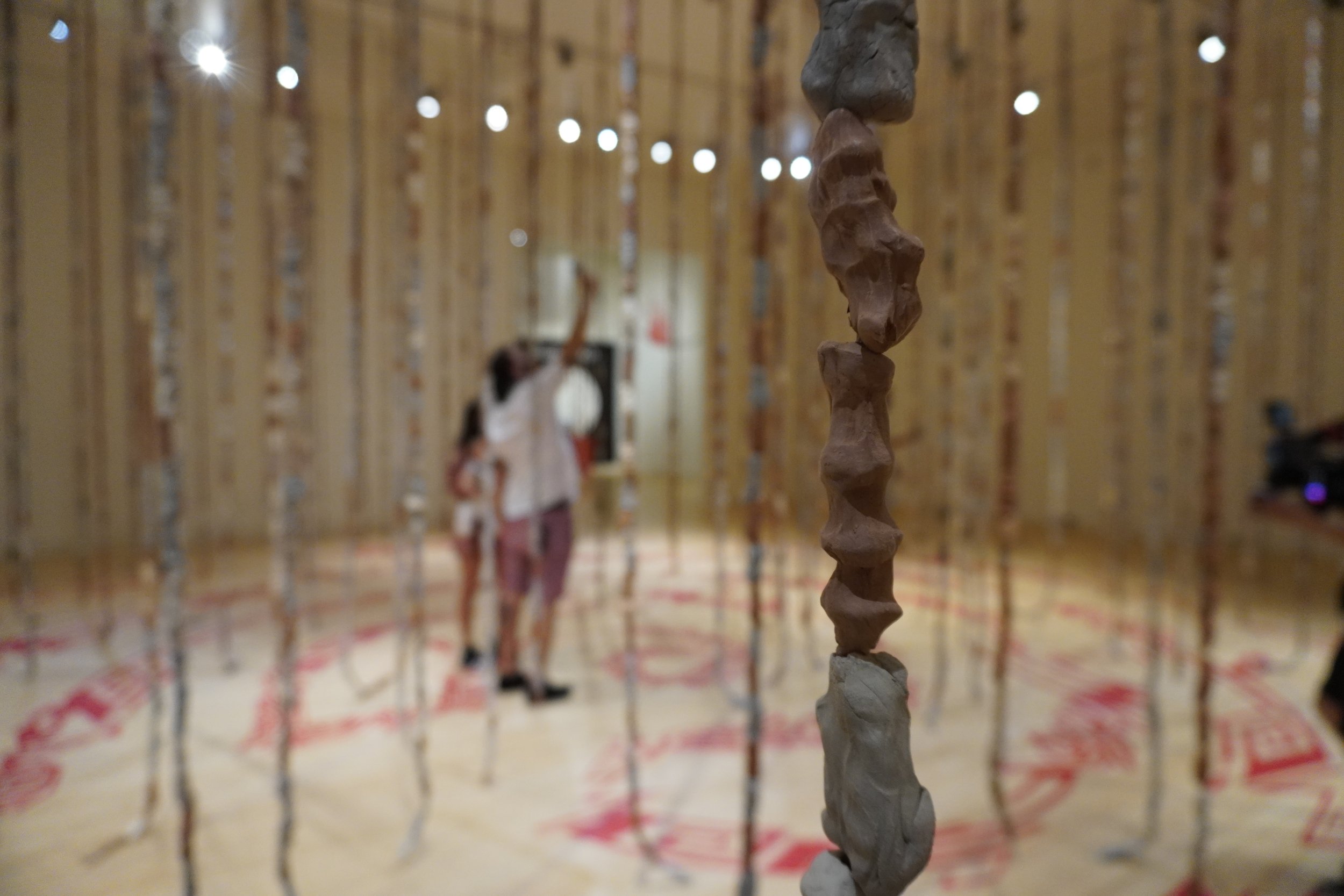
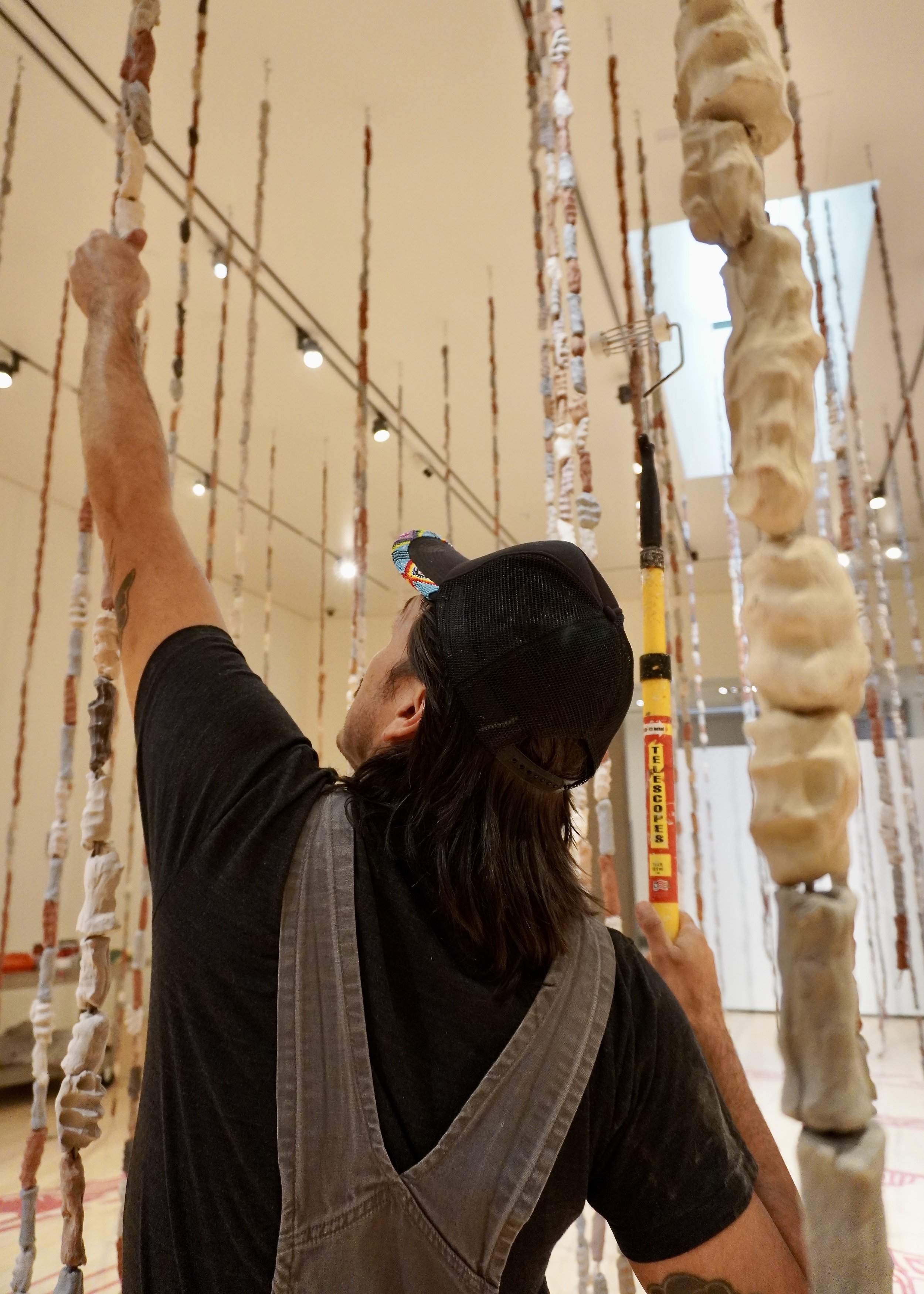
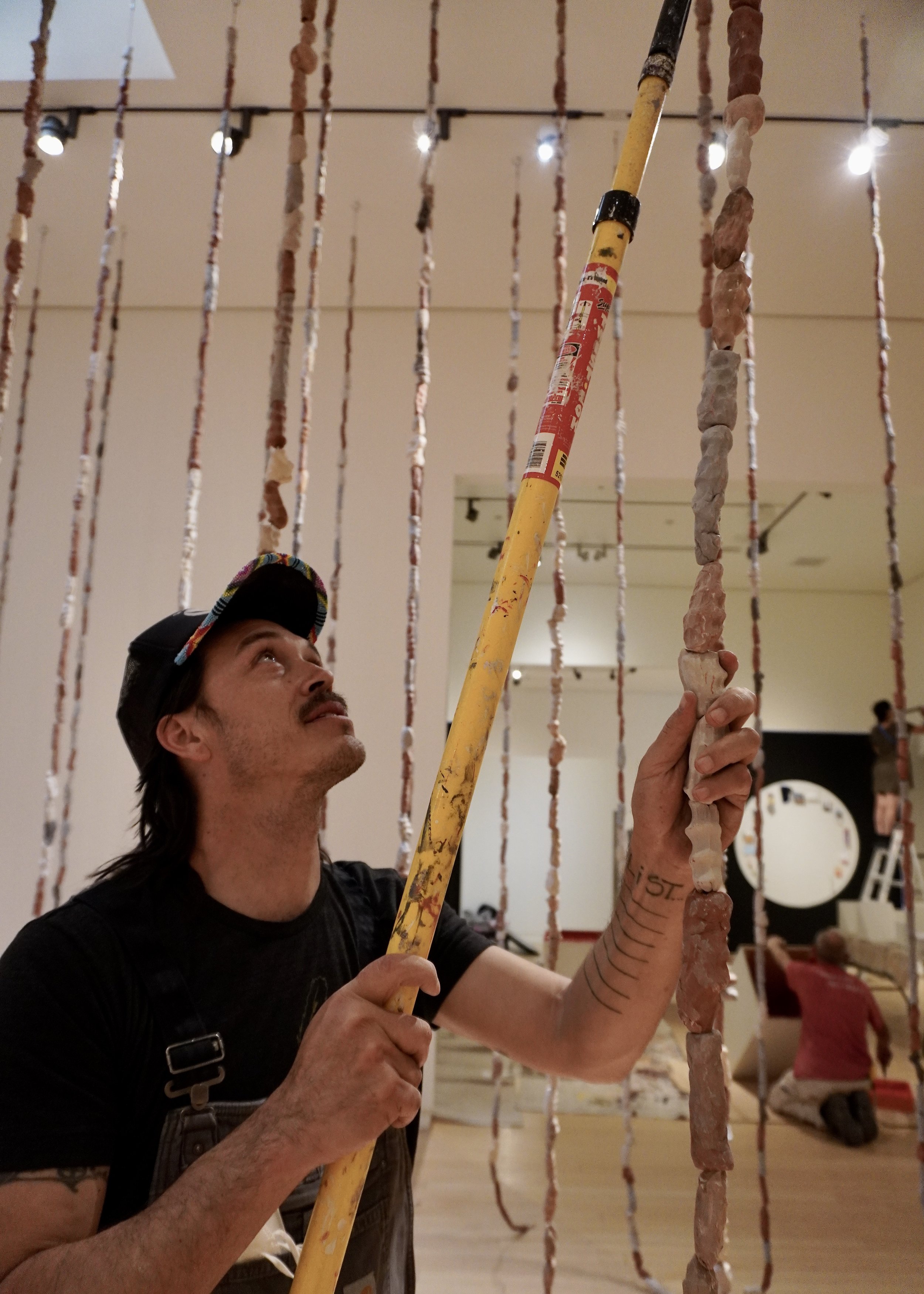
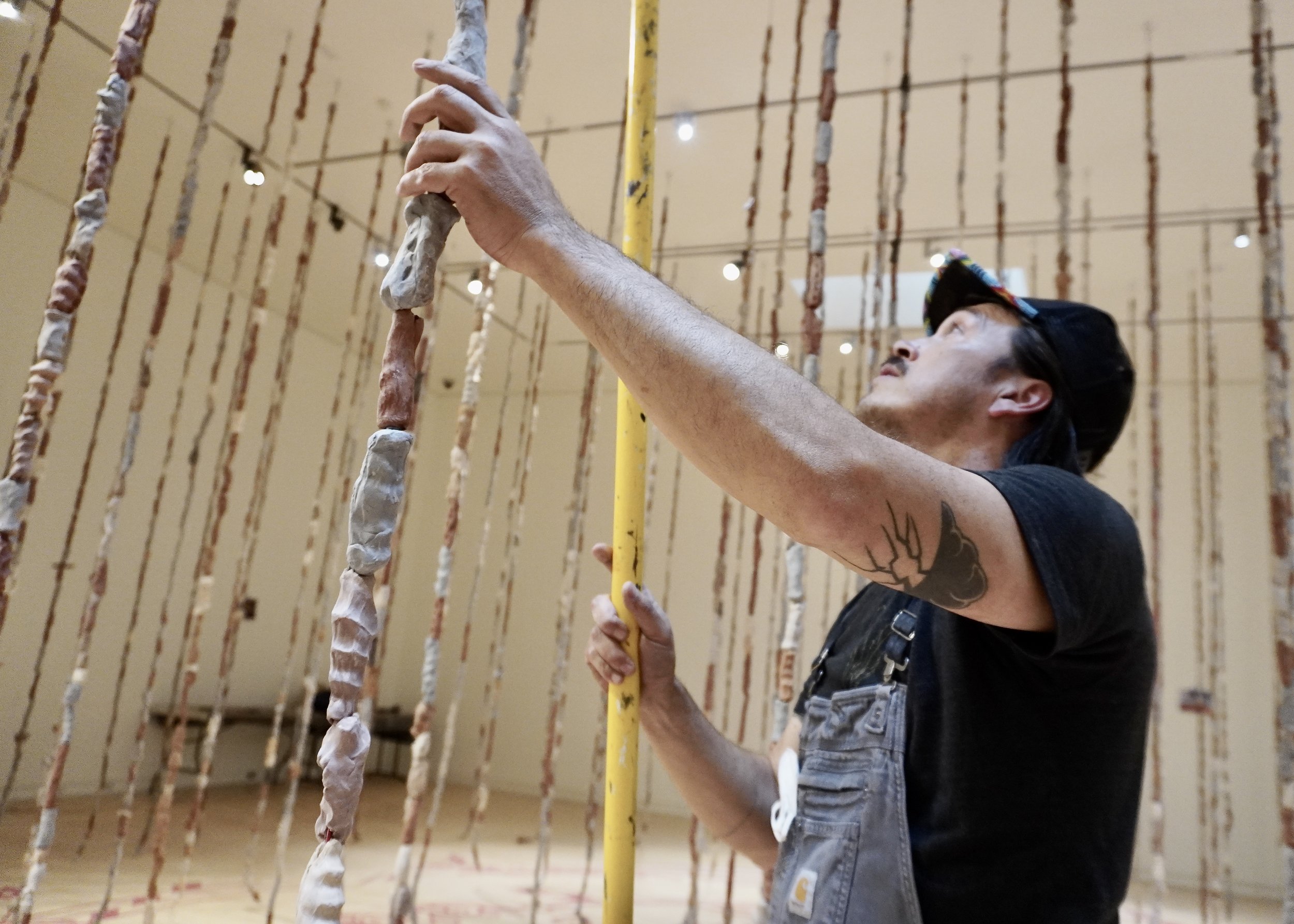


























As massive migratory populations, Indigenous peoples have shared land and knowledge long before European contact, certainly before the notion of militarized borders. The US borders shared with Mexico, Canada, and Russia are straddled by the homelands of over 40 Indigenous Nations, twelve of which have reservations that either touch or are within a mile of the Canadian or Mexican border. Many more have relationships—including kinship ties—that straddle these international boundaries. Geopolitical borders impose arbitrary divisions, interrupt Indigenous sovereignty, disconnect us from relatives, and undermine our agency. Capitalism and colonialism have drawn lines all over our lands, killing our people and our way of being with land and each other. An institution of “othering” has been a central tactic to the colonizing agenda to “divide and conquer.” In fact, settler colonialism has prevented the recognition of kinship between fellow Indigenous communities.
The US/Mexico border is particularly politicized; border patrol tactics divert people from crossing by traditional migration routes, forcing them to cross riskier landscapes such as rivers and deserts. To protect an imaginary line imposed on occupied Indigenous land, death has become a means of political and social control. According to US Border Patrol statistics, approximately 7,209 migrant lives have been lost along the southwestern border over the past 20 years. This is vastly underestimated. The deaths of Indigenous migrants and the lack of data is relevant to other travesties practiced on Indigenous lands such as industrial extraction and the epidemic murder of our Indigenous women, girls, queer and trans community members. The tribes directly affected by the US/Mexico border include Pascua Yaqui, Yaqui in Mexico, Tohono O'odham, Tohono O'odham in Mexico, Cocopah-Pima, Gila River, Akimel O'odham, Pai Pai, Kumeyaay, Lipan Apache, Jumano-Apache, Quechan, TIgua, Kickapoo, Mescalero Apache and Hualapai.
Something To Hold Onto responds to the unfathomable number of deaths that occur during migration. The death toll numbers are huge; how do we have considerate conversations around these everyday traumas? To better make sense of this, artist Cannupa Hanska Luger enlisted communities to generate a massive amount of objects that can physically represent this data. For this project, the artist asked people to contribute in creating over 7,209 hand-made beads which were then strung together in a large-scale ephemeral and immersive art installation.
“Through a collection of singular objects, I hope to translate these incomprehensible data sets into a tangible quantity, a physical scale, a spatial reality.” -Cannupa Hanska Luger
Each bead acknowledges someone who has died through the denial of their migratory rights. But moreover, each bead is embedded with a fist-print, acknowledging the witness of an individual maker, of someone who cares. Each object represents an individual, is made by an individual, and takes up real physical space. Rather than a massive single number, the work represents a multitude of individuals. Seeing this as a volume of handcrafted beads triggers something in people’s brains; it makes the unthinkable more real and makes connections through shared empathy. When strung together with other individuals, the line becomes an entity of its own. It becomes a symbol of solidarity. It illustrates how a line not only divides but also unifies.
While contributing to a monumental artwork, we are also creating something to hold onto. With aims to honor the lives lost, the work also celebrates the effort it takes to collectively affect change. It represents a magnitude of care. The unfired clay beads represent a quantifiable number of people who have a hand in shaping communities, driven by the desire for something to hold onto -- in their morality, humanity and relationships. Something To Hold Onto actively engages those working towards Indigenous sovereignty and the liberation of Indigenous migration routes.
When each unfired clay bead is strung together, the strand becomes a symbol of solidarity, illustrating how a line not only divides but also unifies.
Something To Hold Onto is the second project in Cannupa Hanska Luger’s Counting Coup series which aims to utilize social collaboration to re-humanize large and abstract data through the process of creating handmade objects.
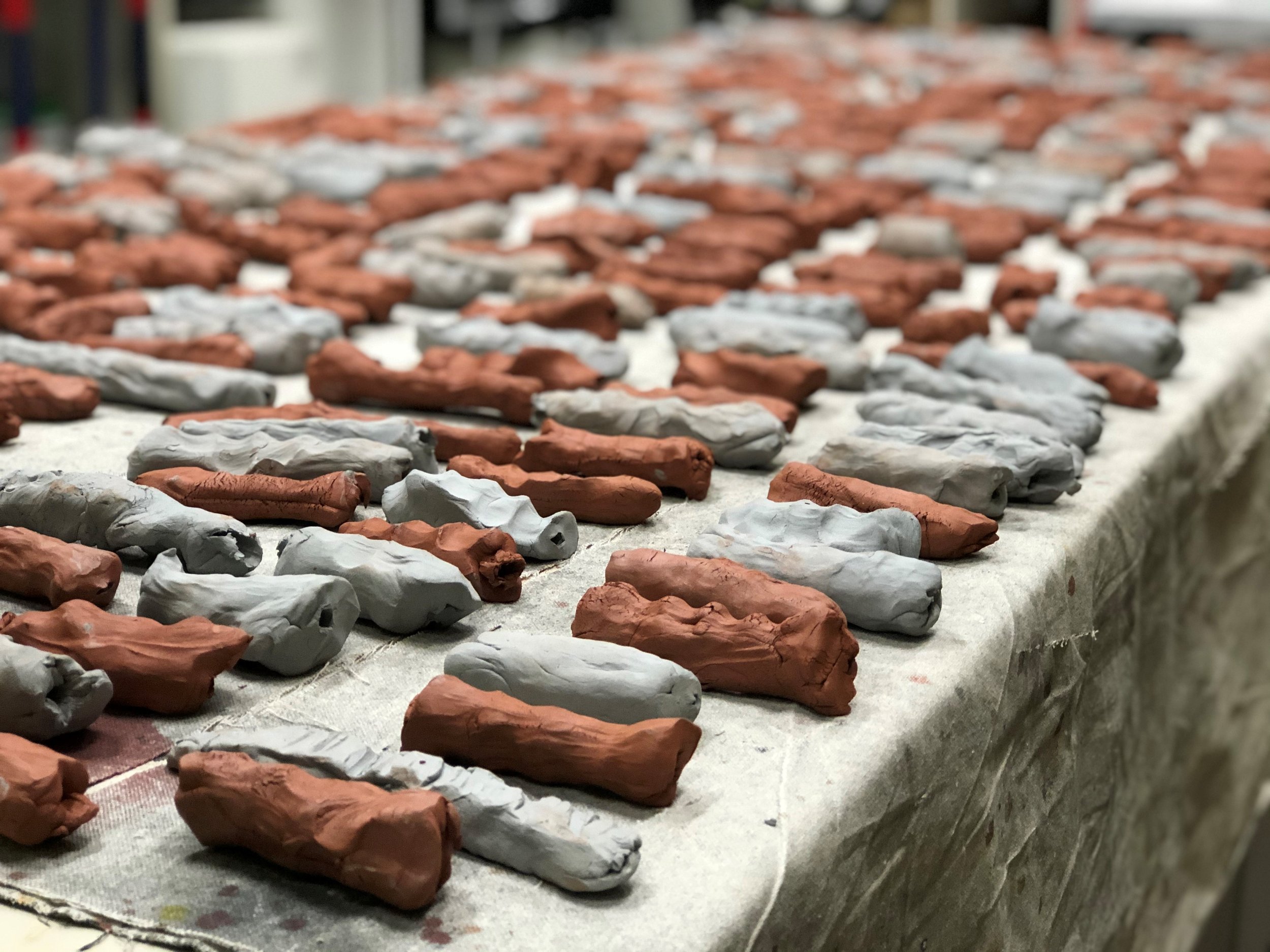
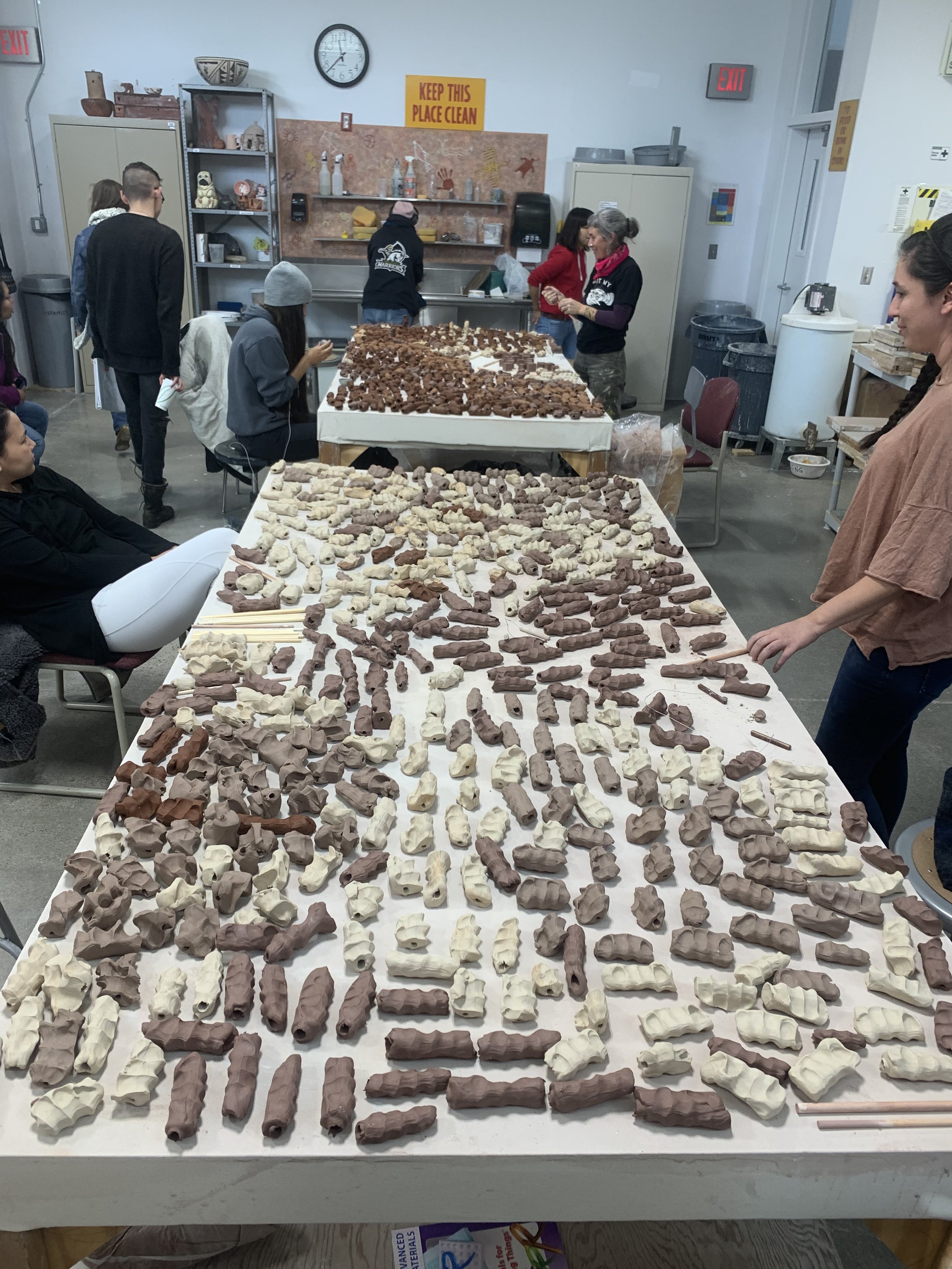
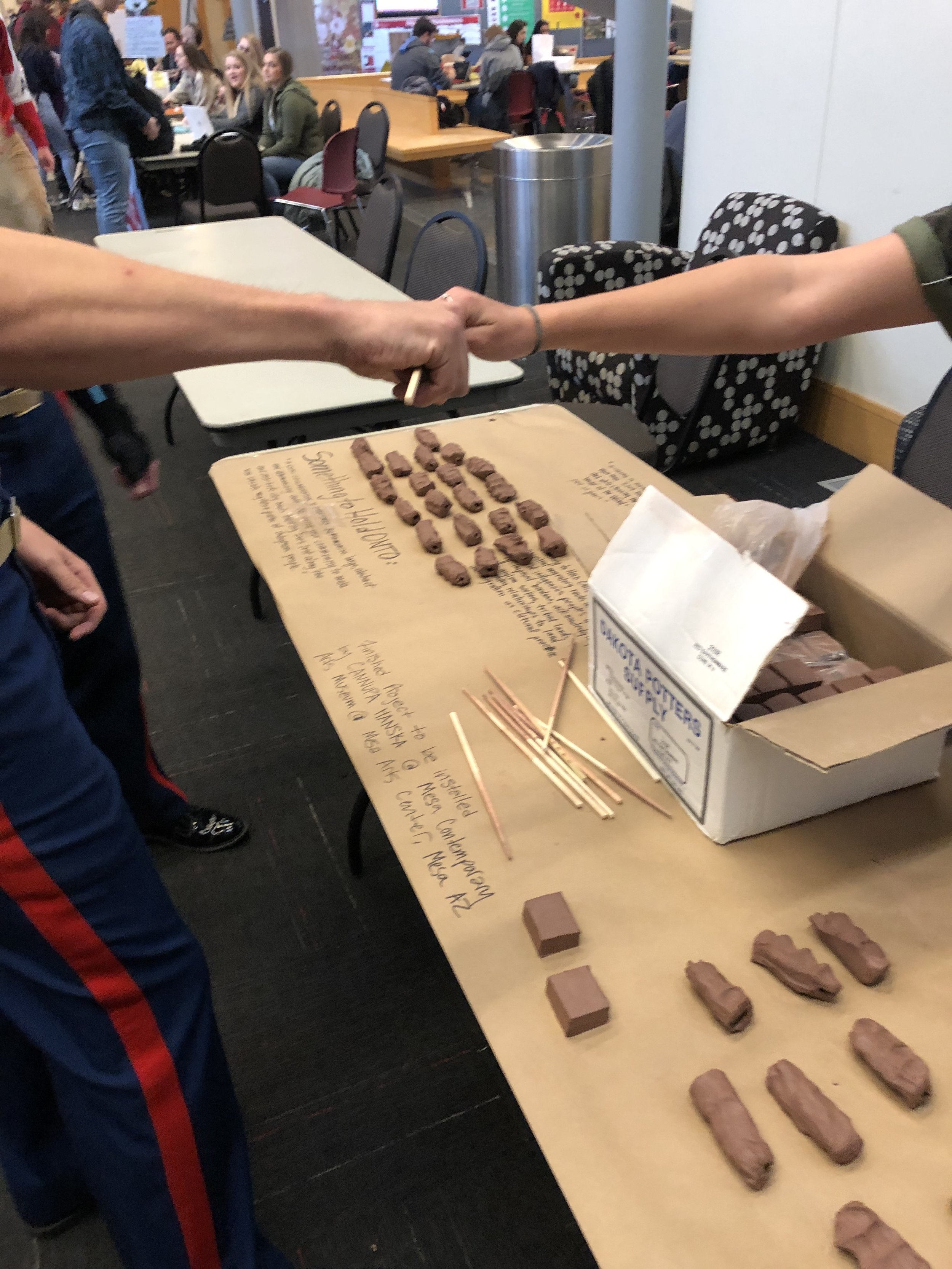
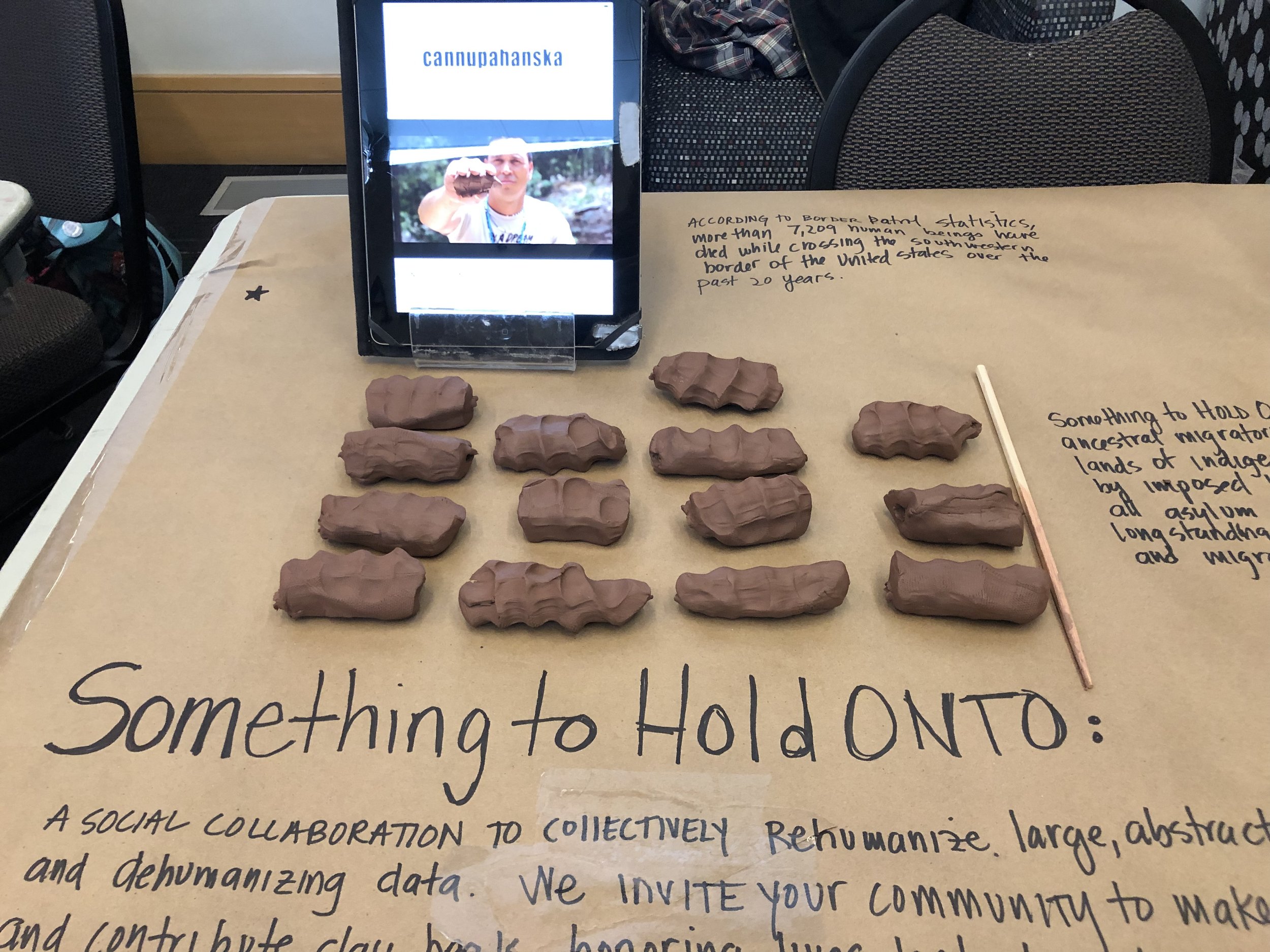

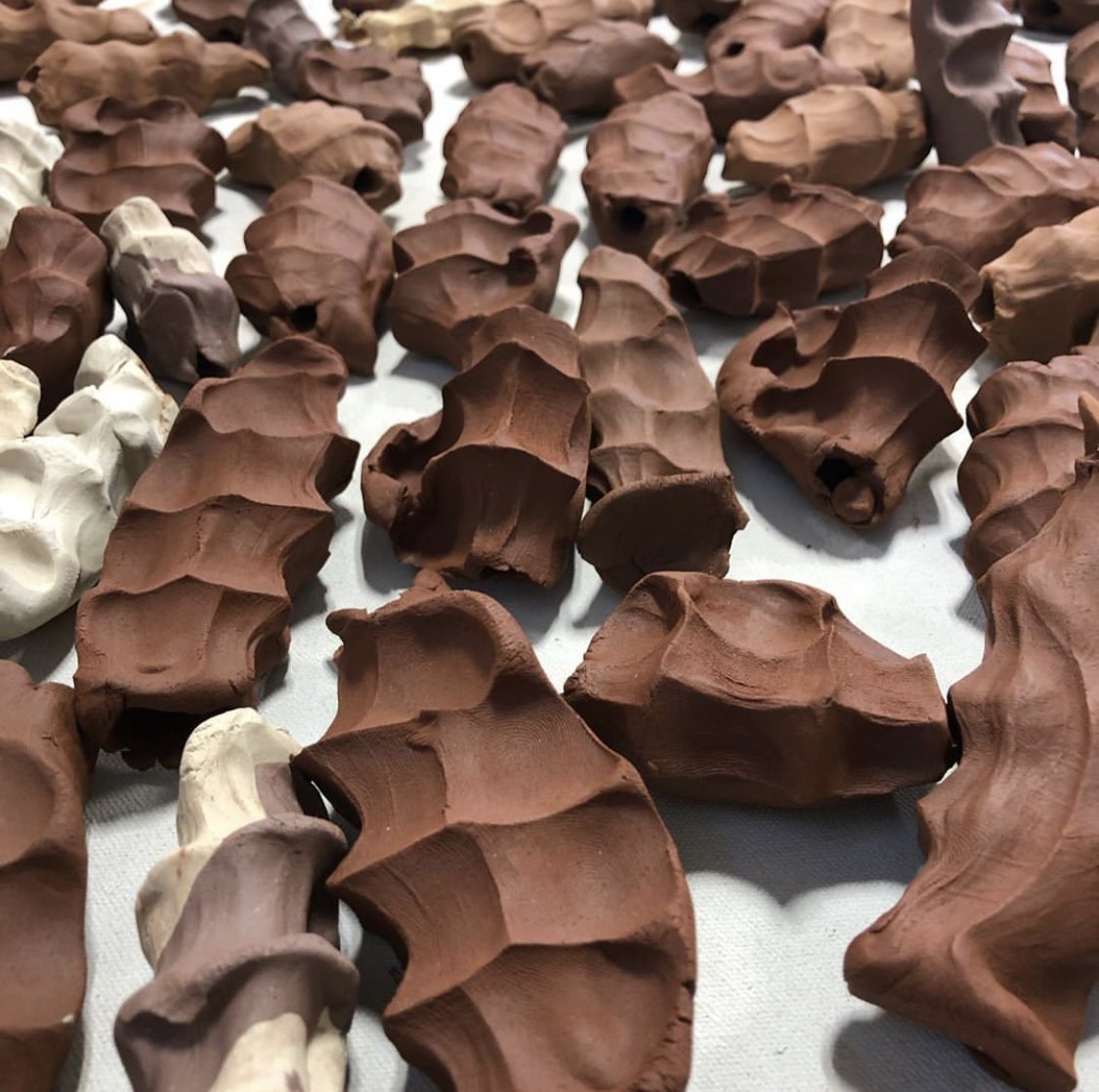


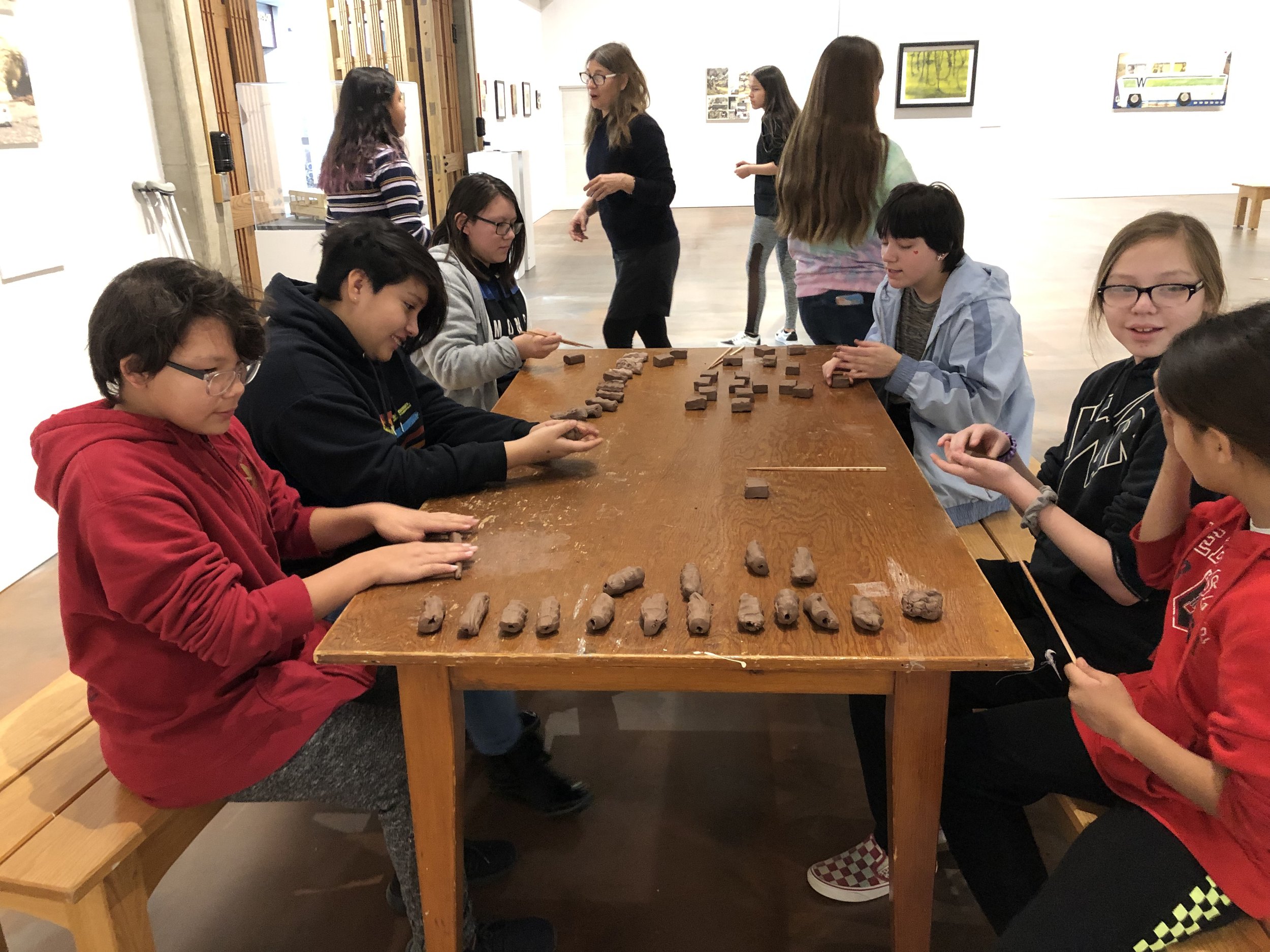

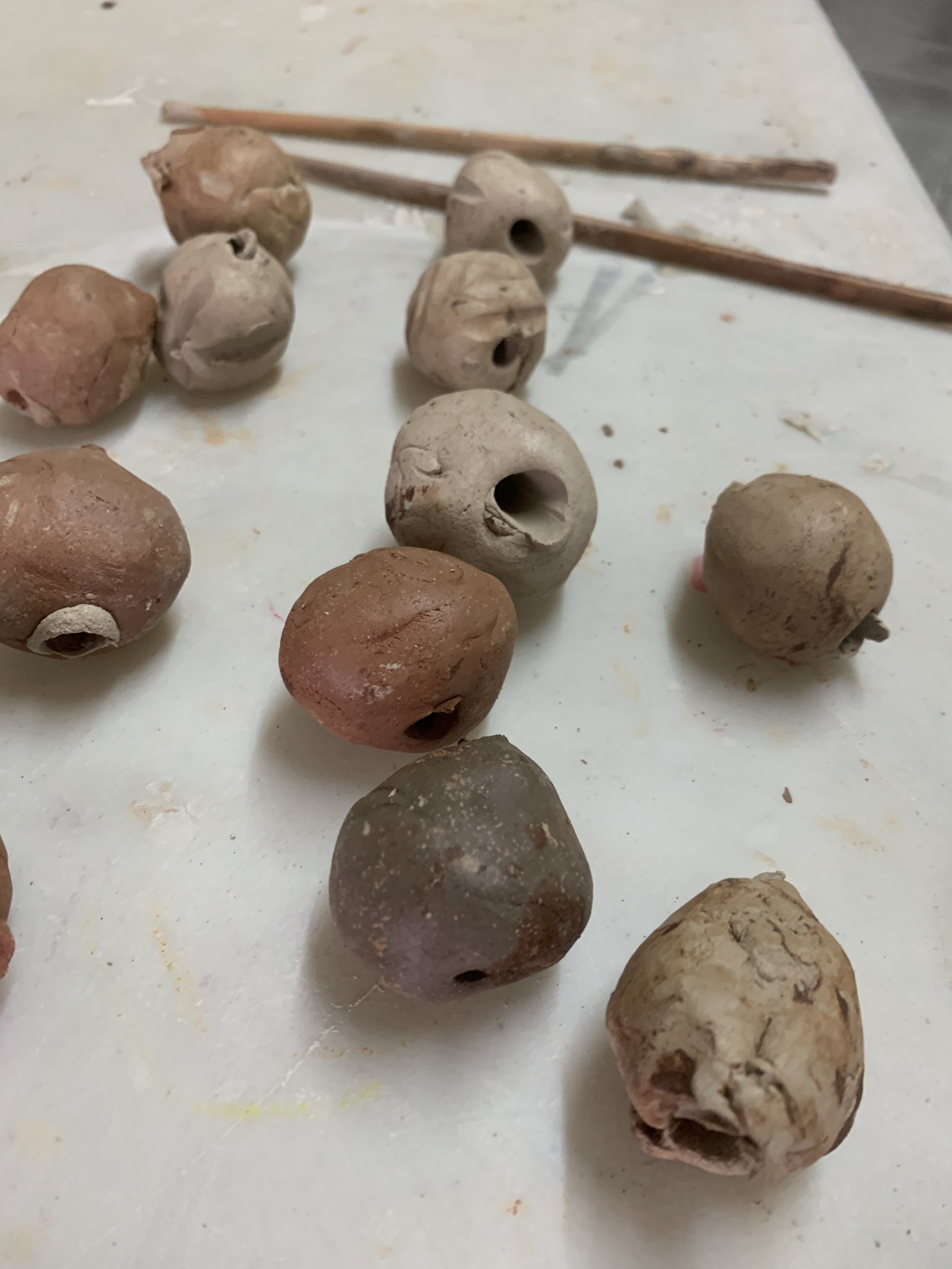

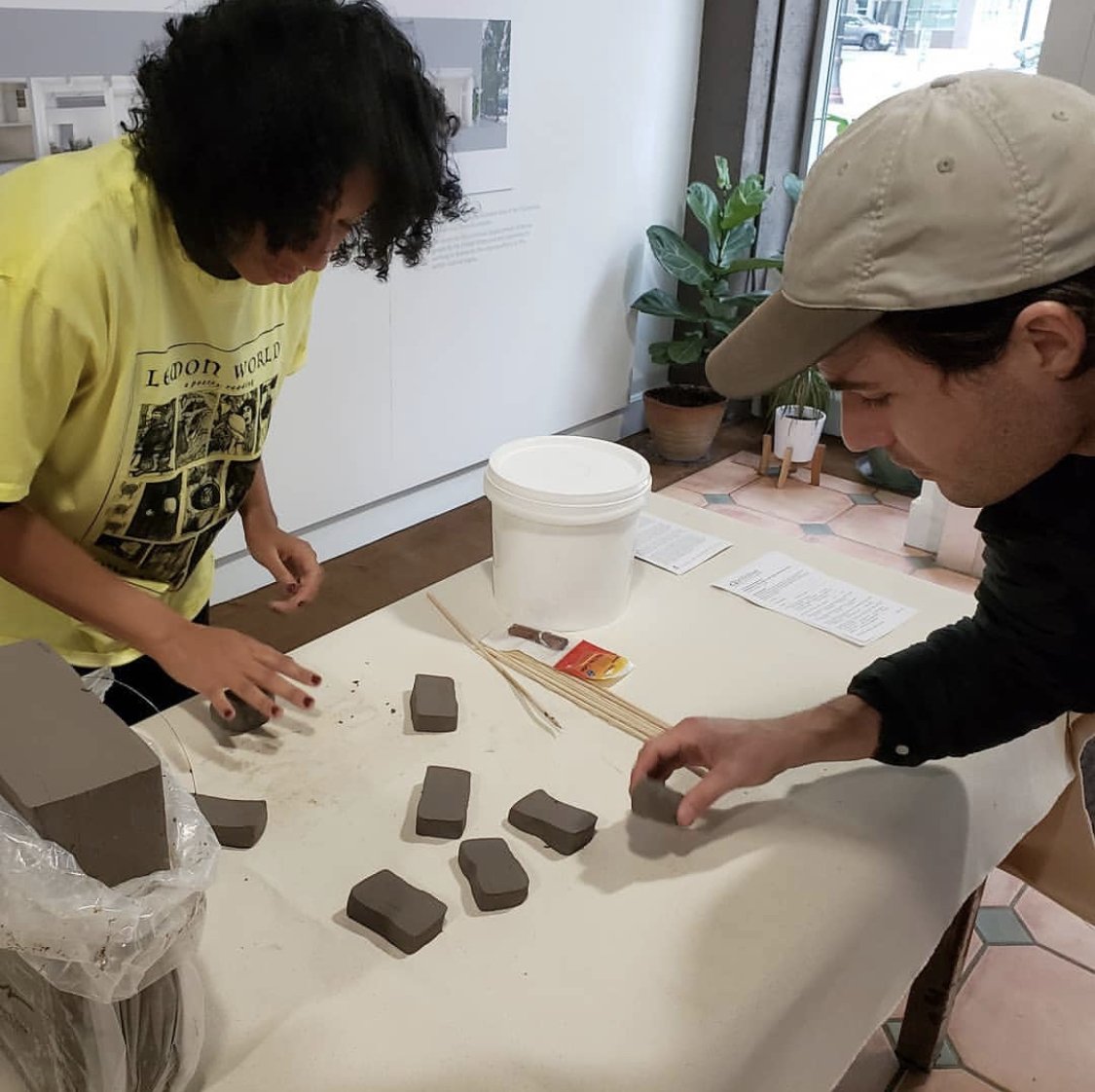
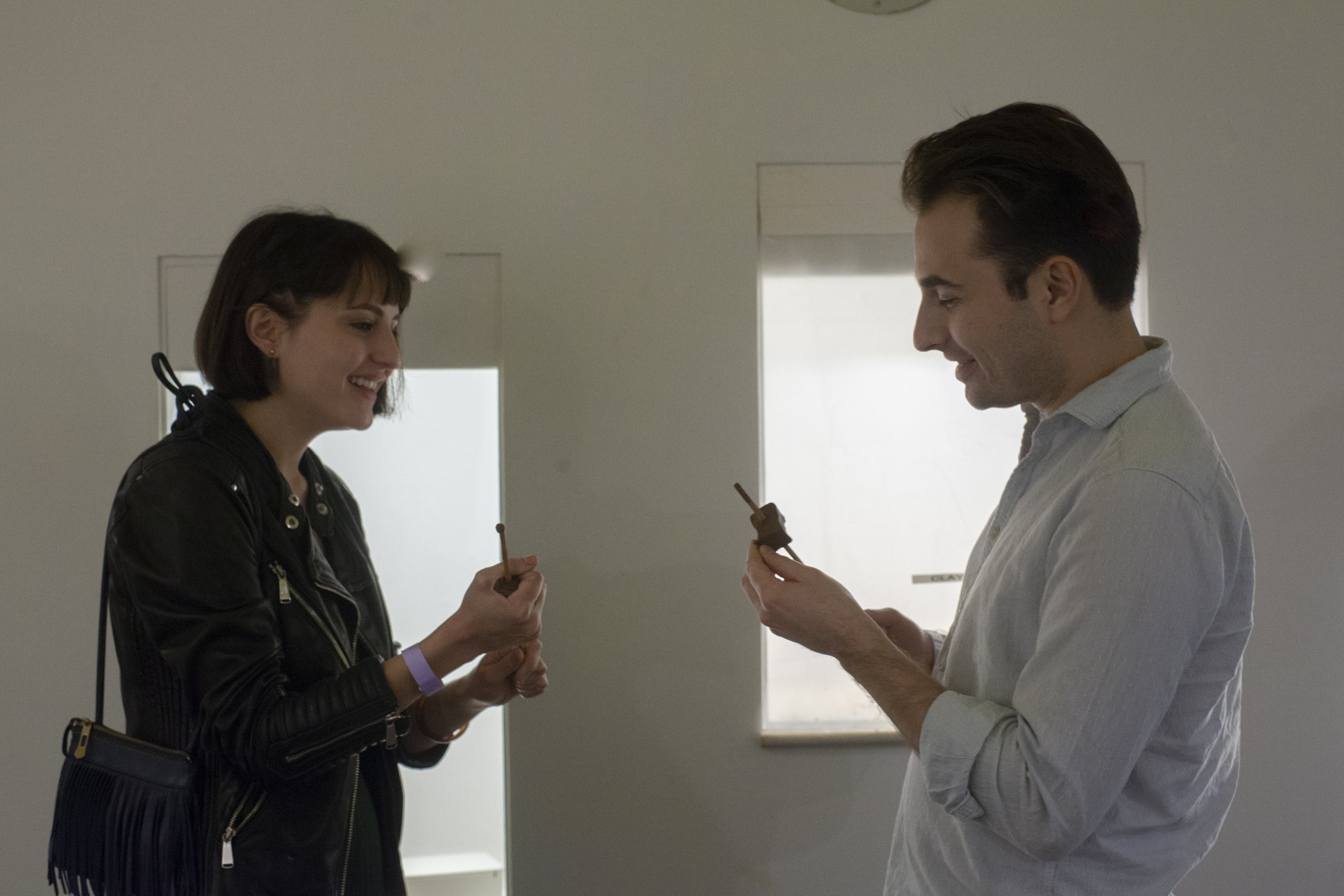
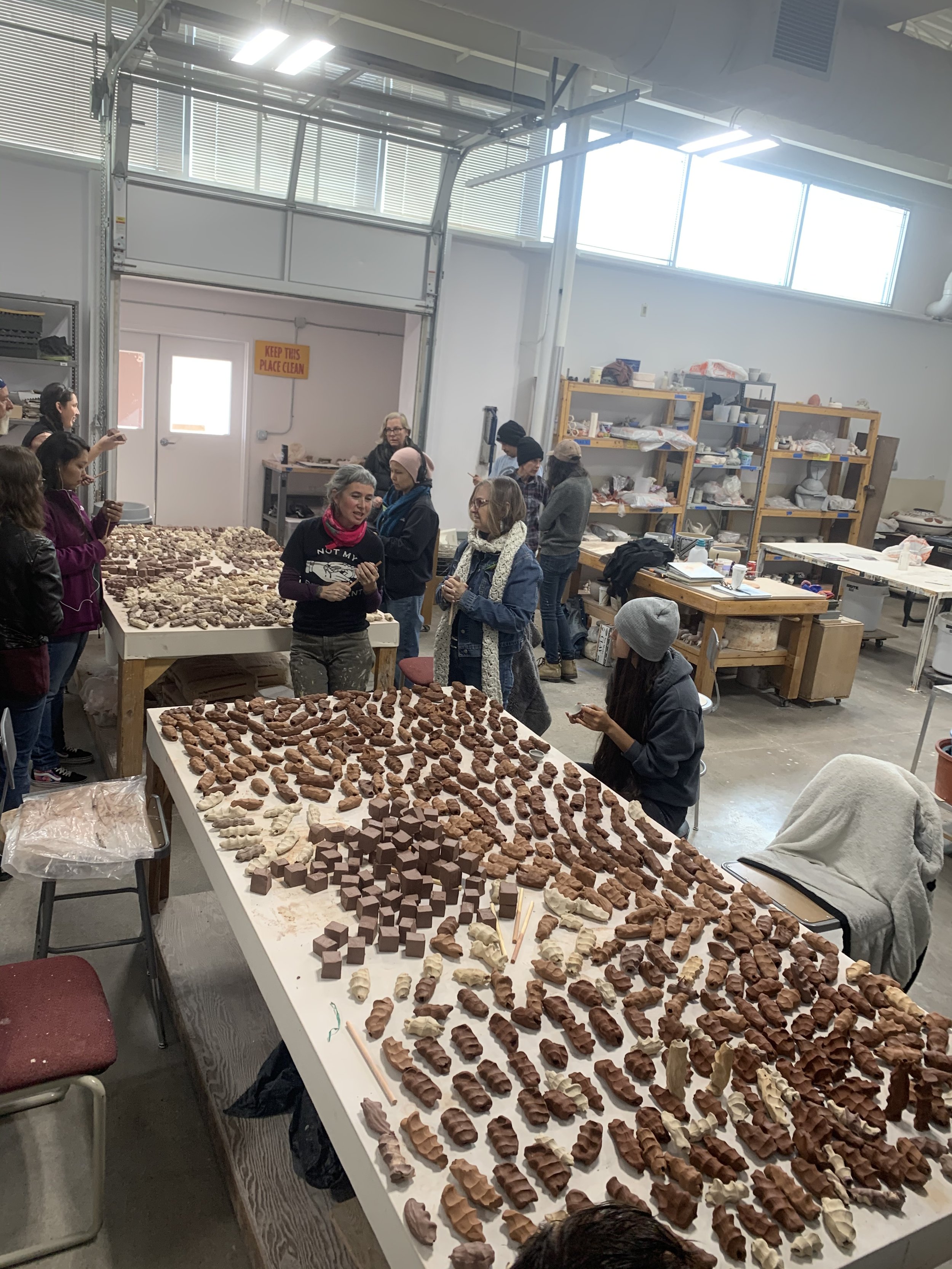
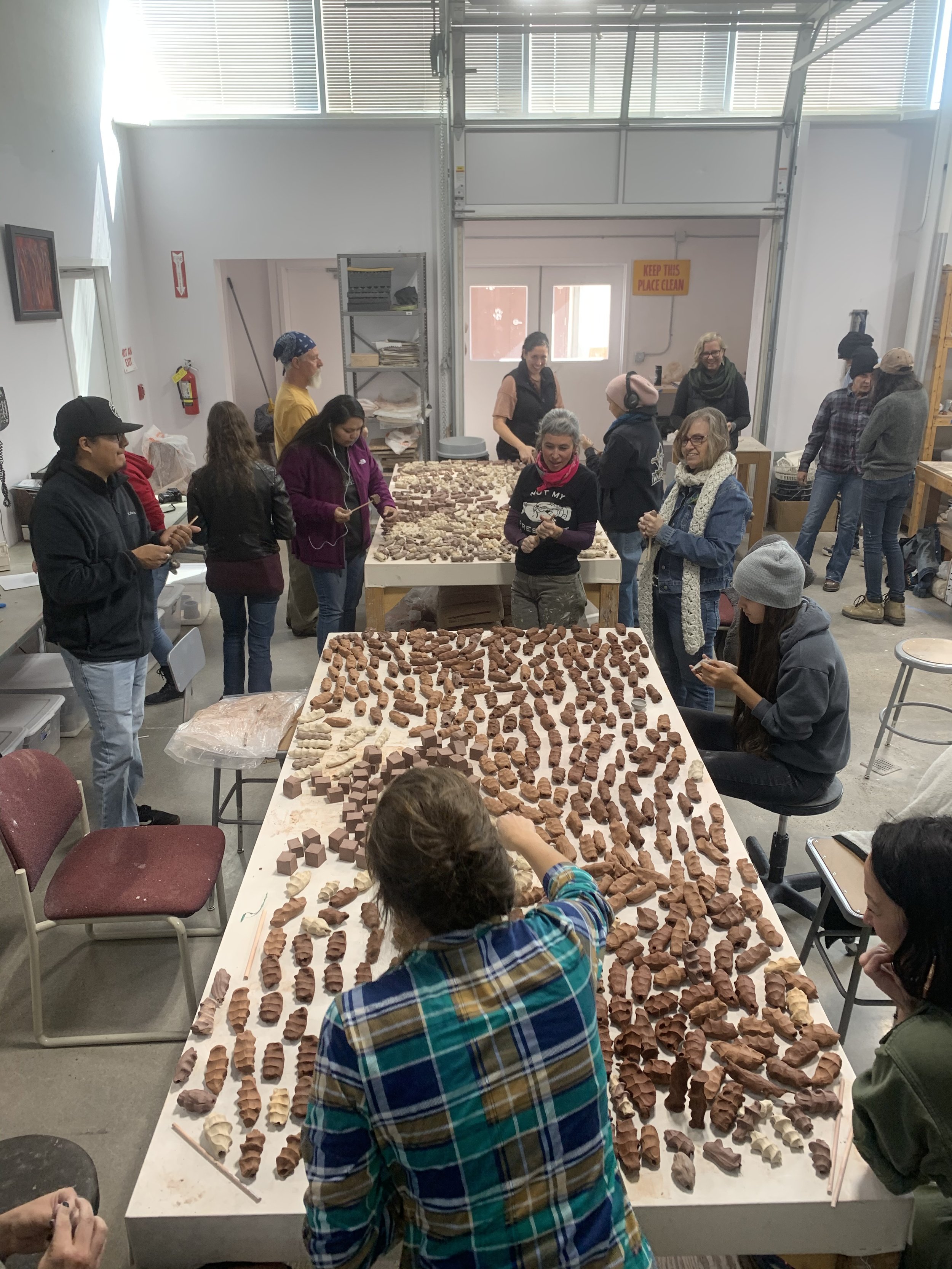

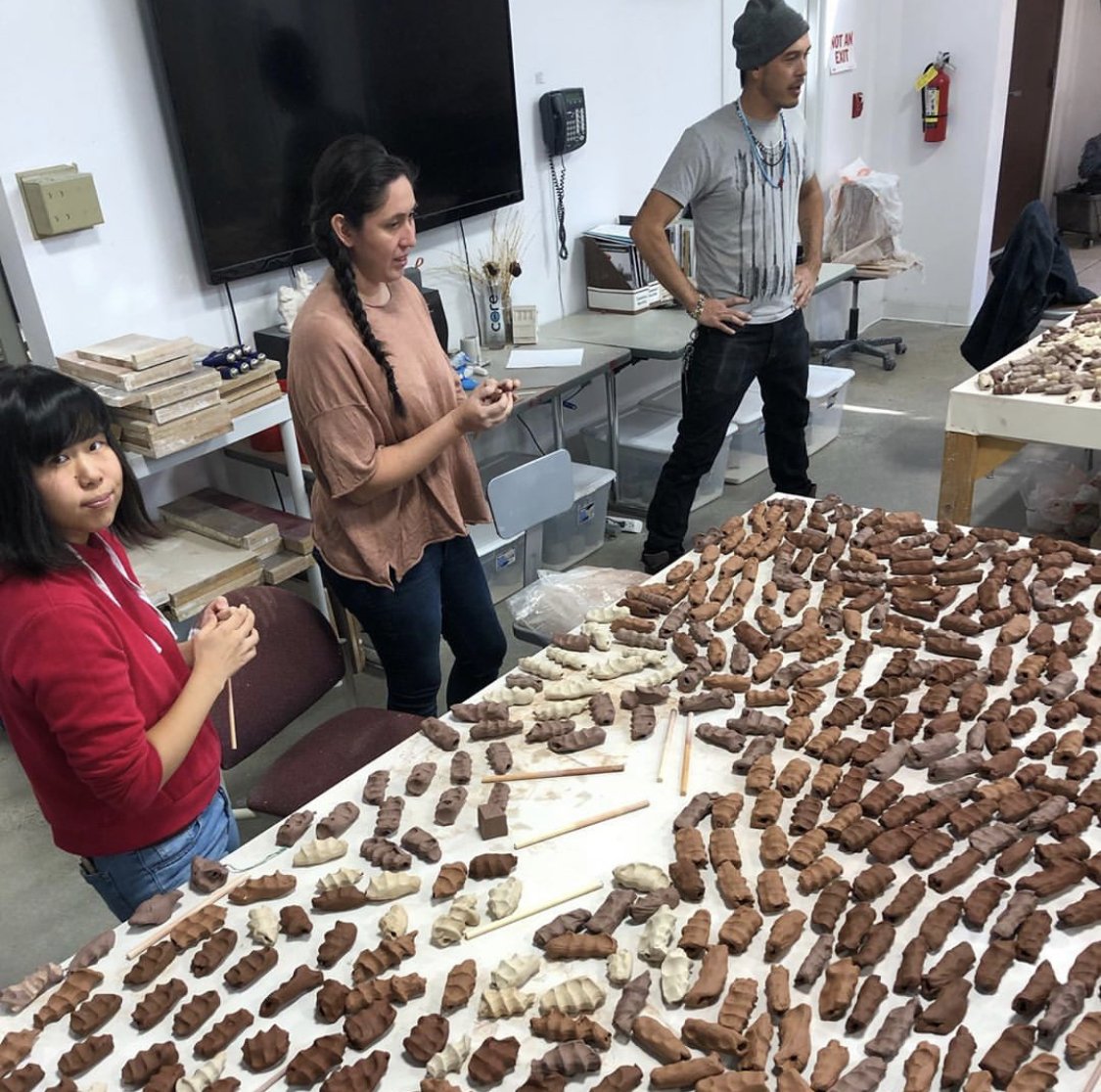

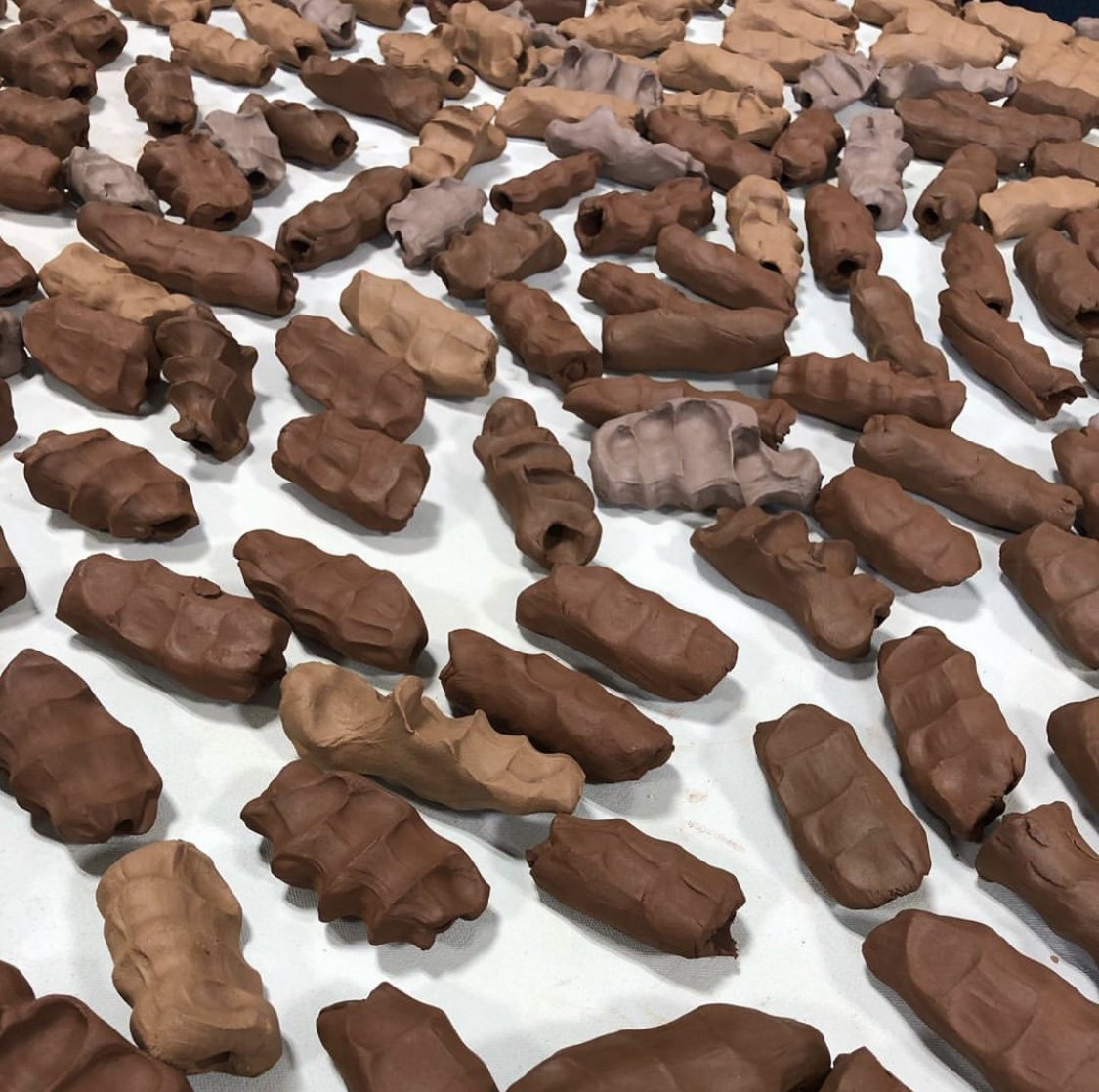
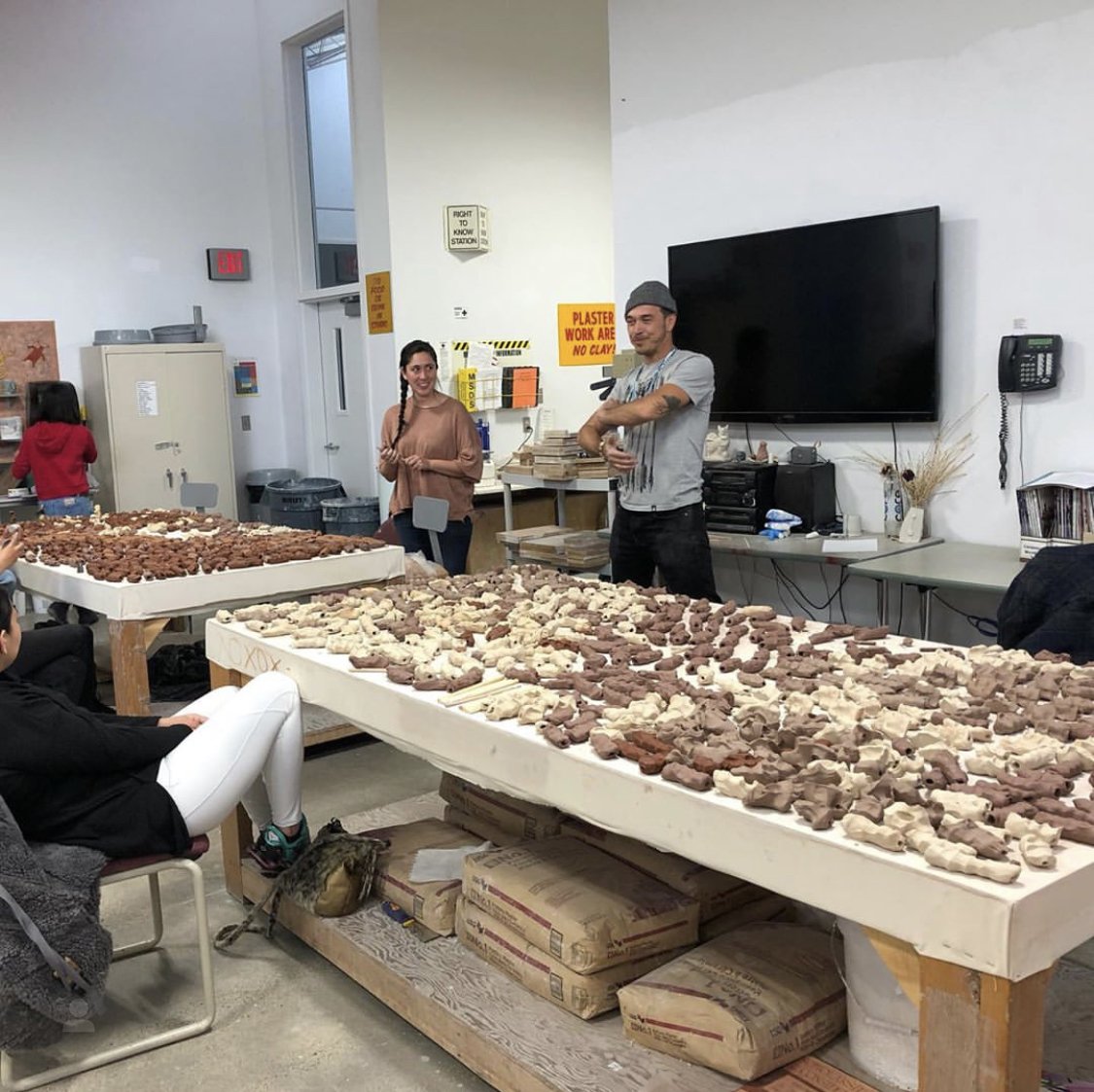
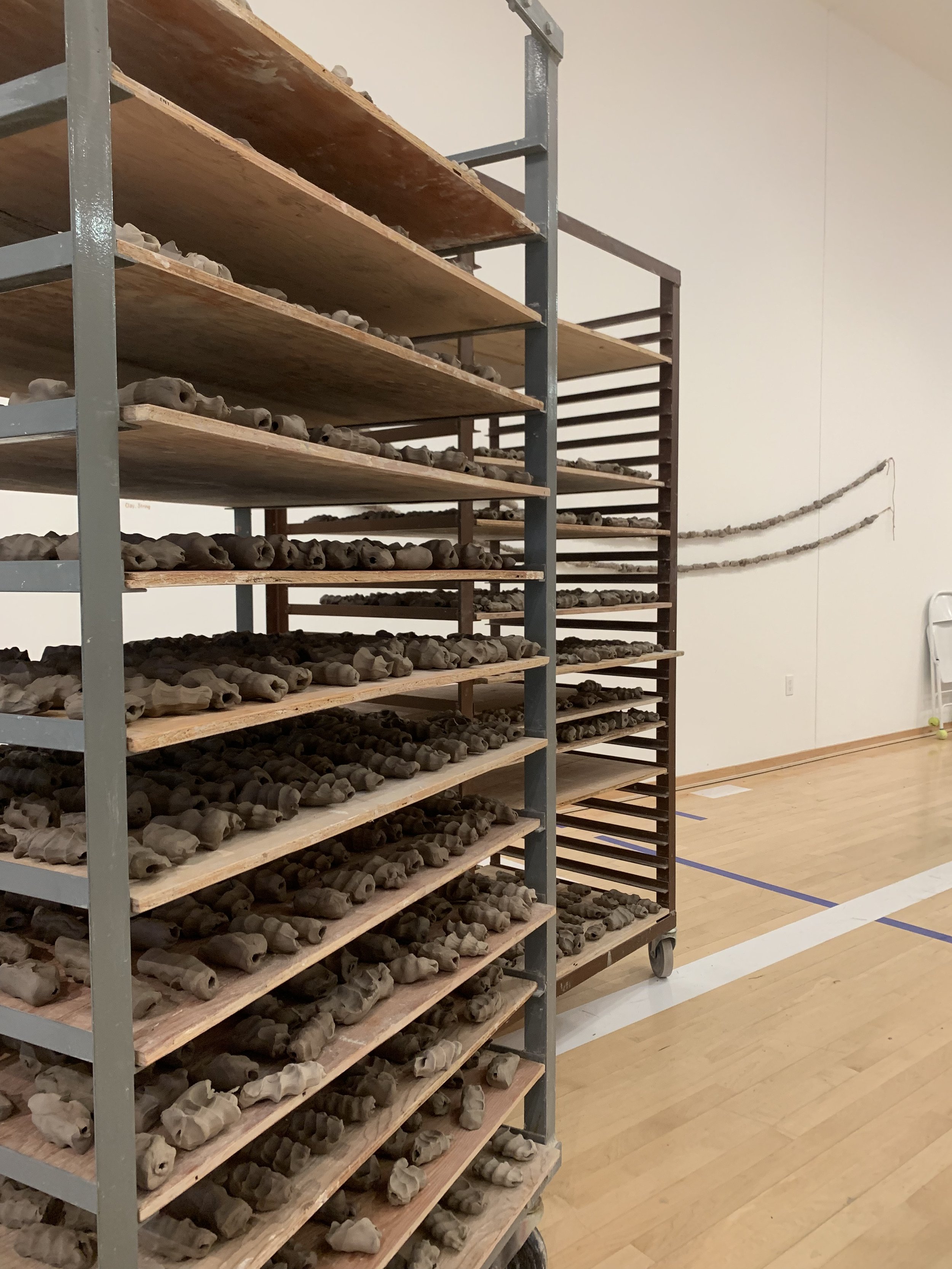
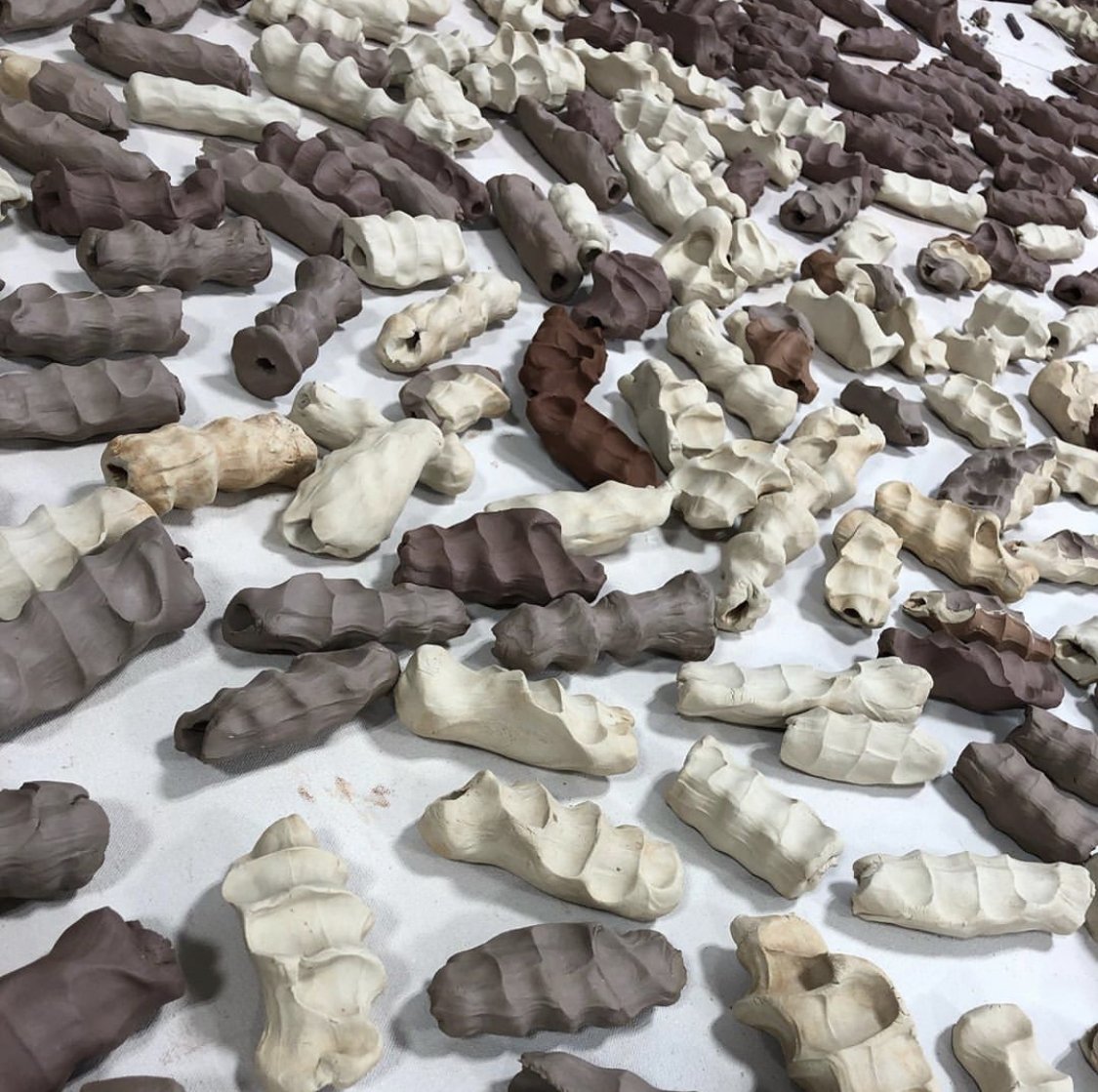
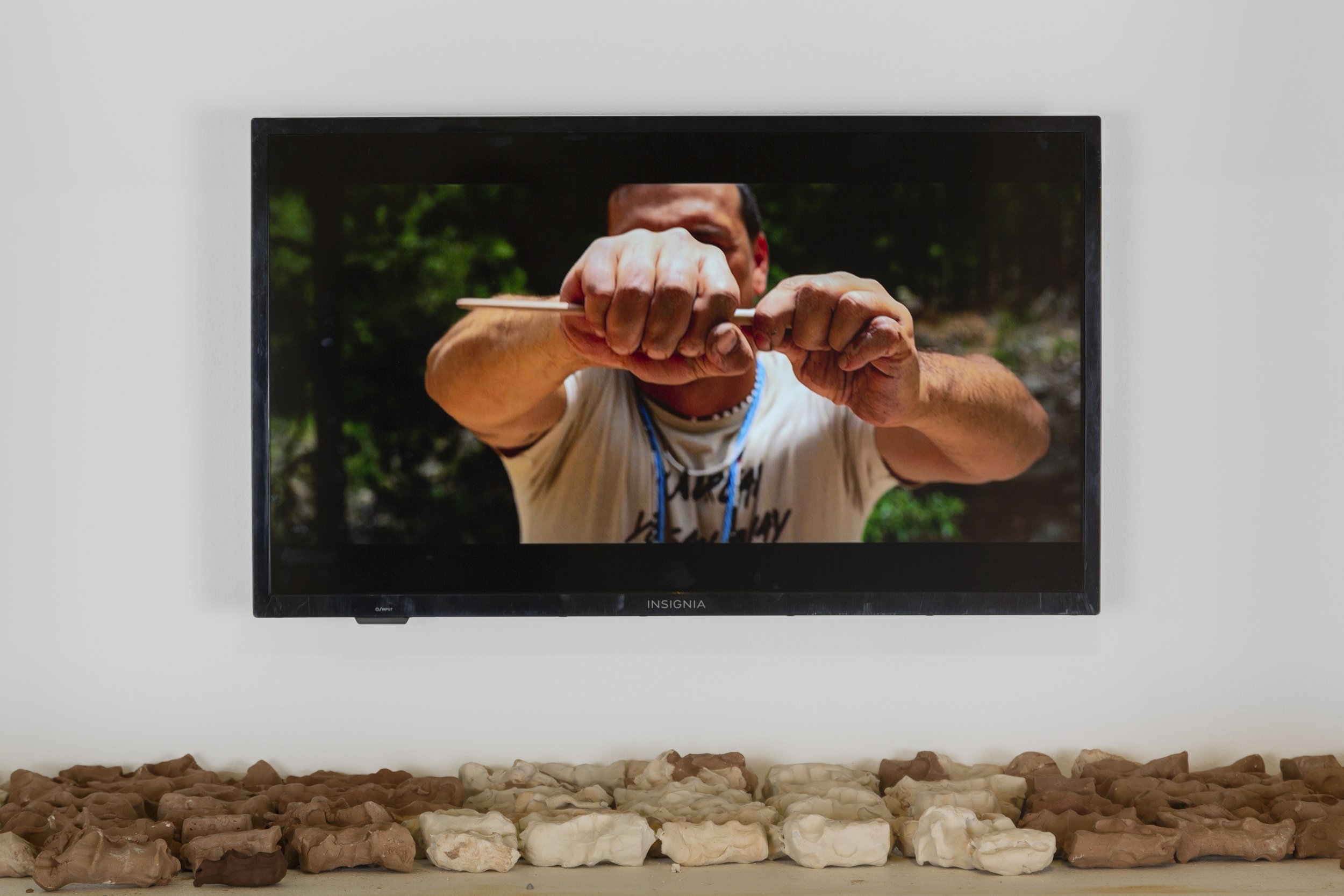

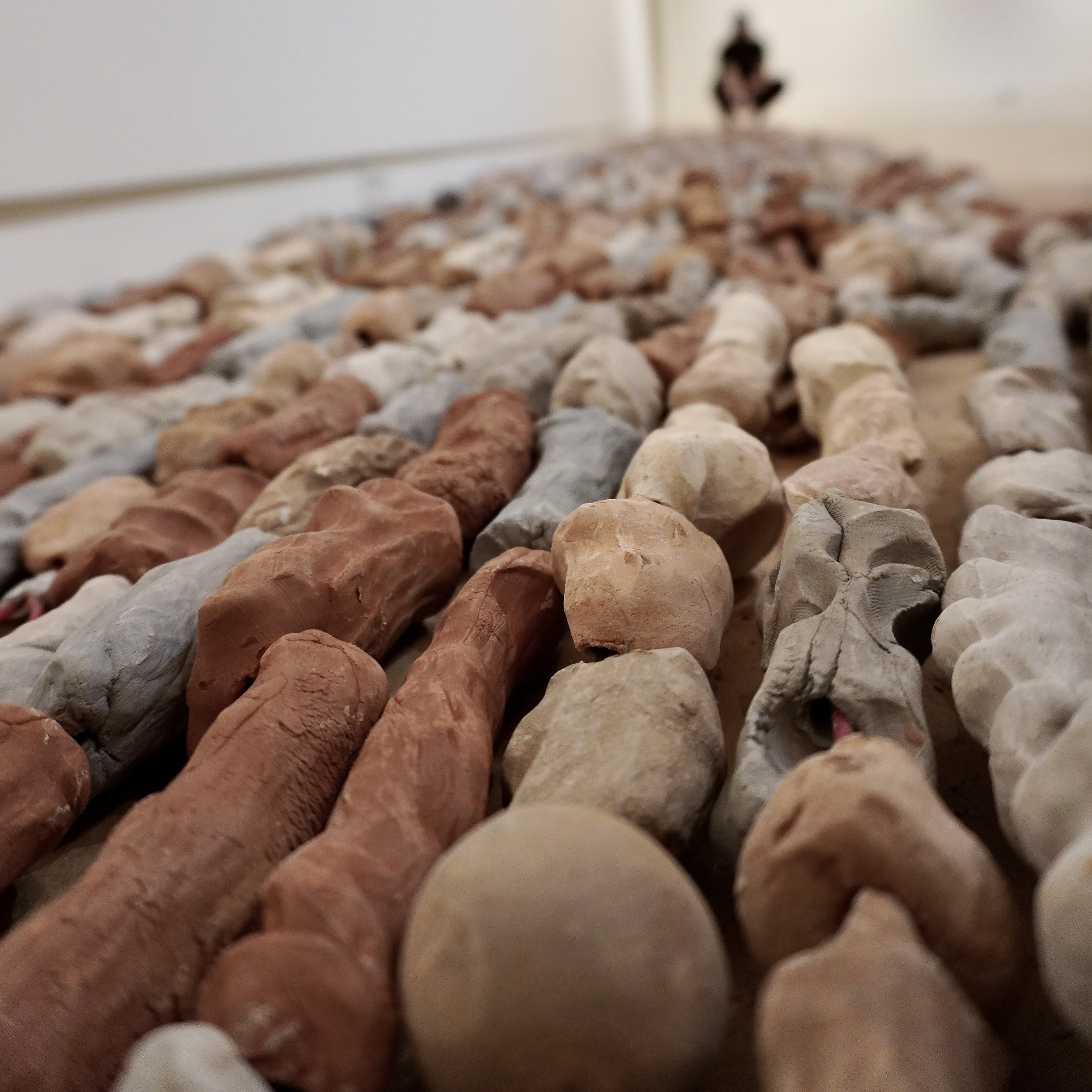
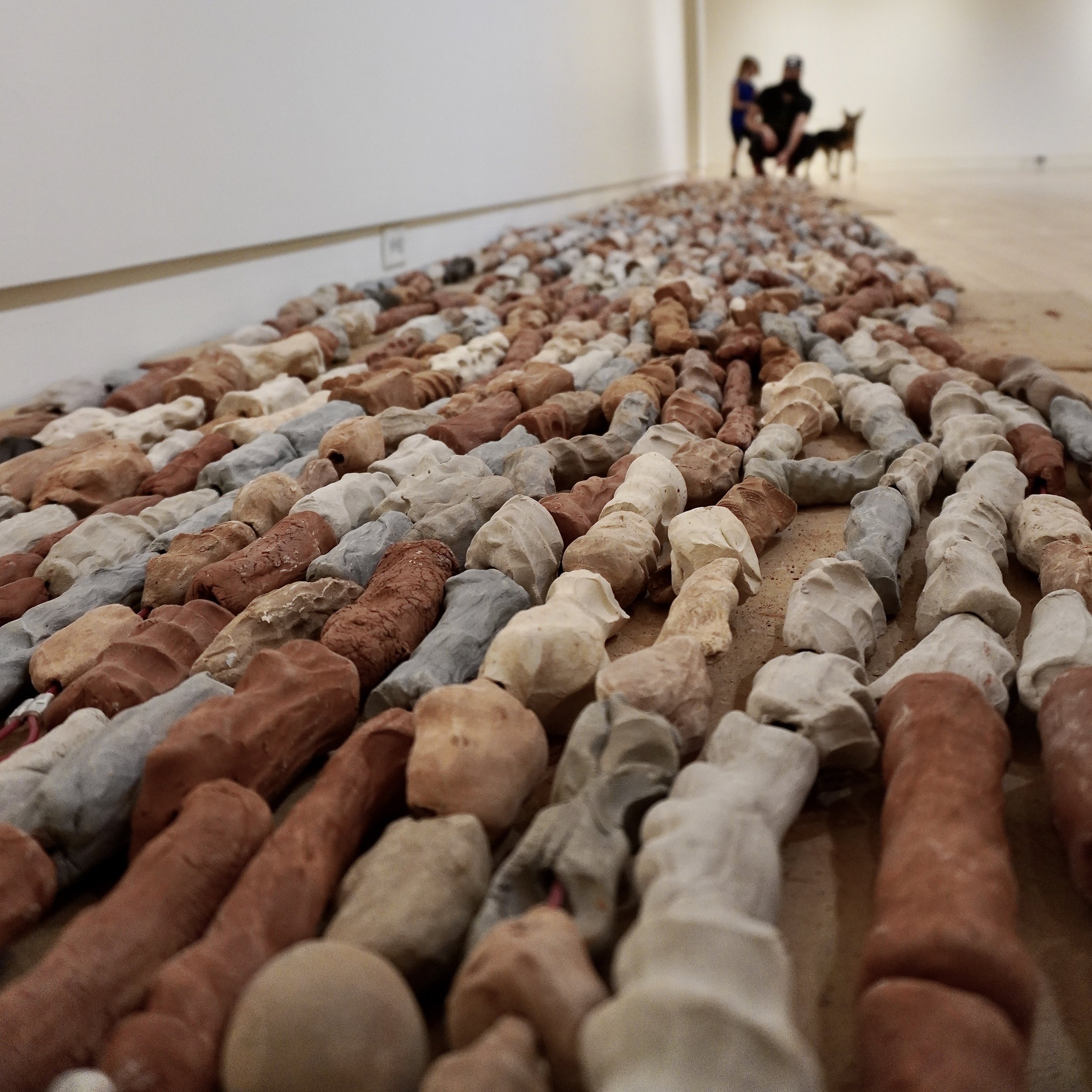

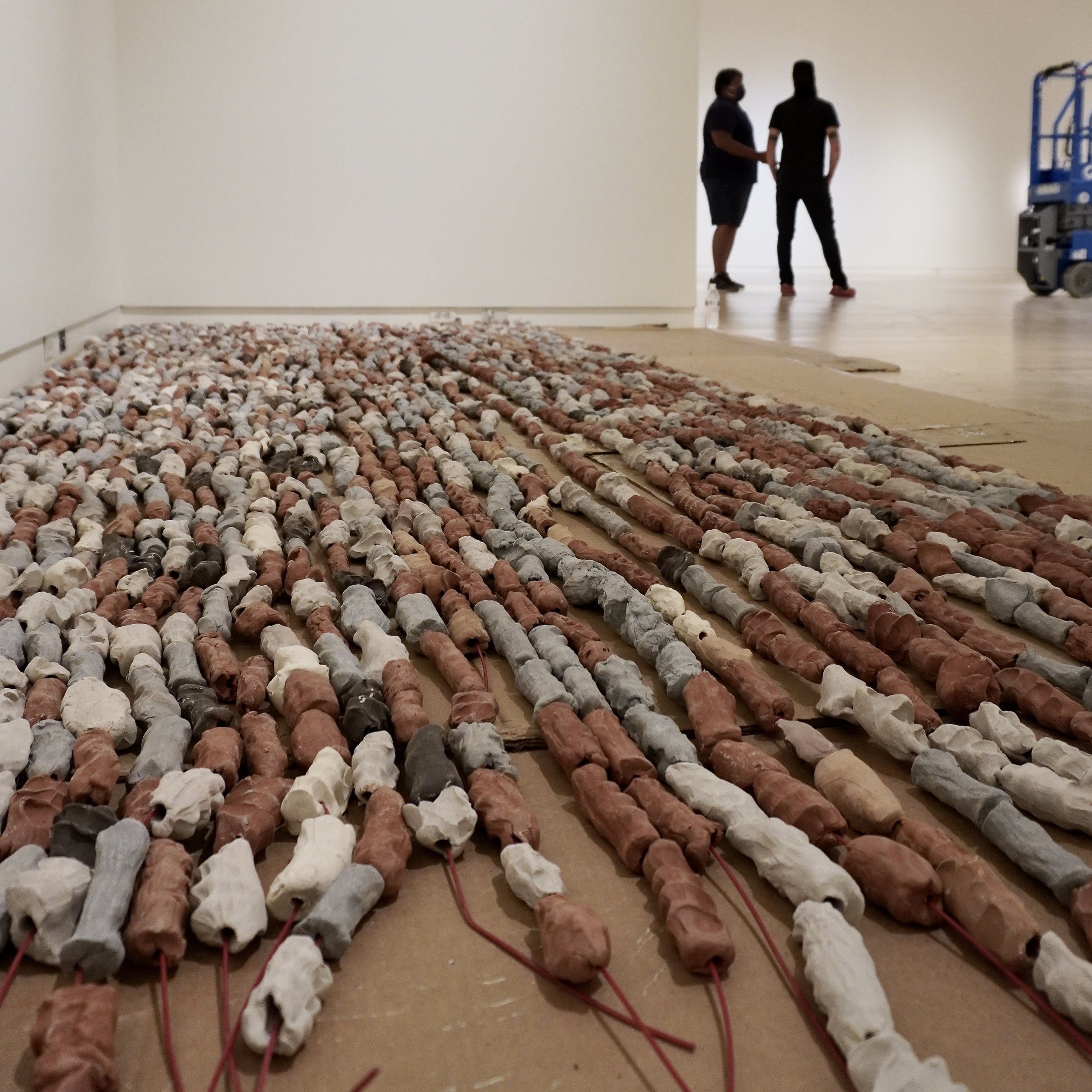
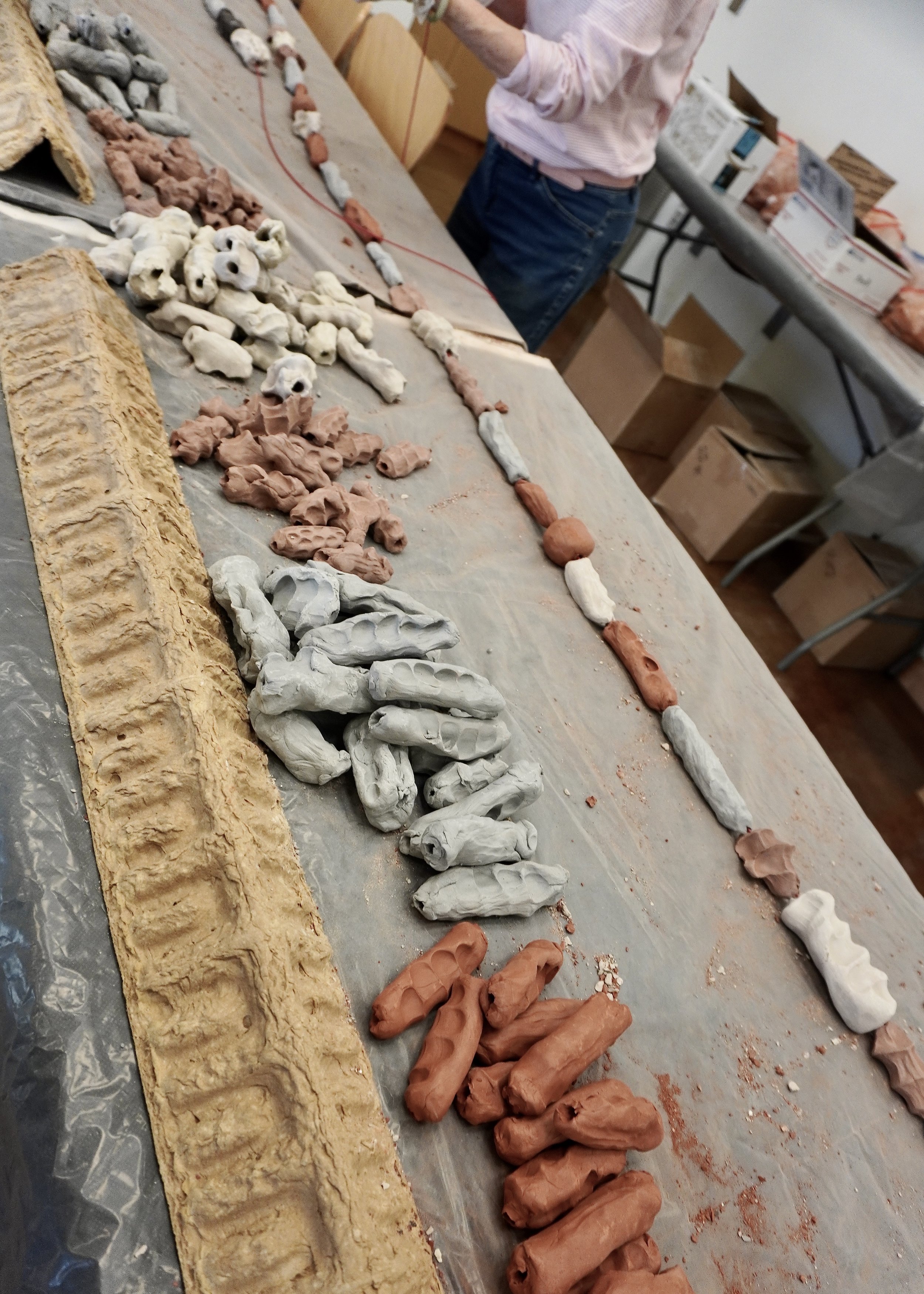
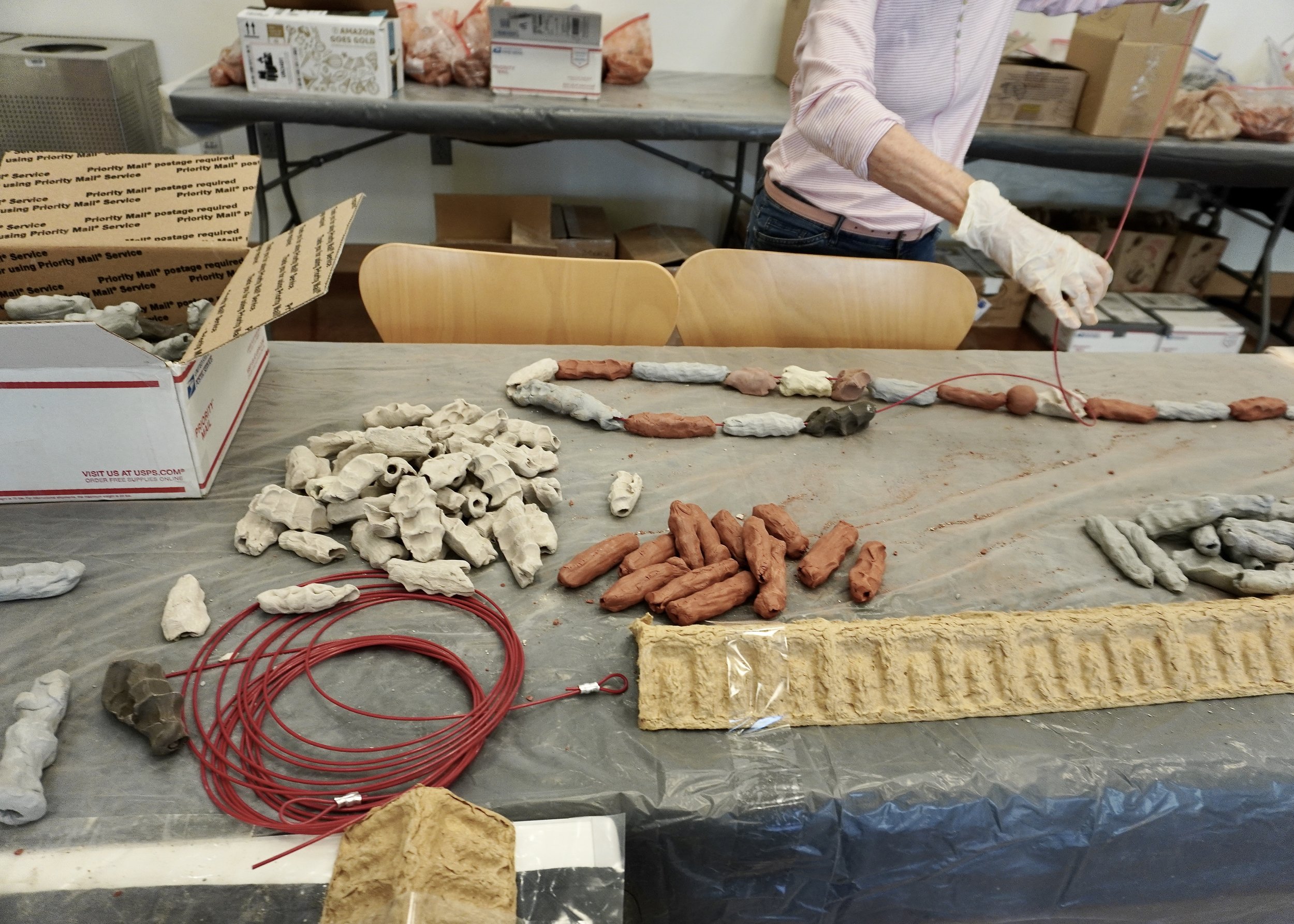
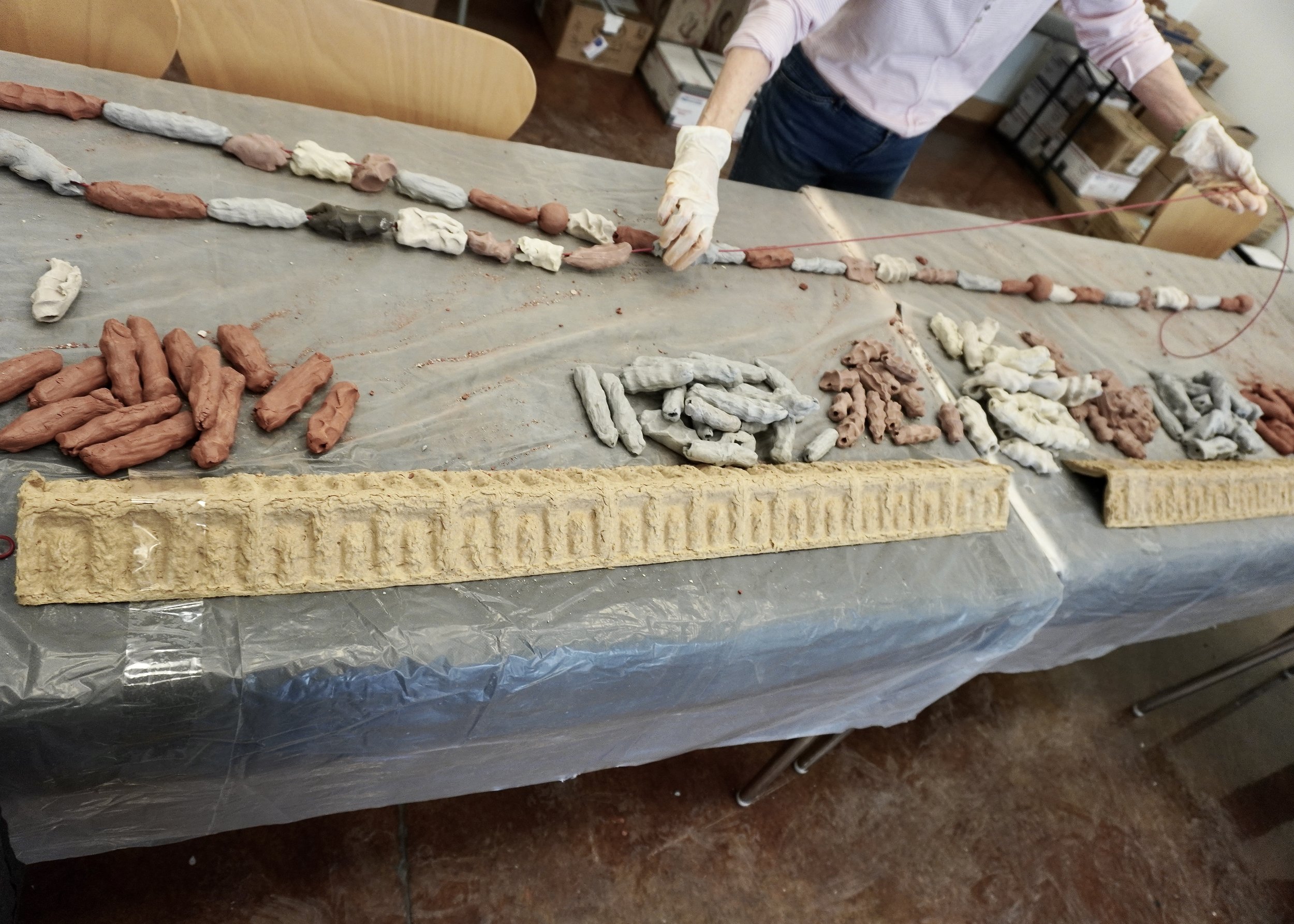
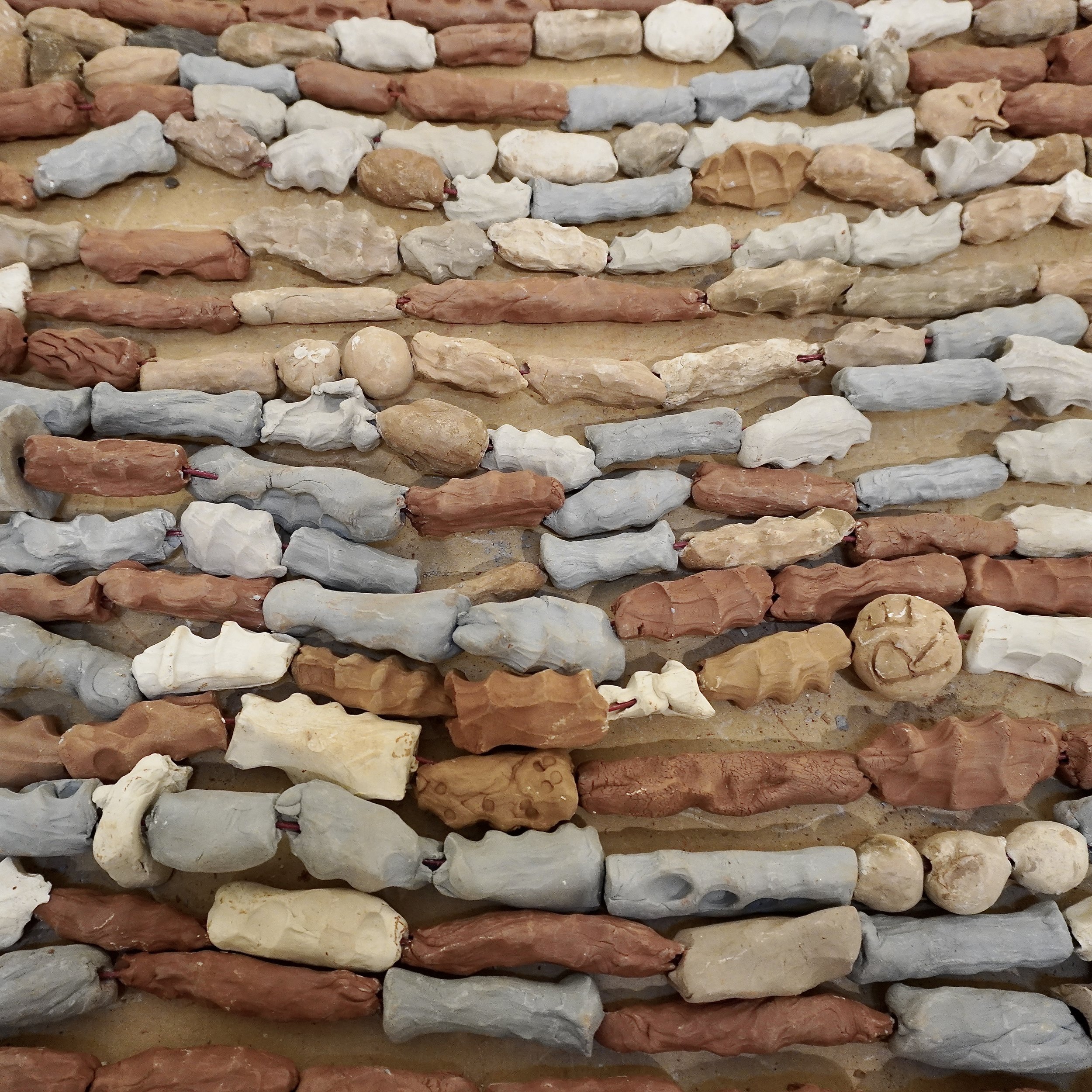
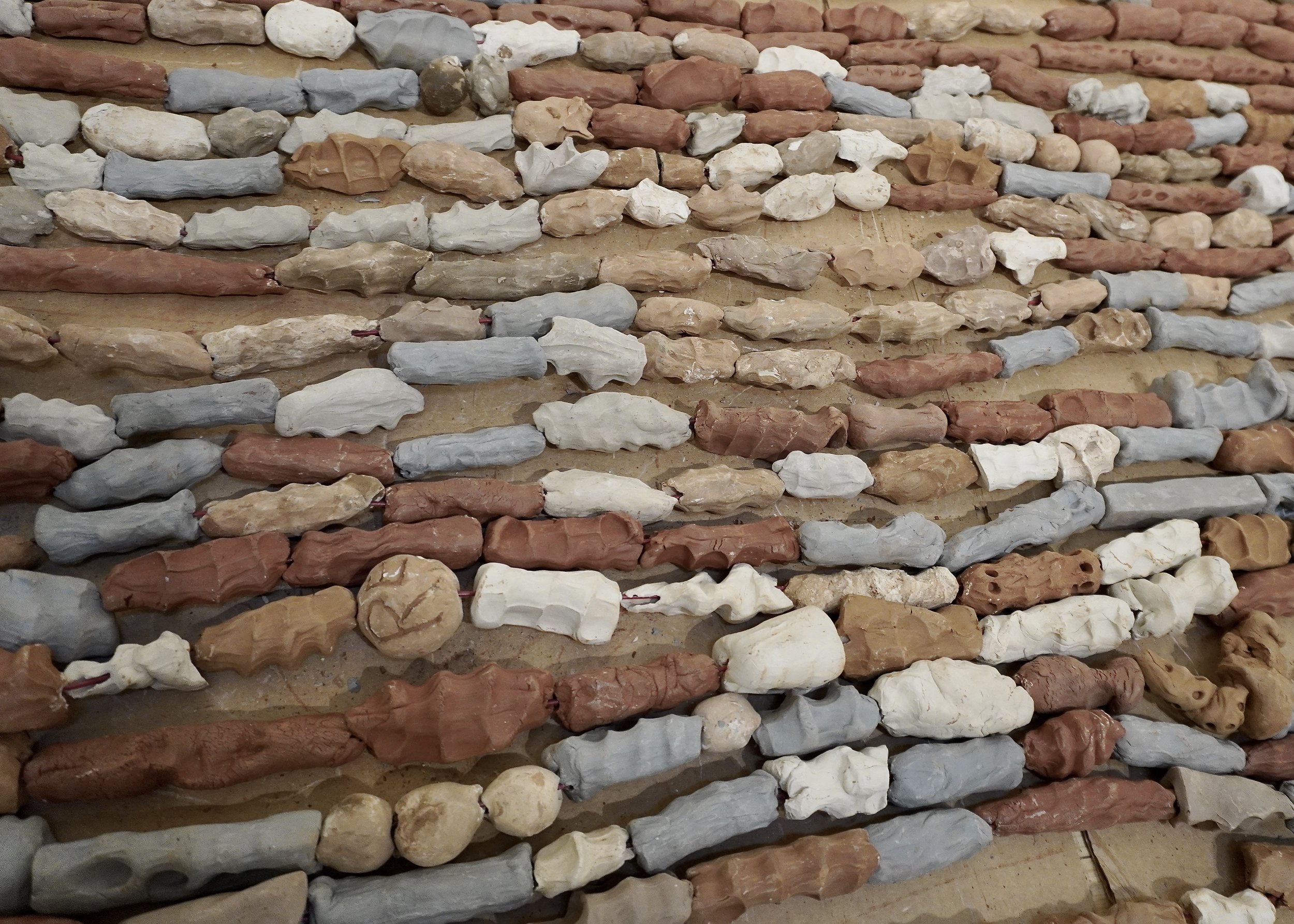
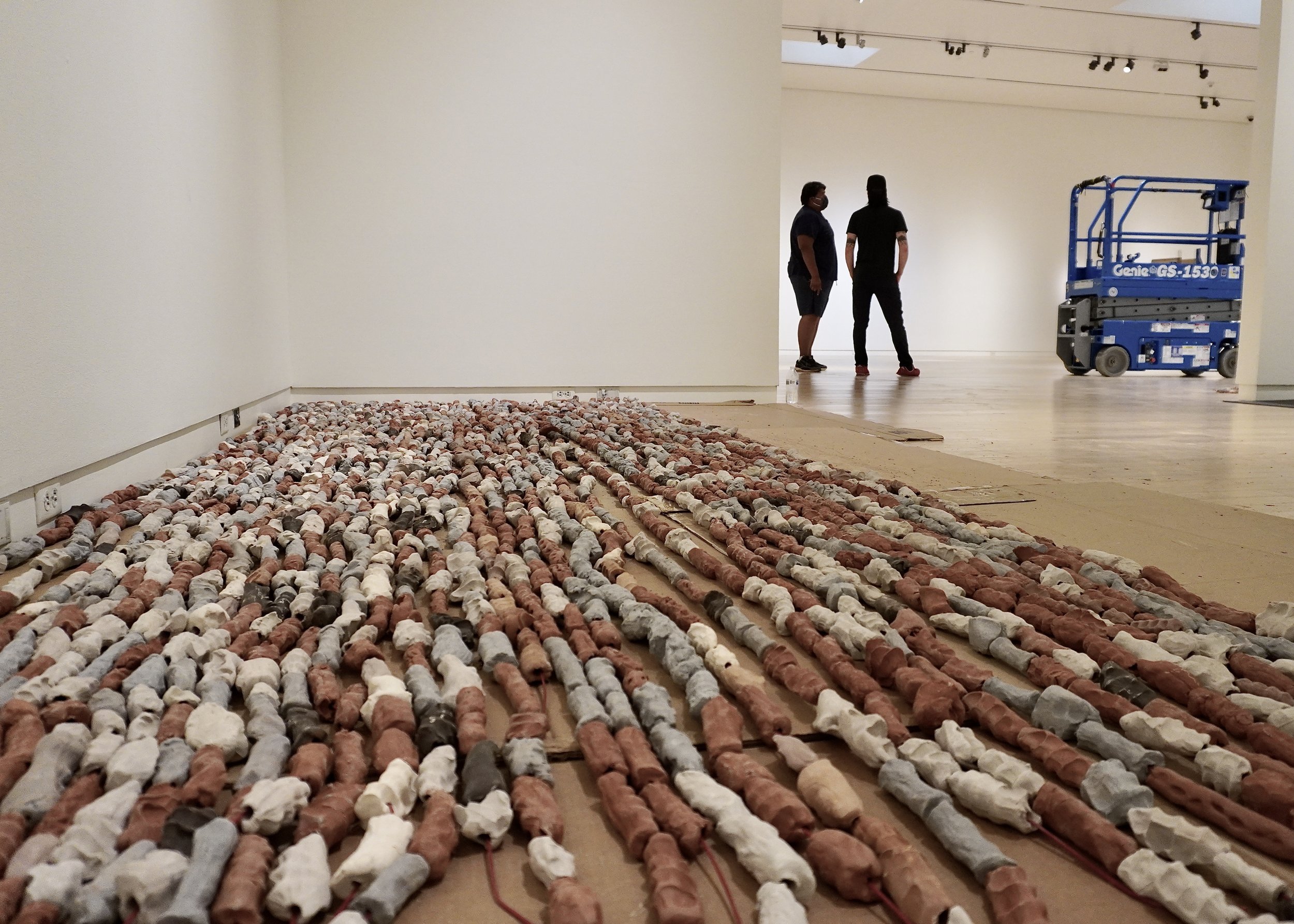



































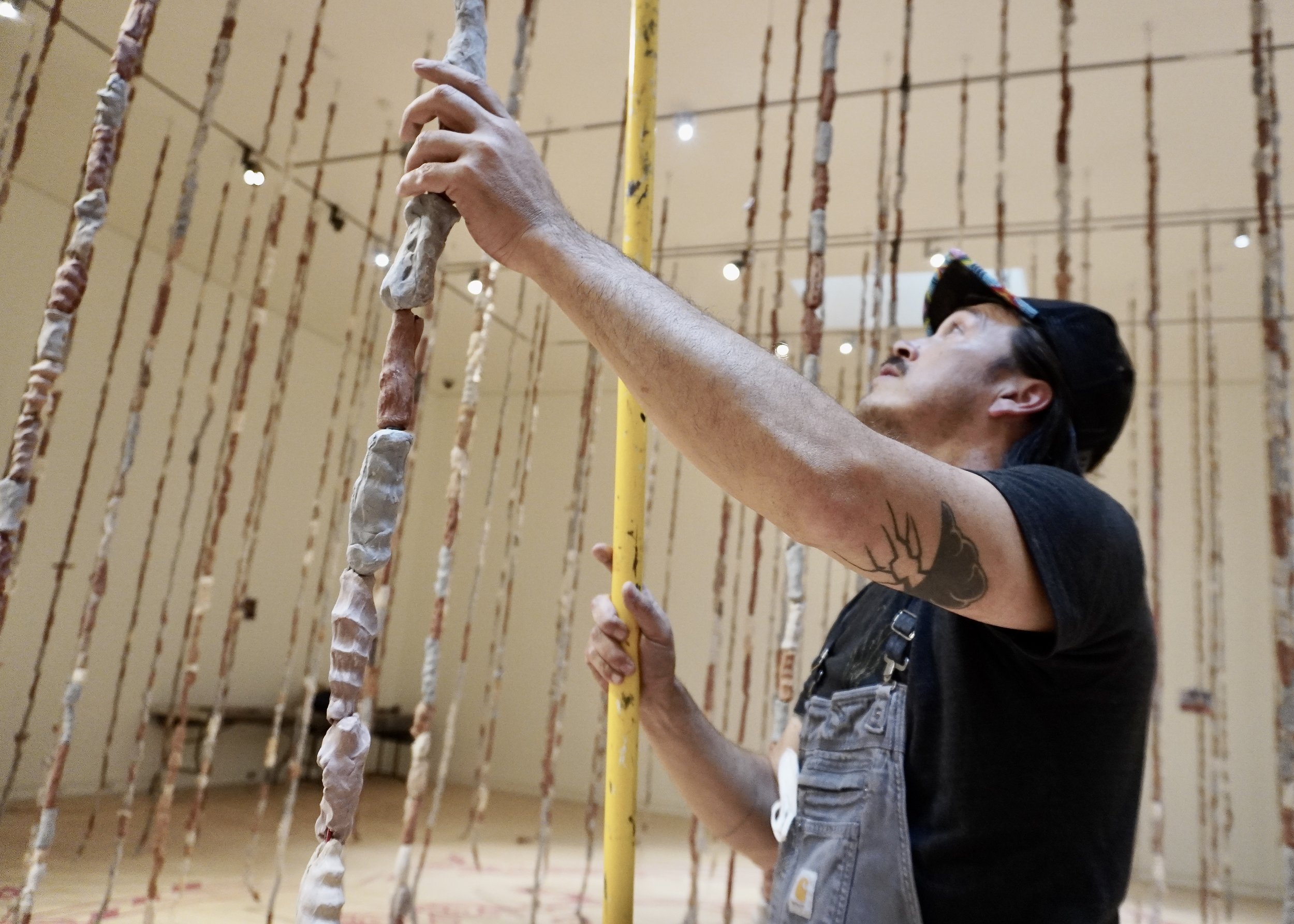
“I see this work is a way to recognize our Indigenous relatives in Mexico and Central/South America who are suffering from disrupted migration routes and policed movement. A border may change our relationships to land but it does not alter our Indigeneity or make us less connected to each other. Indigenous peoples of North and South America in solidarity form the second largest population in the world. This is Something to Hold Onto.” — Cannupa Hanska Luger
PASSAGE EXHIBITION:
Something To Hold Onto installation was the anchoring work for Cannupa Hanska Luger’s new exhibition Passage, on view May 14-August 8 2021 at Mesa Contemporary Arts Museum at Mesa Arts Center, Mesa, AZ.
Something To Hold Onto is a large-scale ephemeral artwork and immersive installation by Cannupa Hanska Luger using over 9000 unfired clay beads created in collaboration with communities across the US and Mexico. This artwork mirrors and stands in solidarity with a monumental floor mural created by Thomas ‘Breeze’ Marcus (Tohono O’odham) and Dwayne Manuel (Onk Akimel O'odham). In addition, artist/designer/craftsperson Tanya Aguiñiga (Mexican) has curated an info shop and mutual aid resource center to accompany the exhibition and informed by her role as the founder and director of AMBOS (Art Made Between Opposite Sides), an ongoing series of artist interventions and commuter collaborations that address bi-national transition and identity in the US/Mexico border regions. Journalistic documentation is also on view, gathered by Thosh Collins (Onk Akimel O'odham) and Chelsey Luger (Turtle Mountain Band of Chippewa, Standing Rock Lakota Nation) and these two cultural practioners will document the beads from Something To Hold Onto return to the land on the border area which crosses the Tohono O’odham Nation after the exhibition closes.

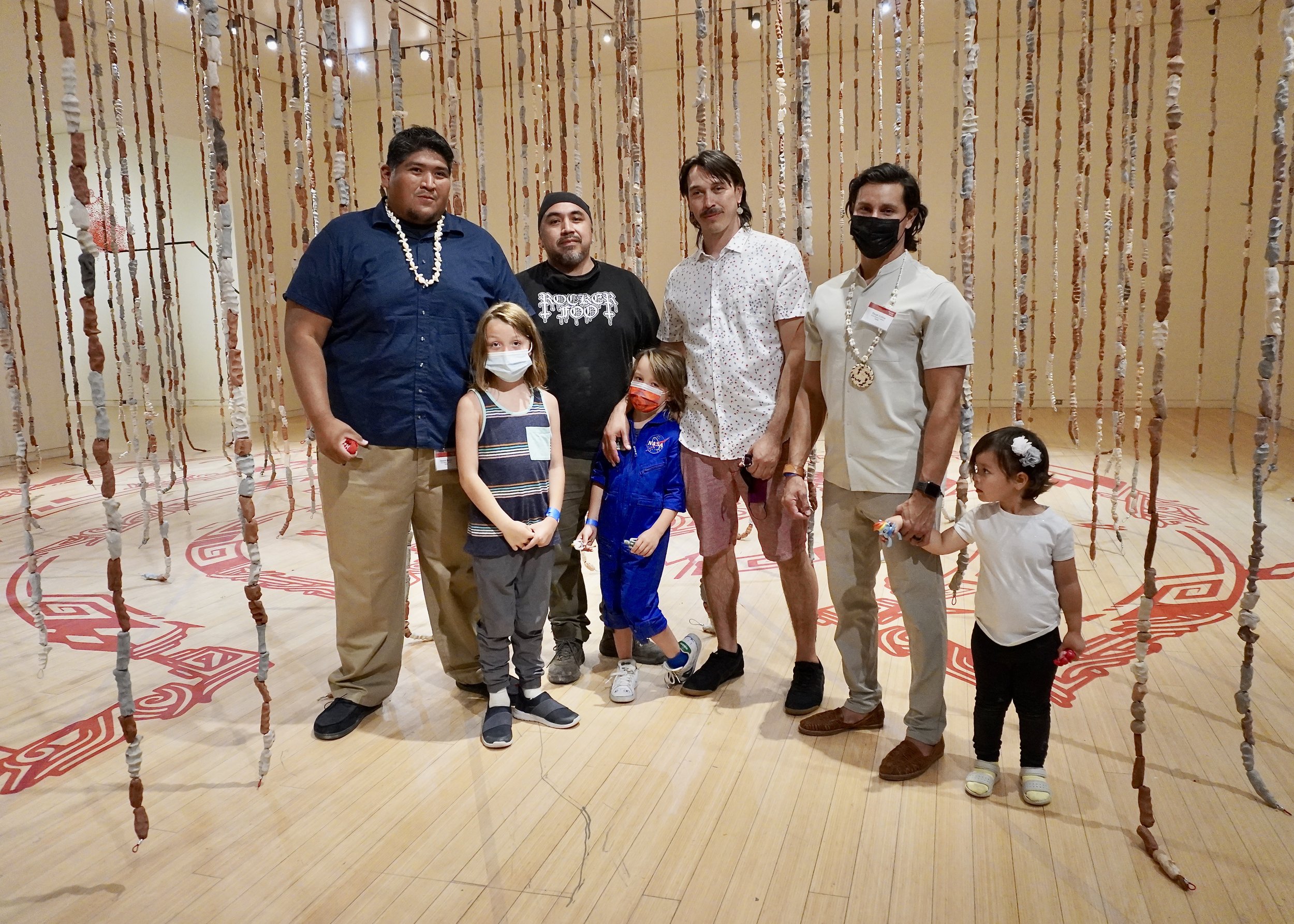
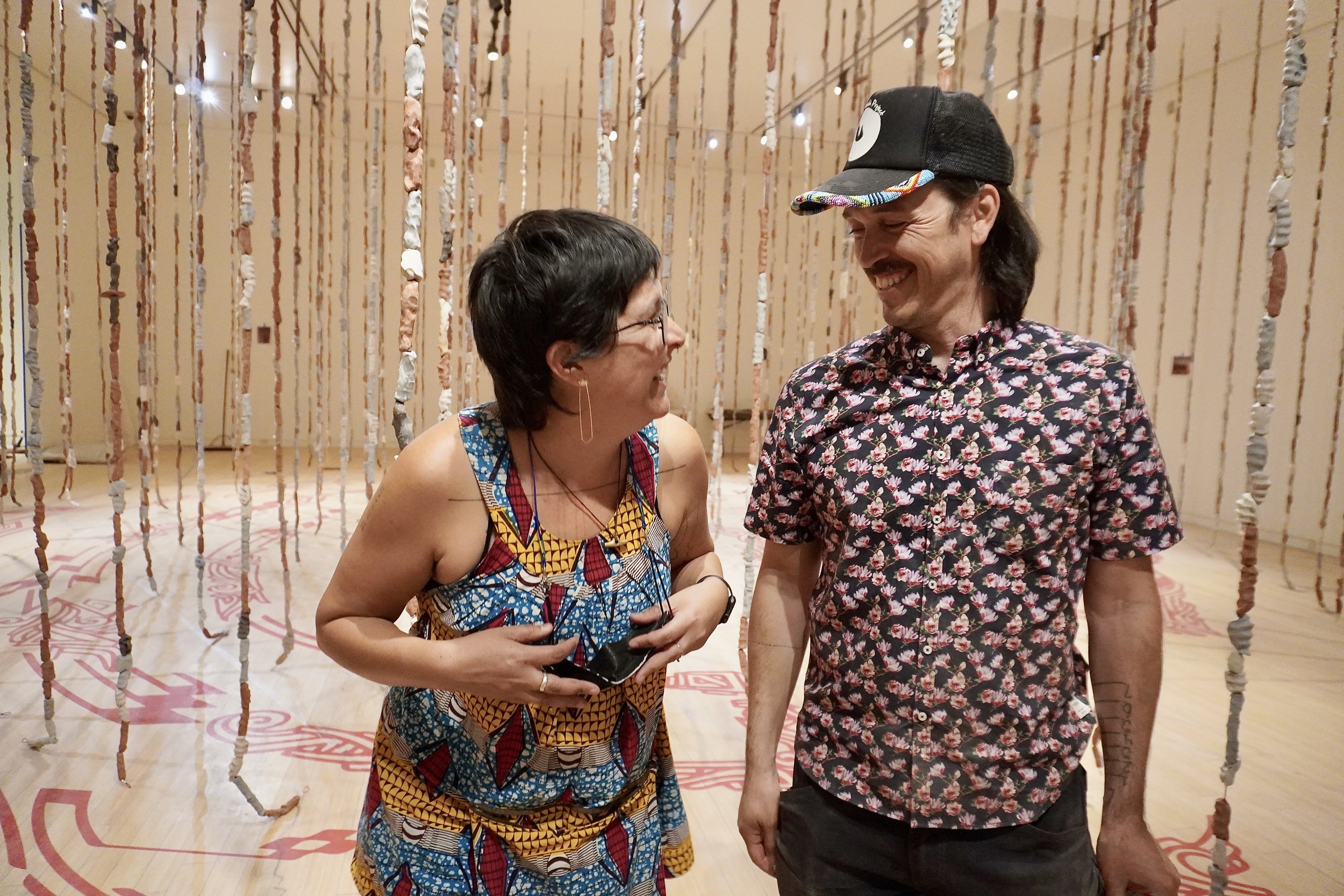
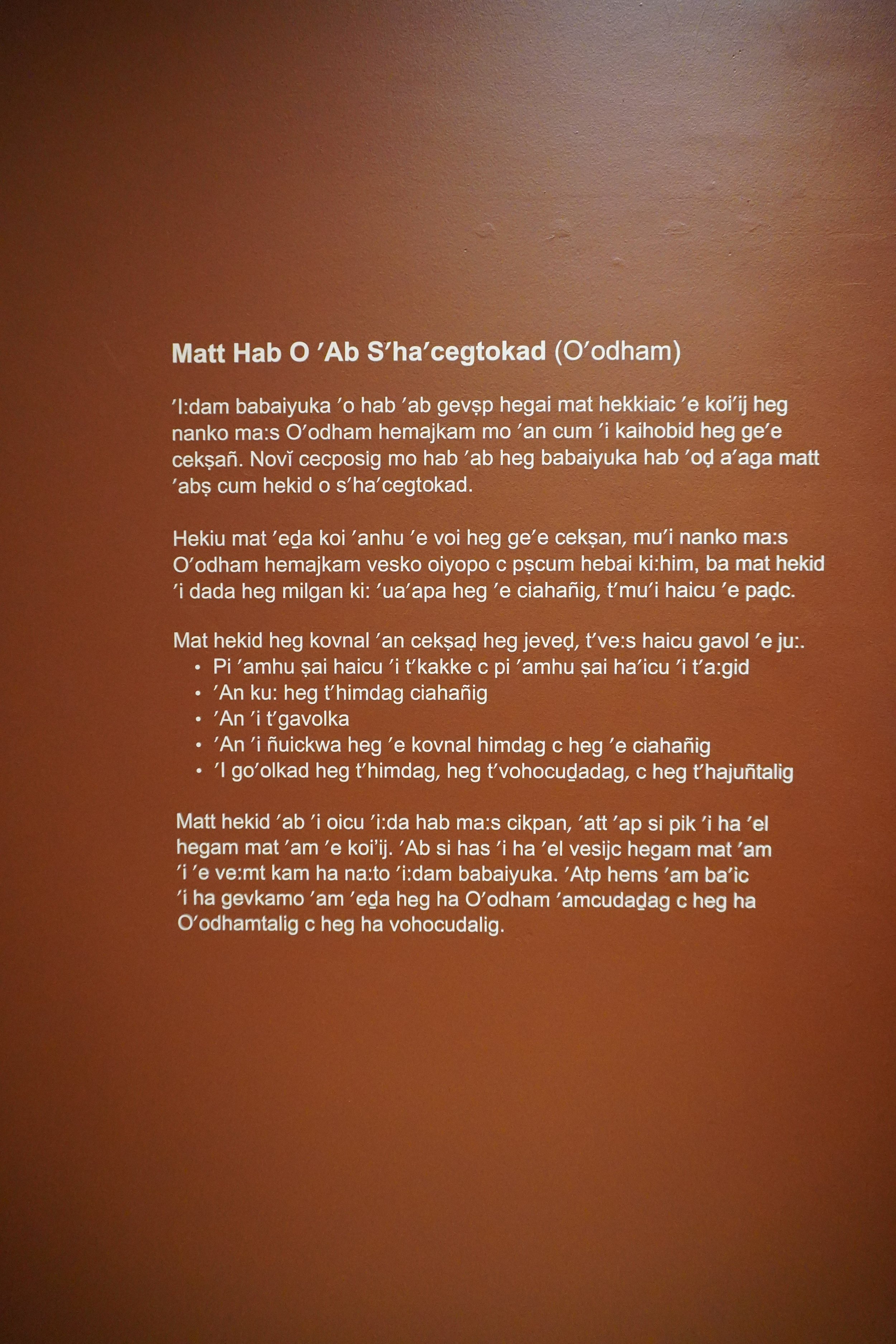
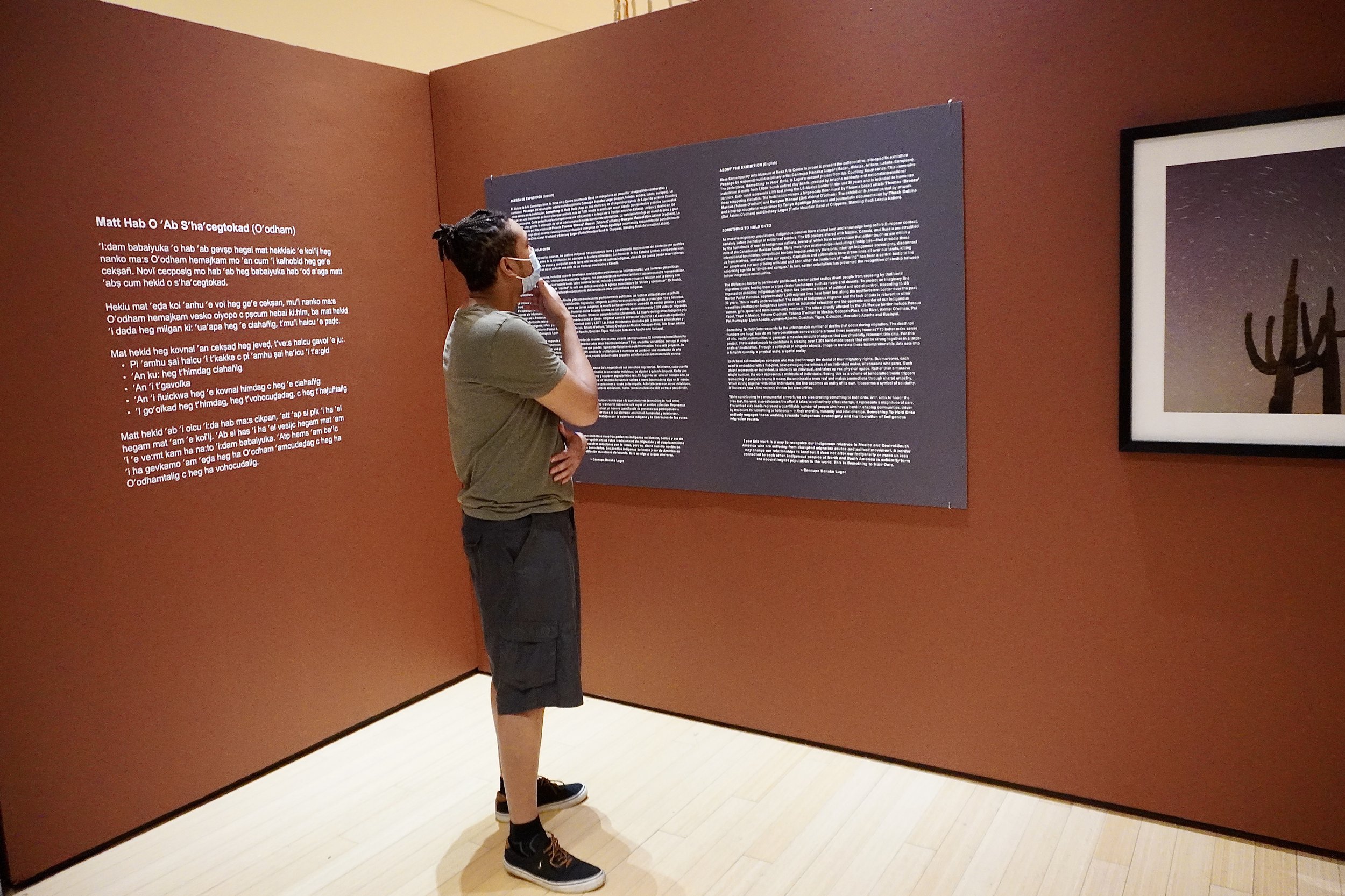
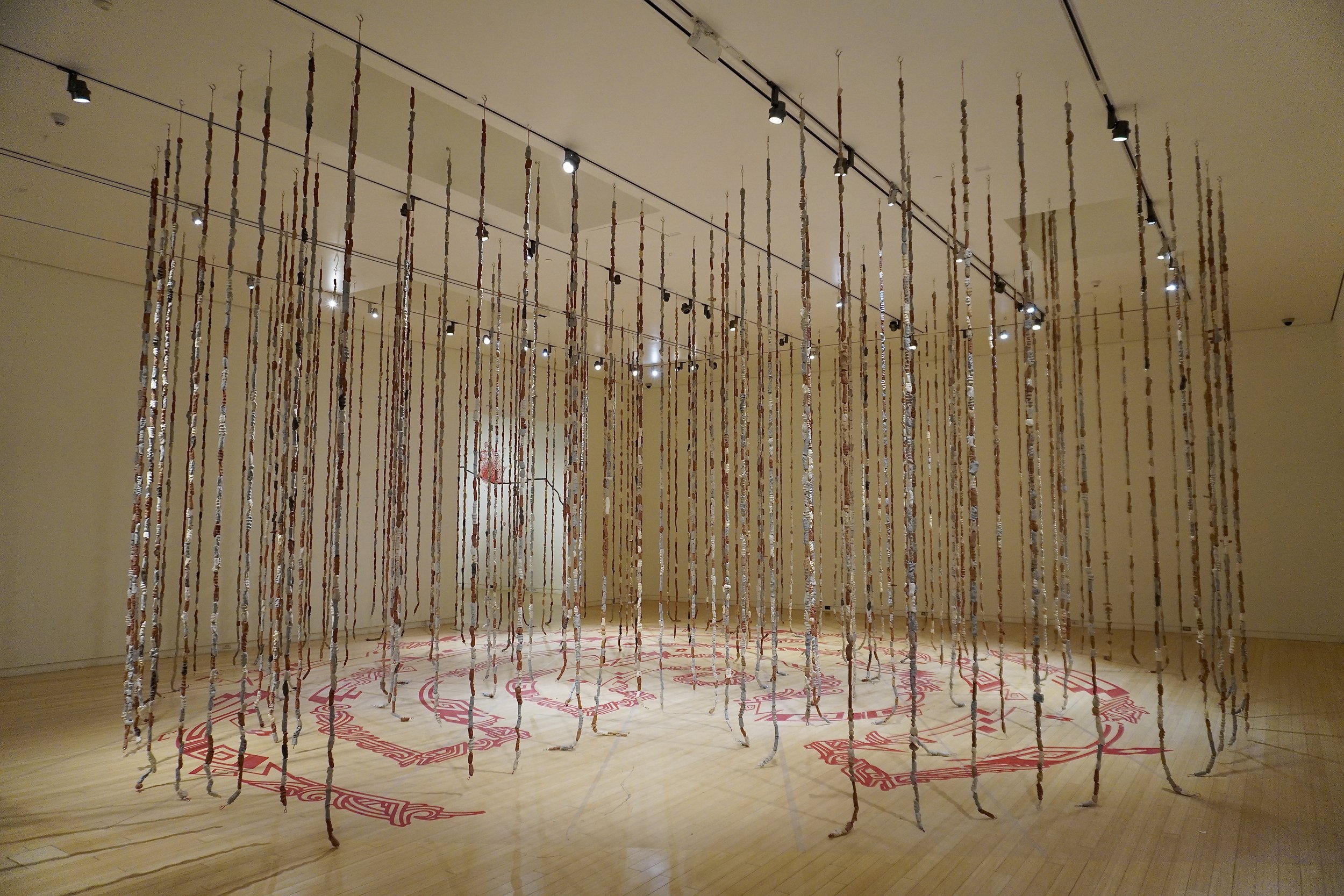
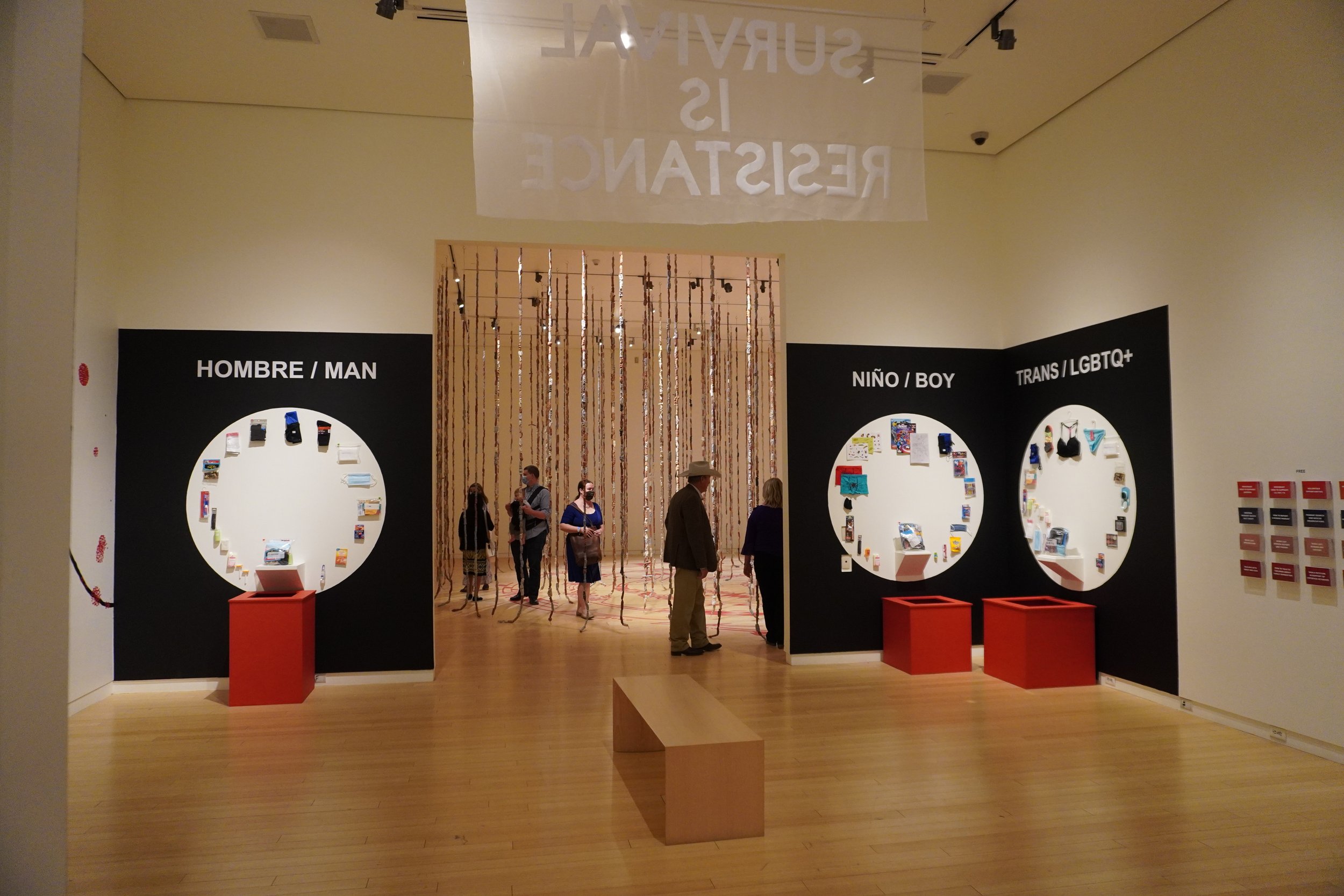
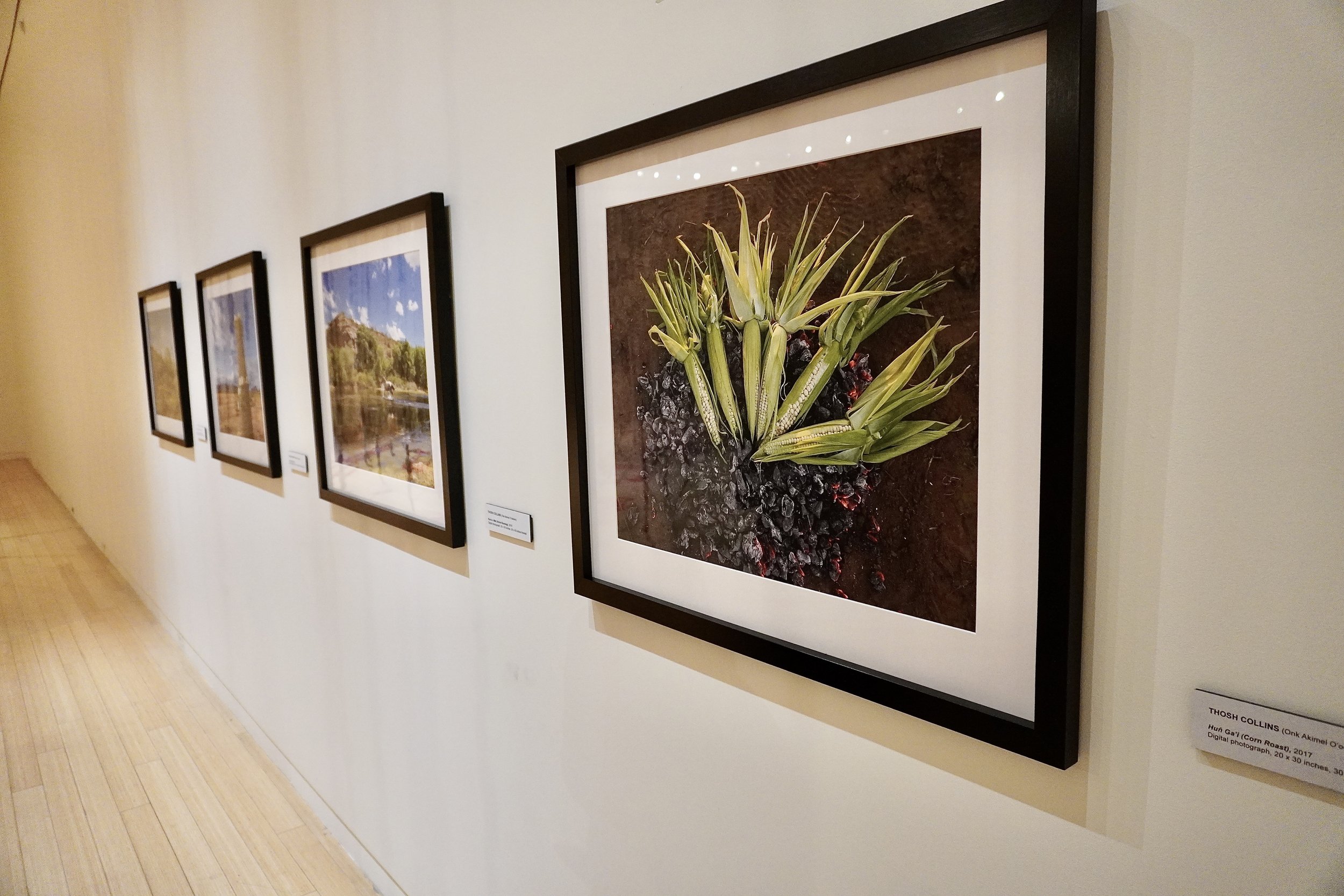
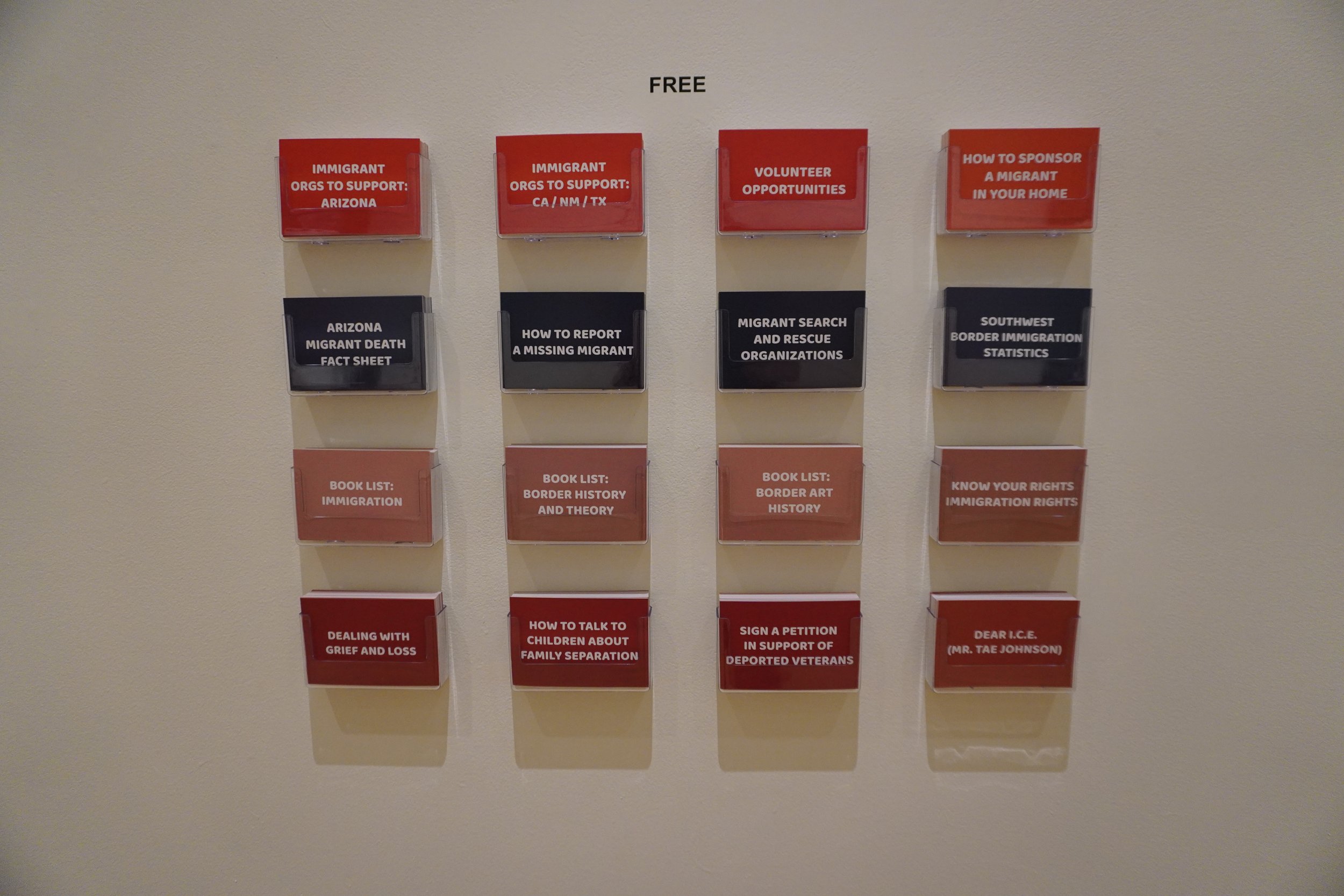
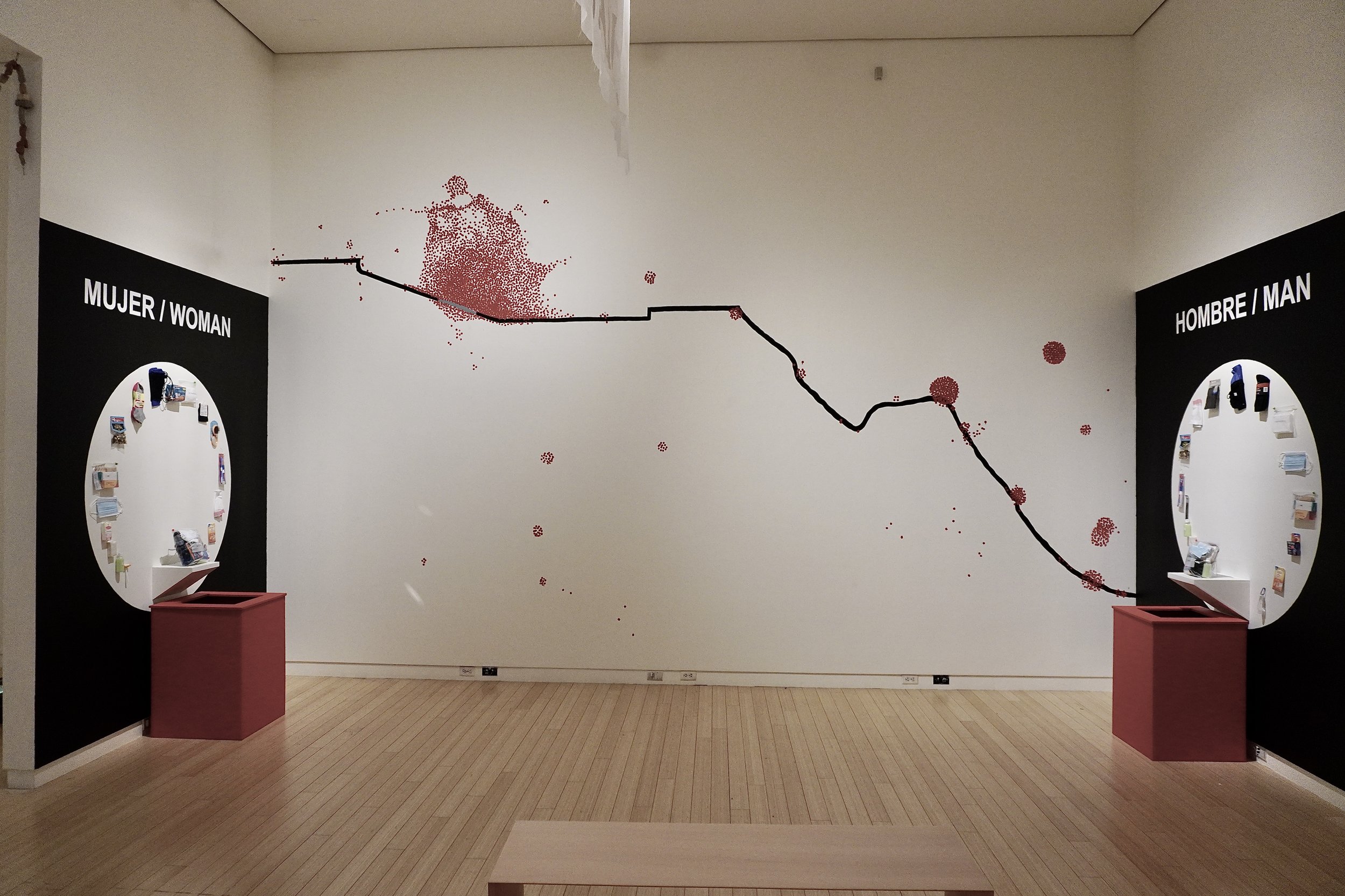
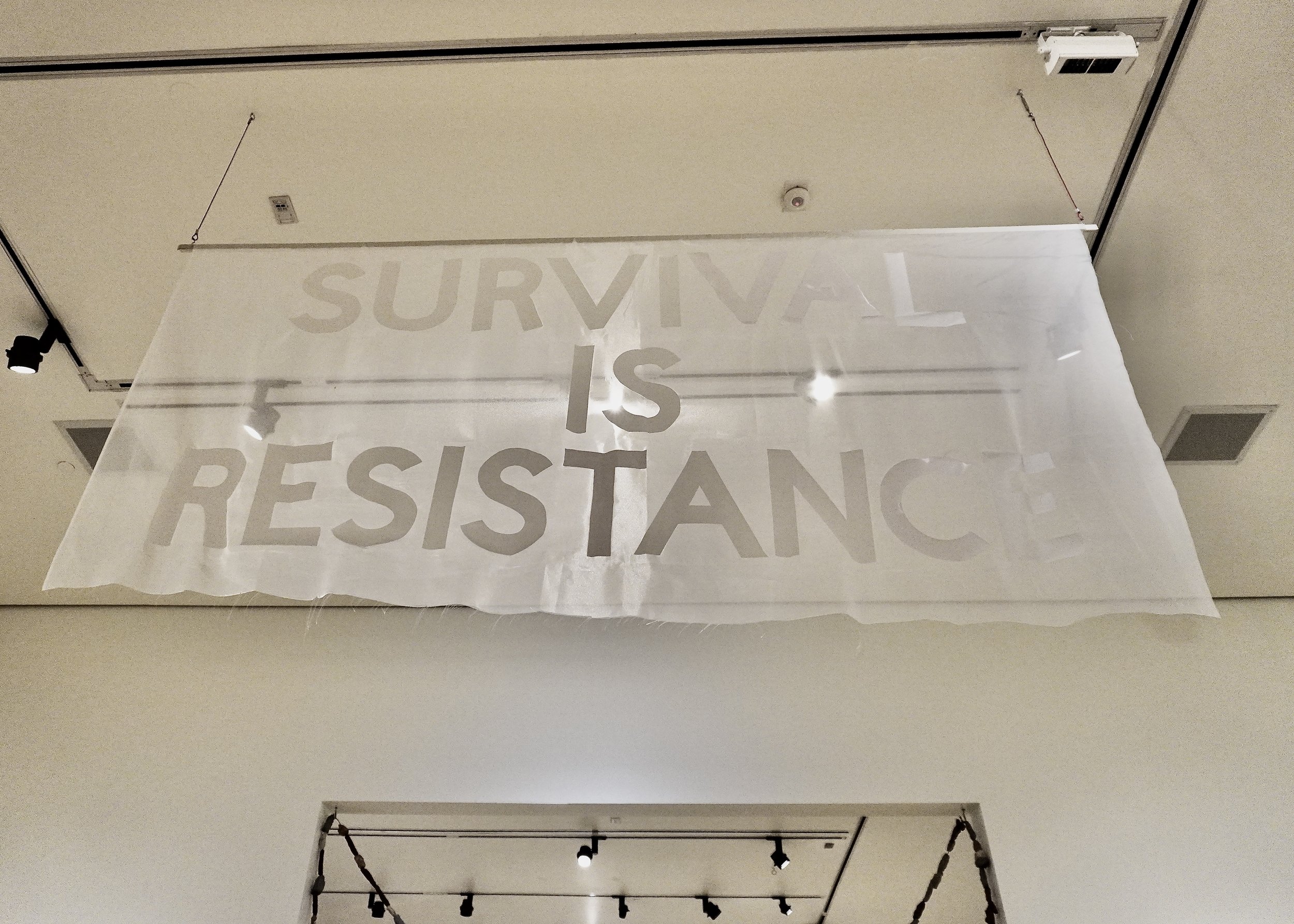
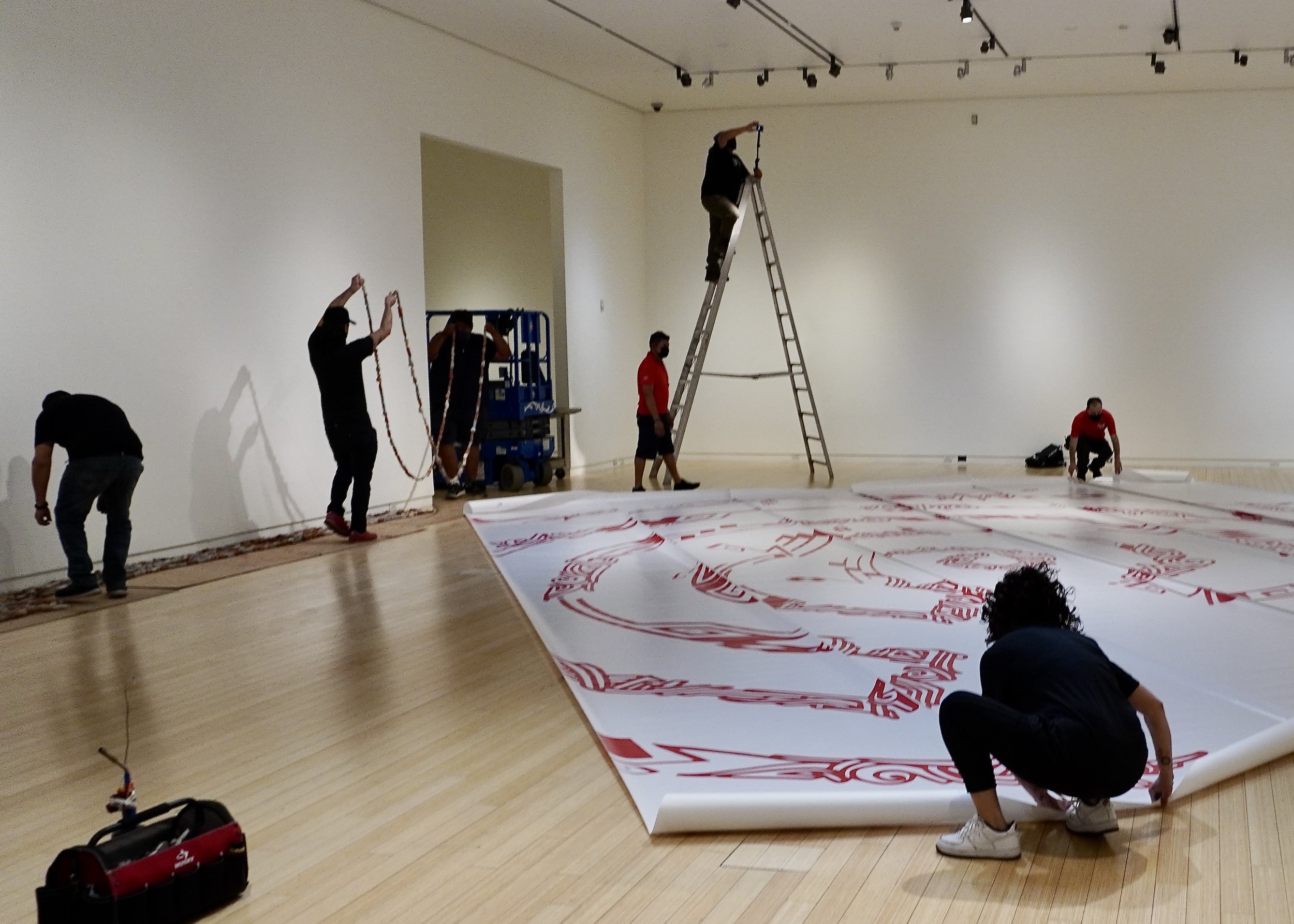
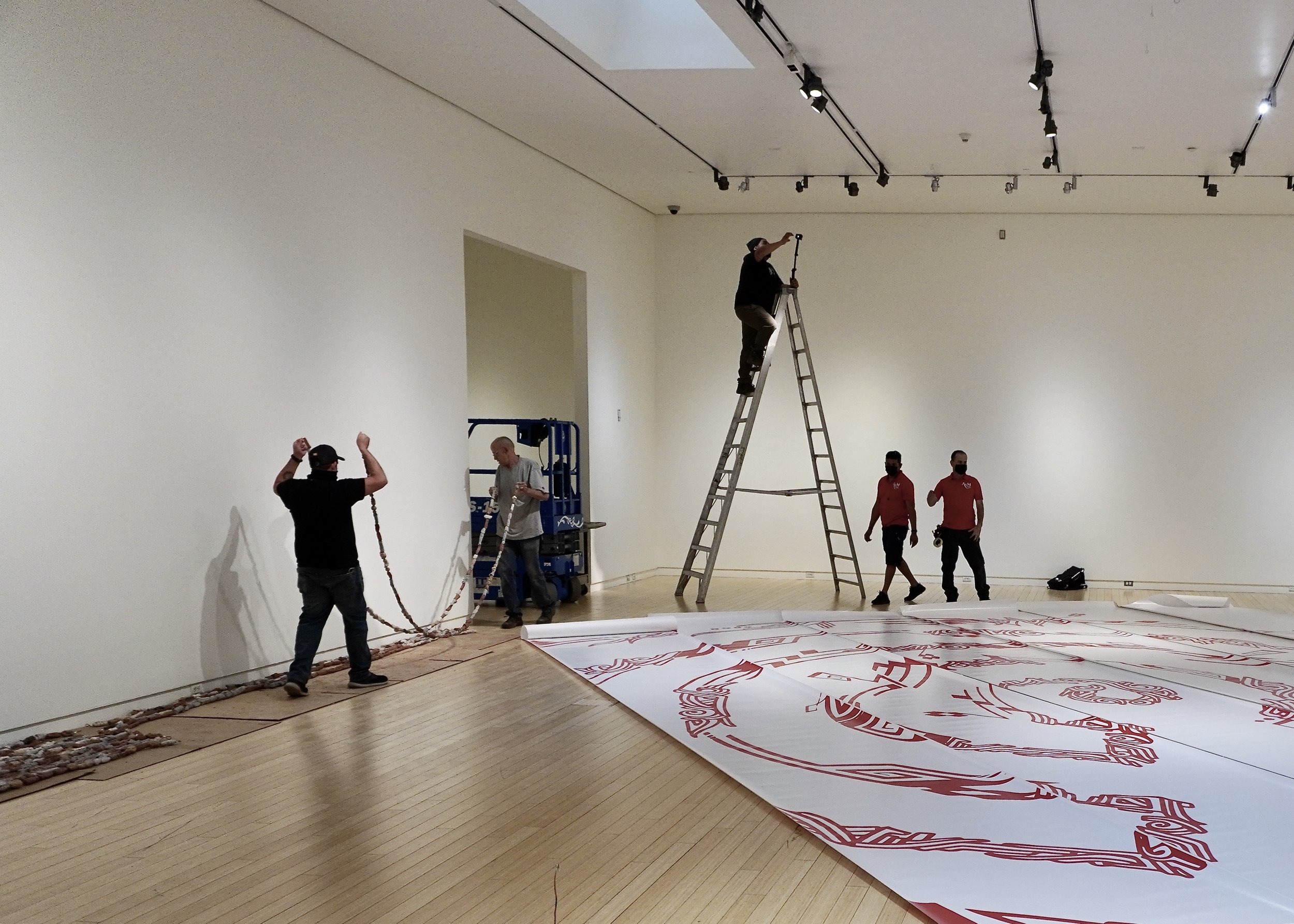
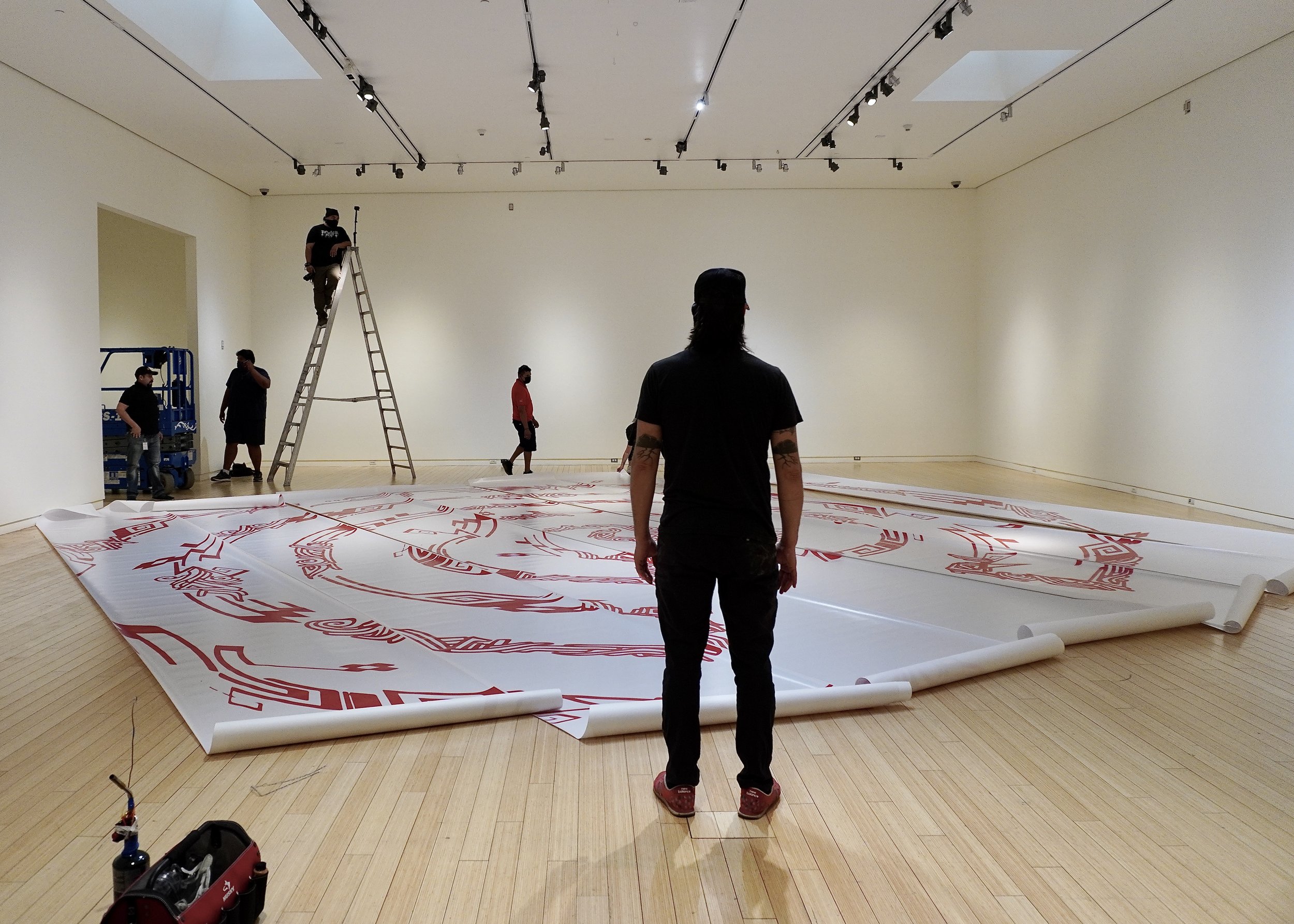
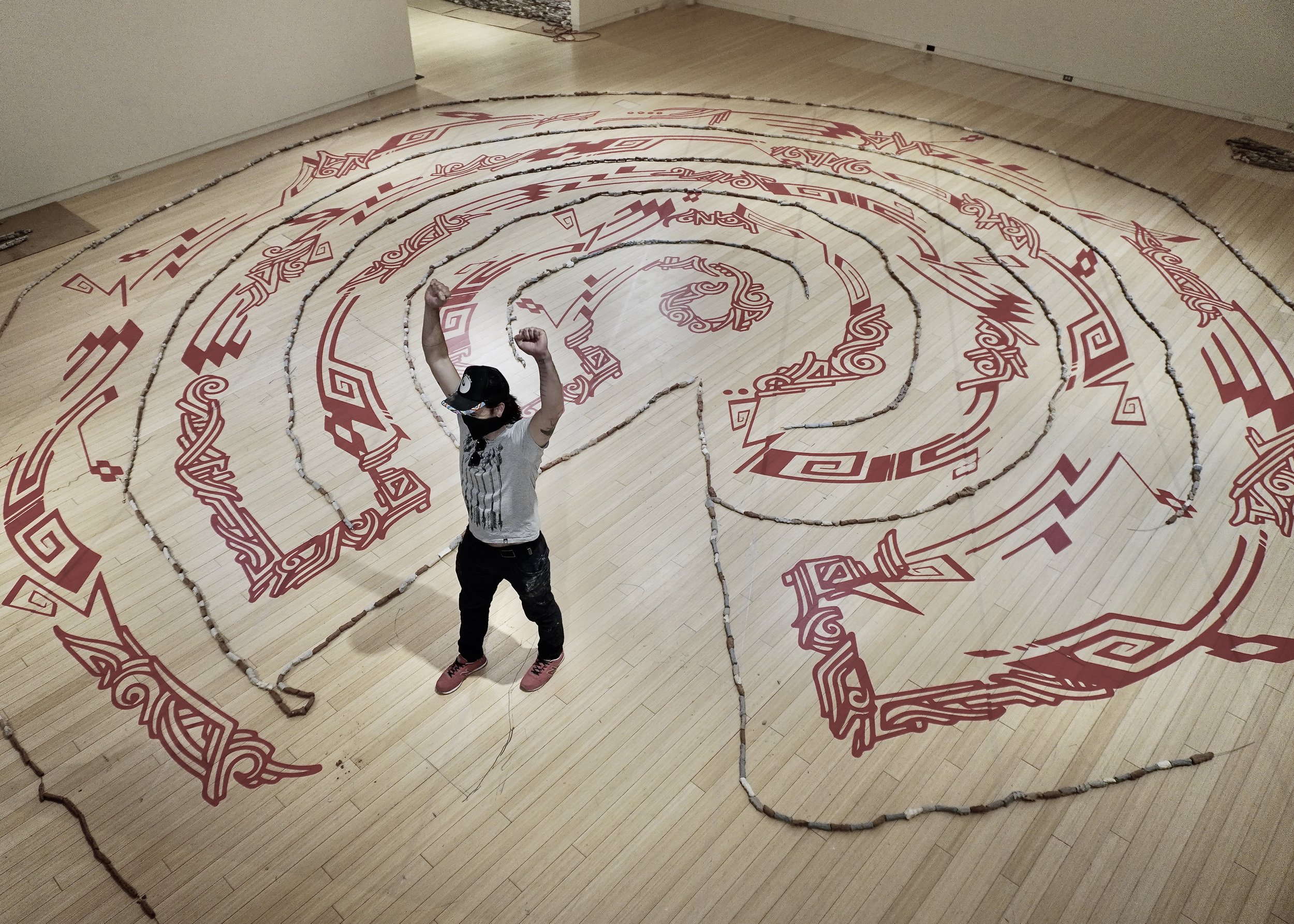
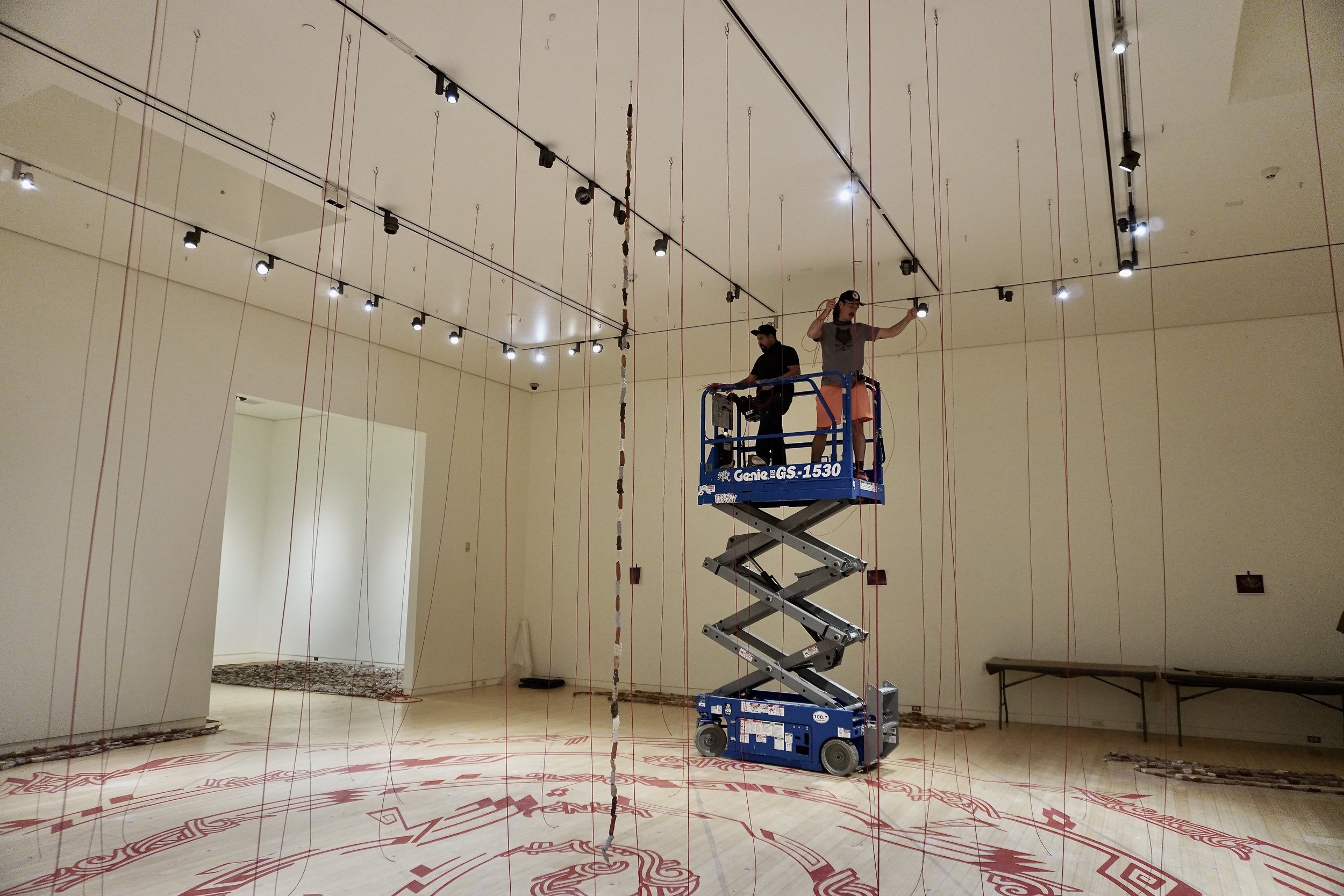
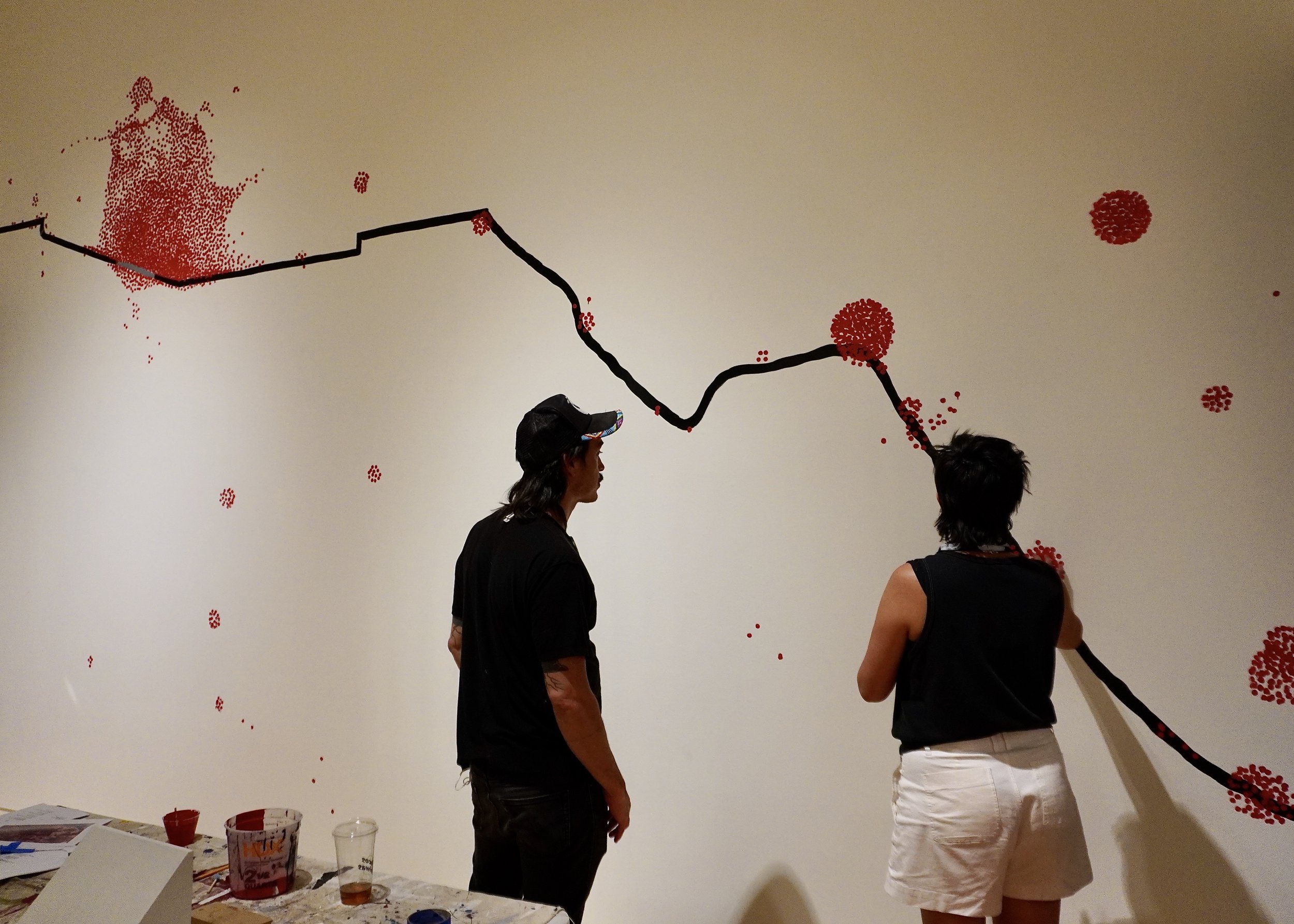
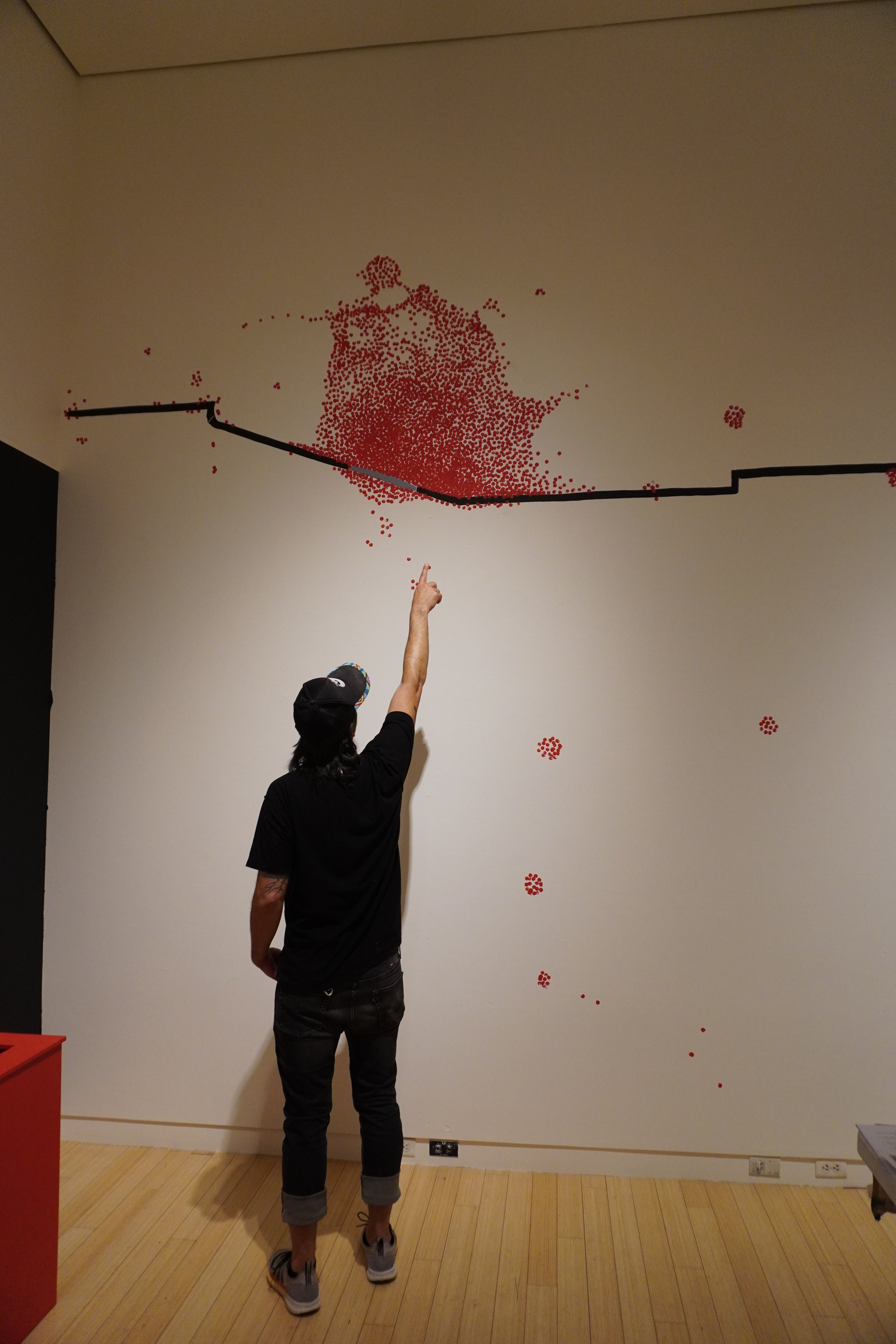

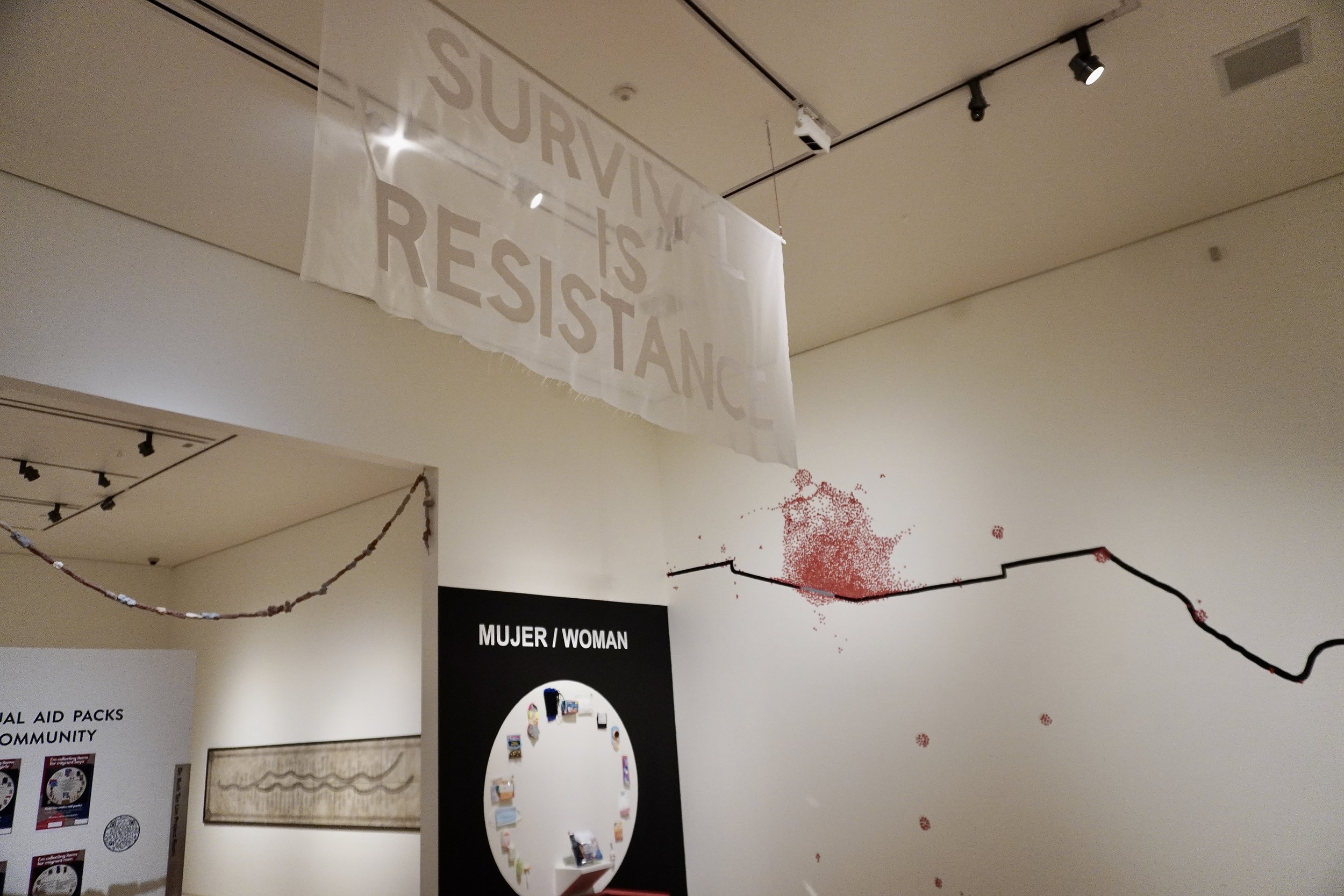
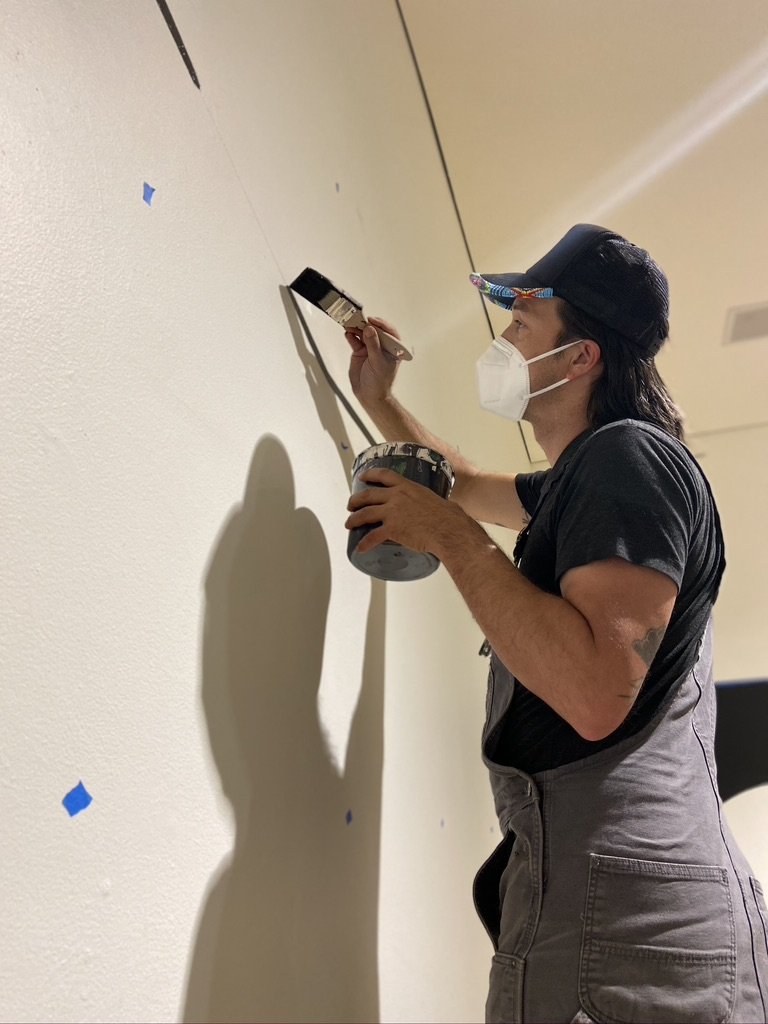
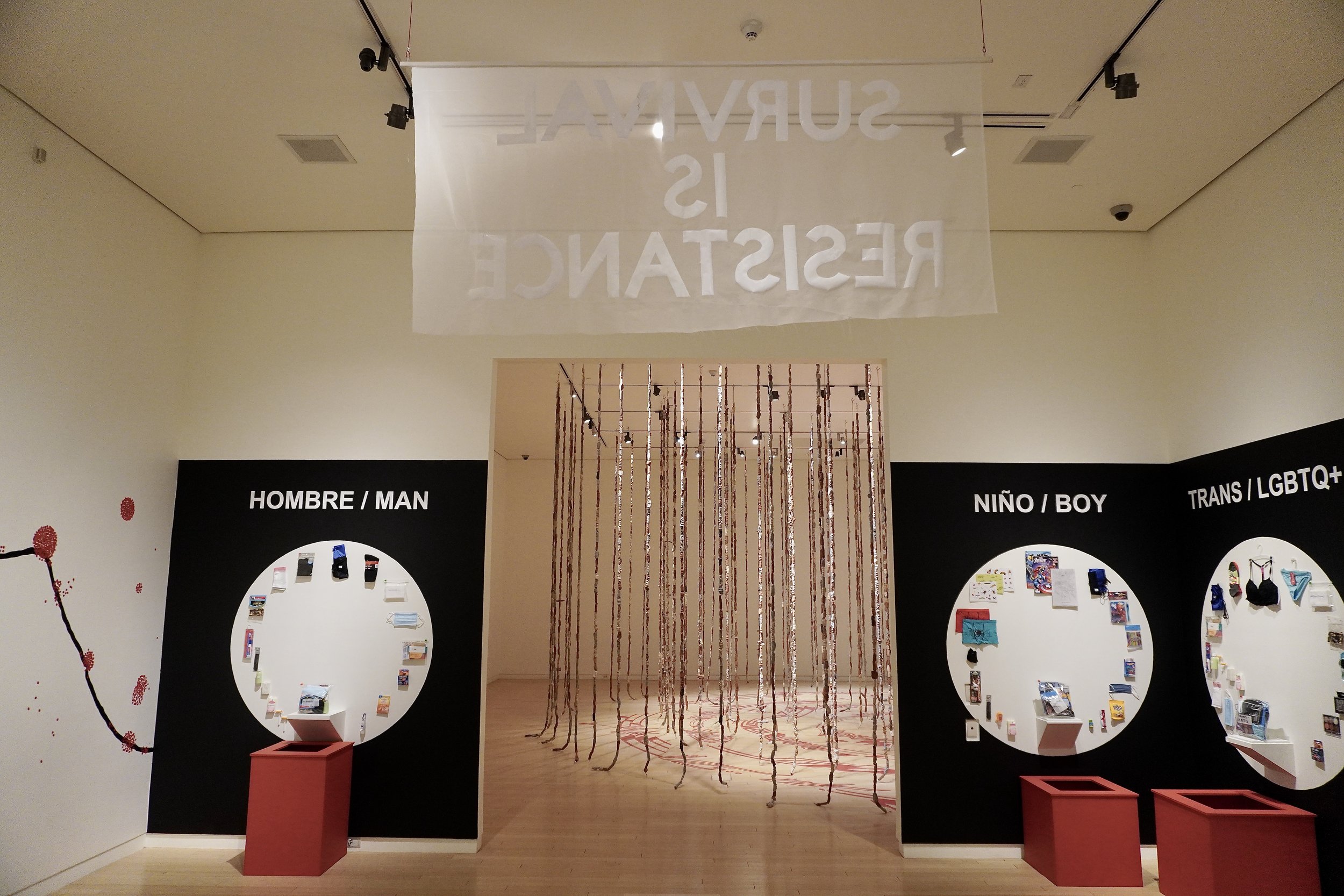
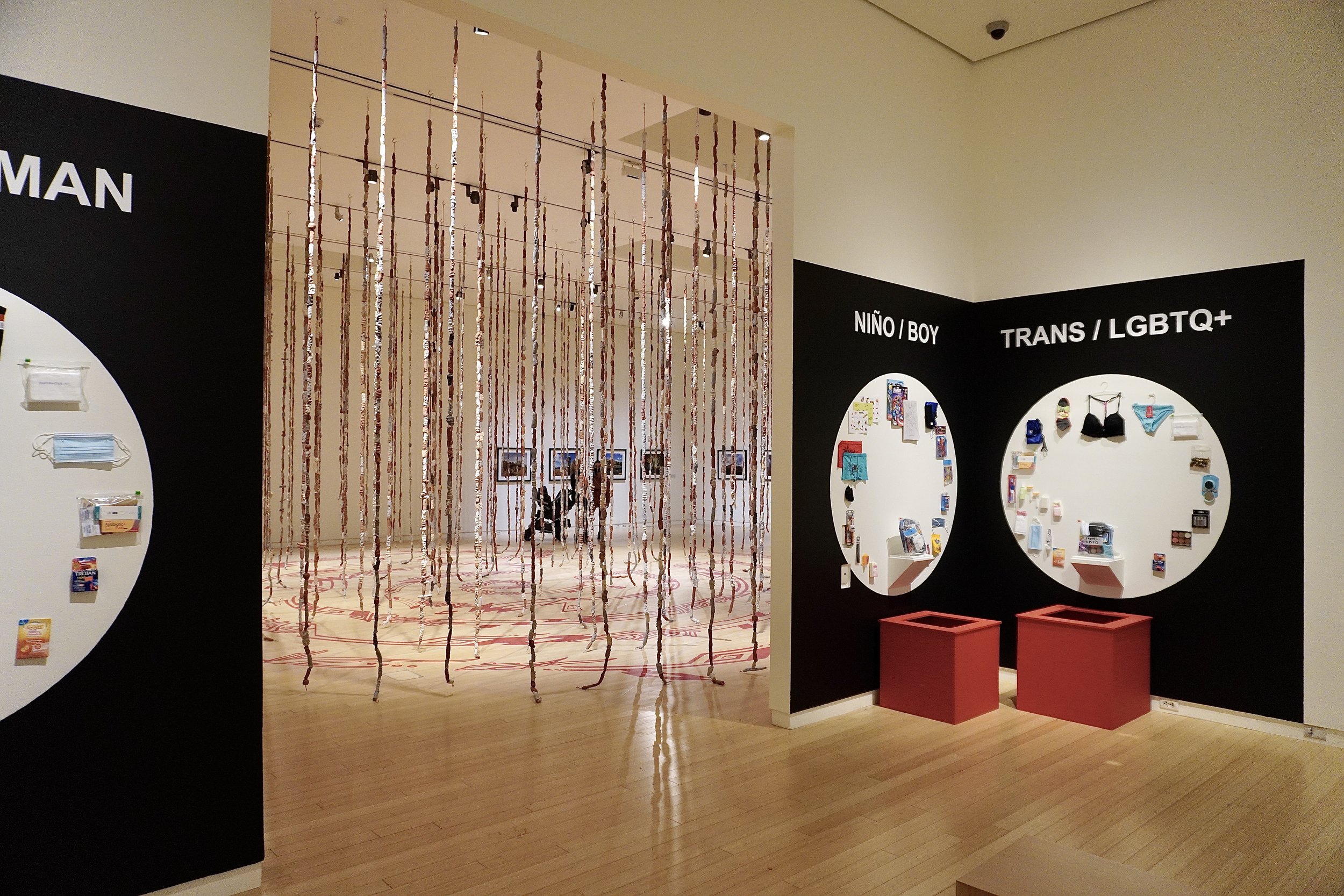
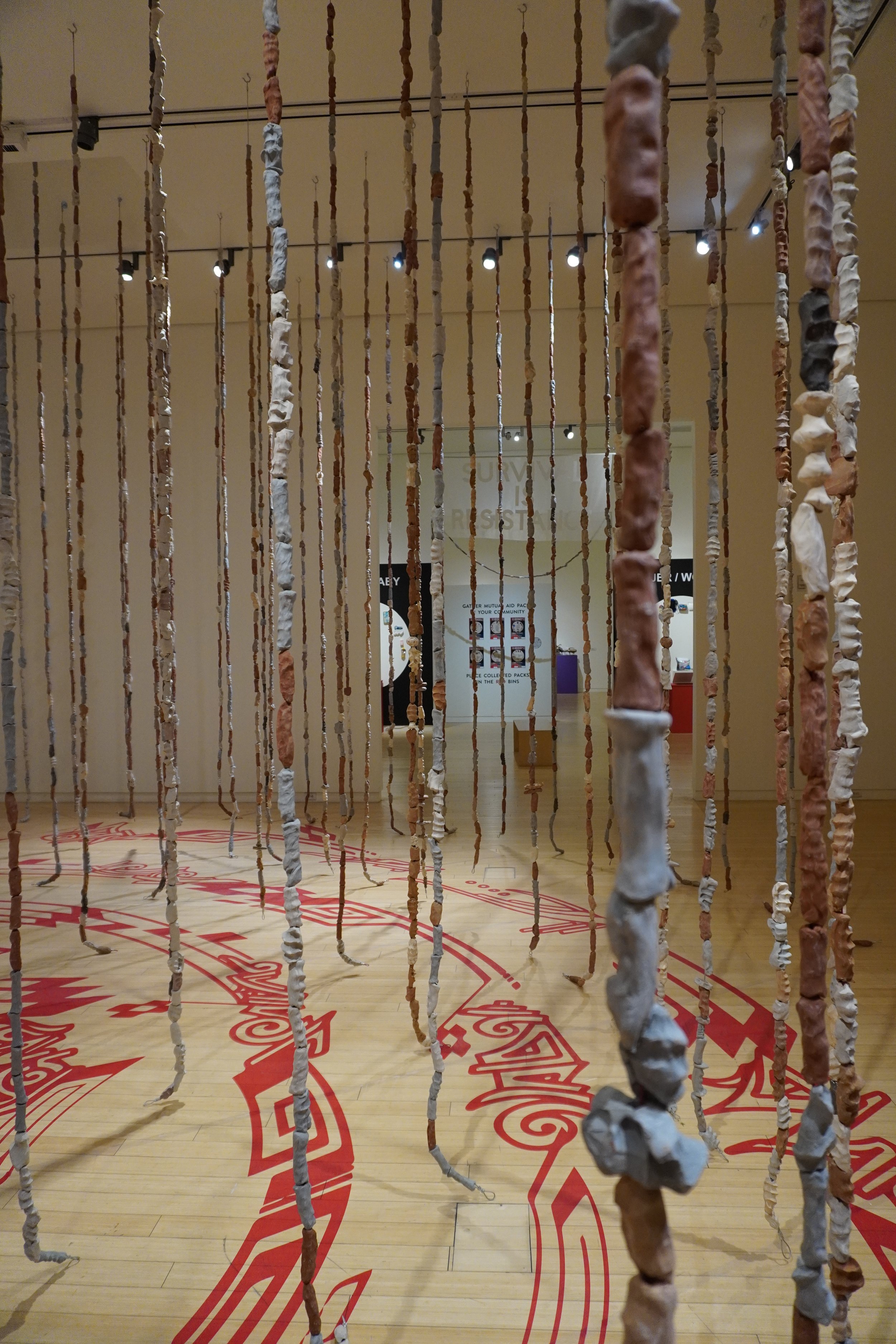
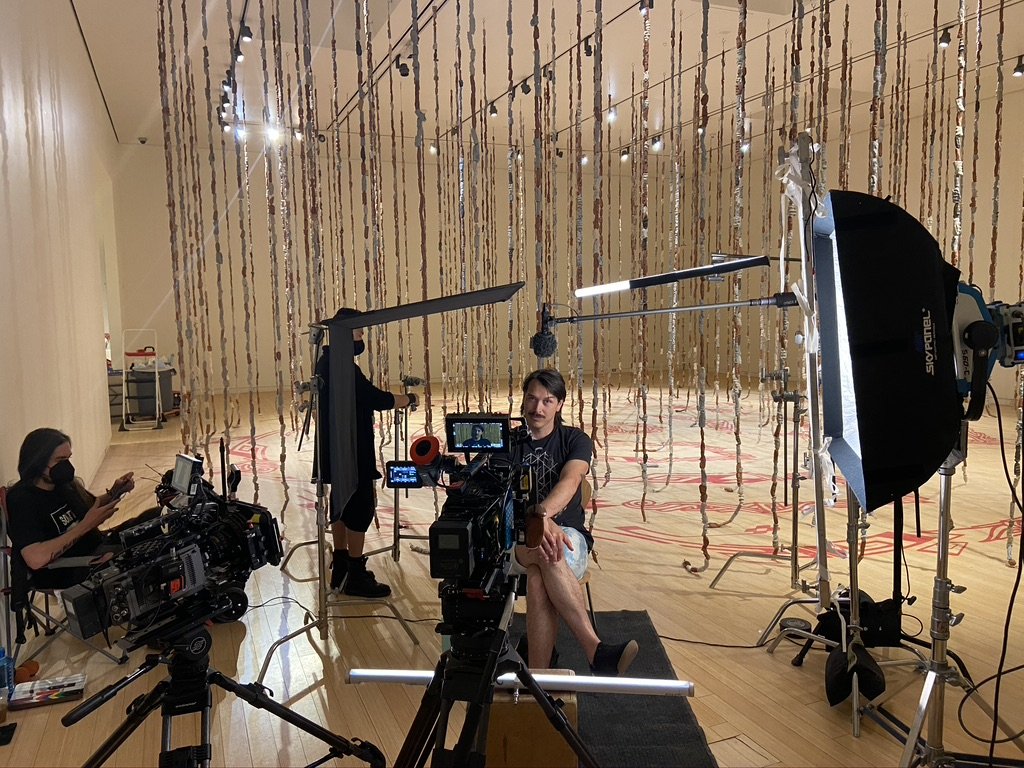

























“The artwork and information presented for the Passage exhibition asks us to consider ancestral migratory routes and the lands of Indigenous peoples affected by borders, acknowledging contemporary asylum seekers and our changing relationships to land.”
— Cannupa Hanska Luger
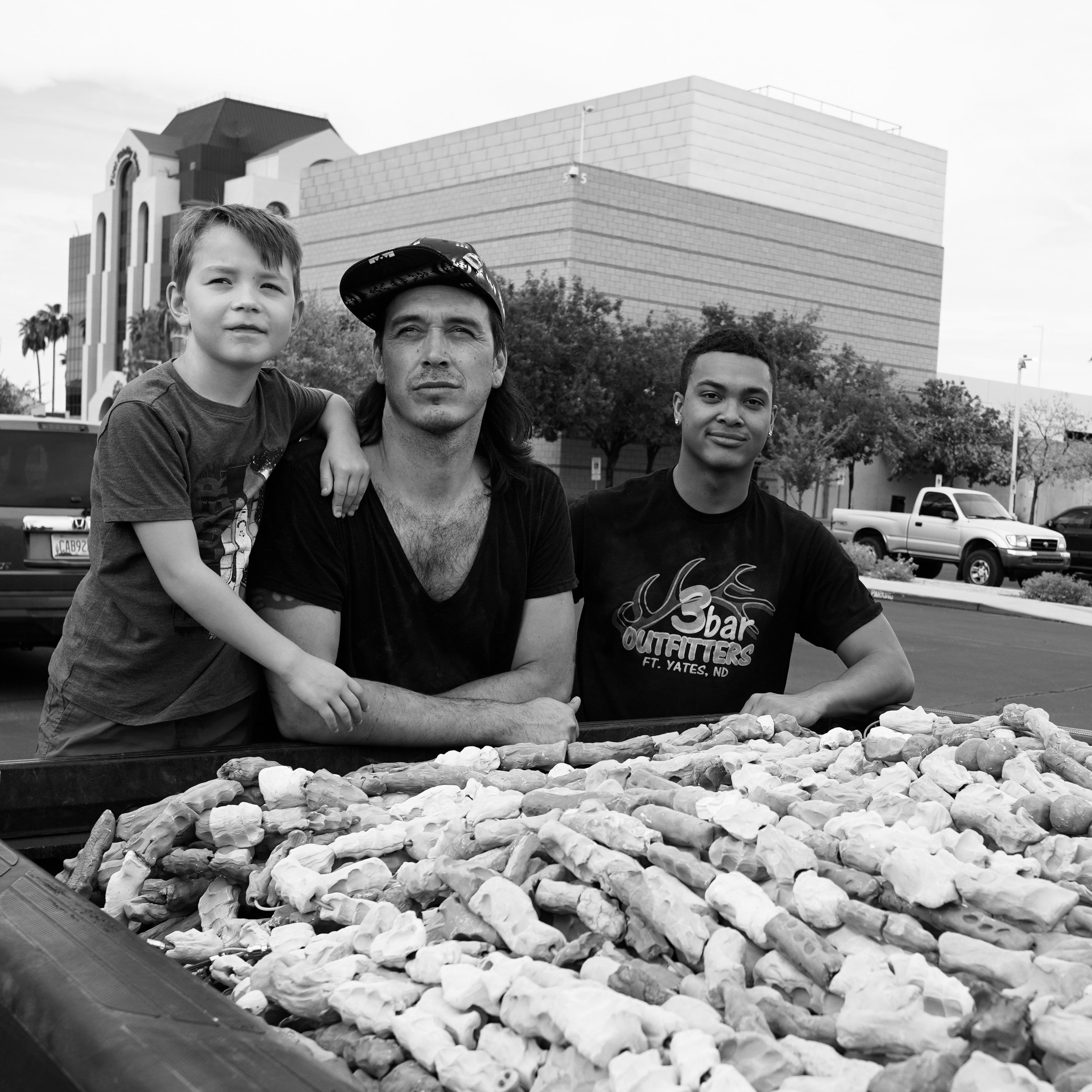

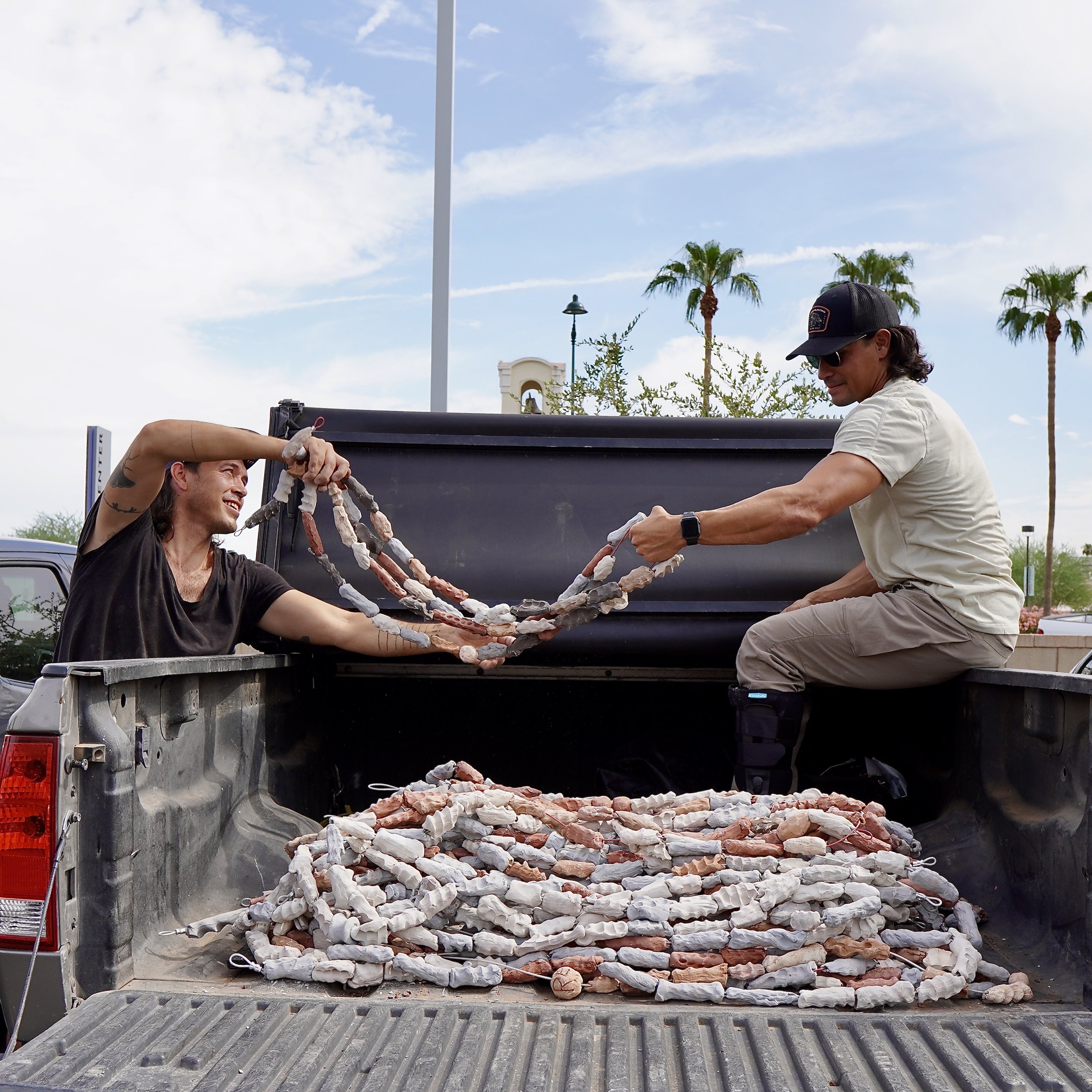

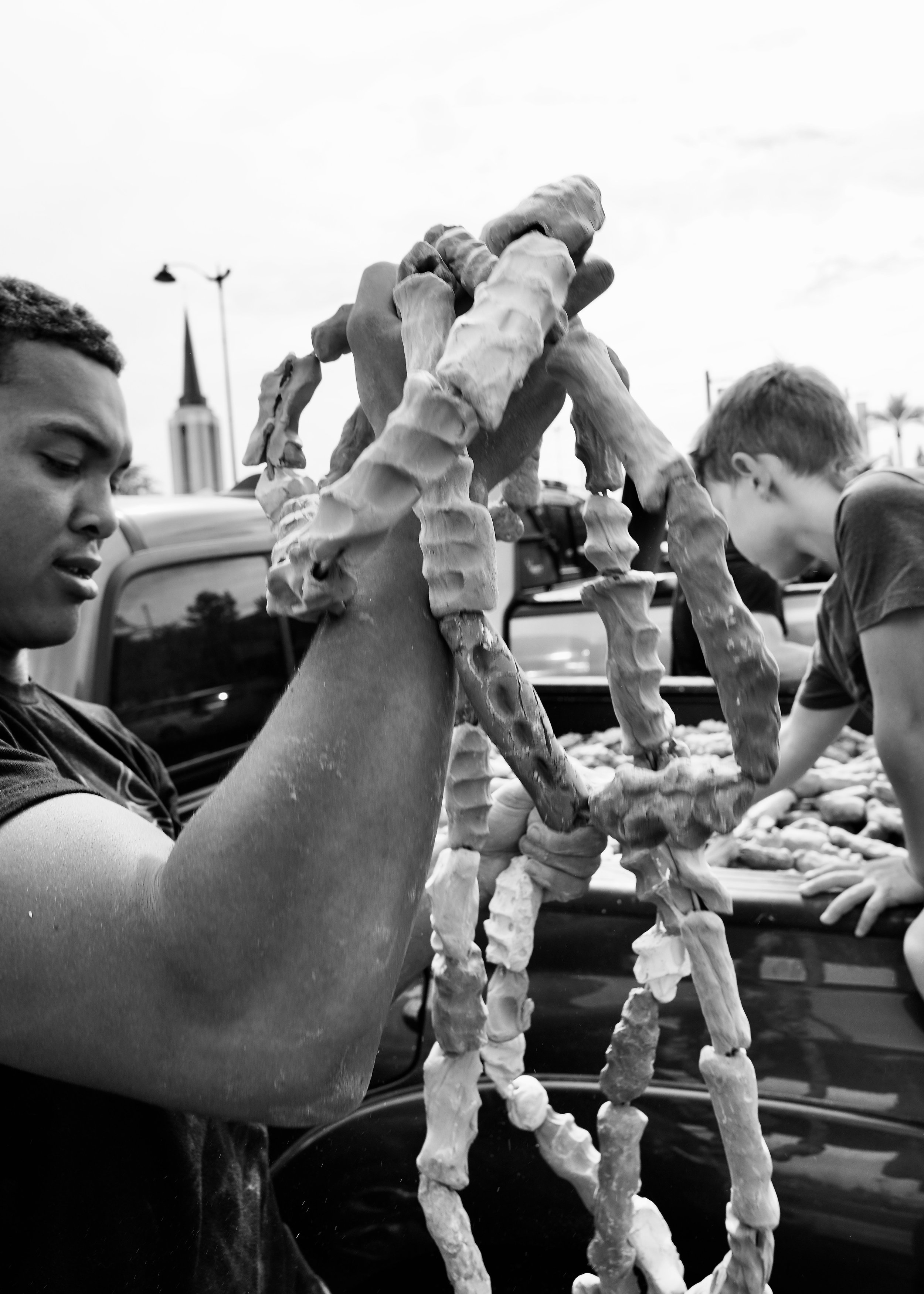

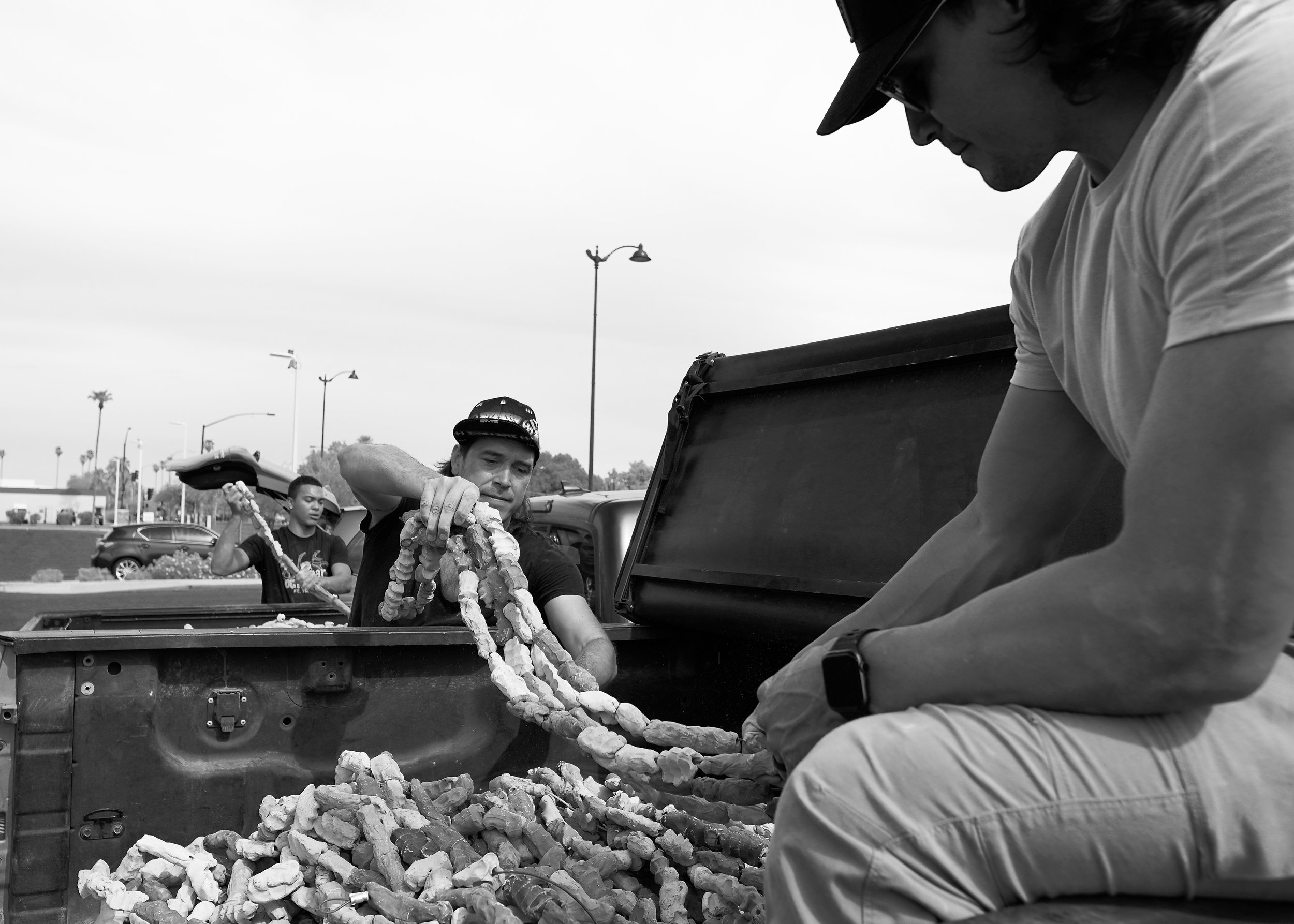
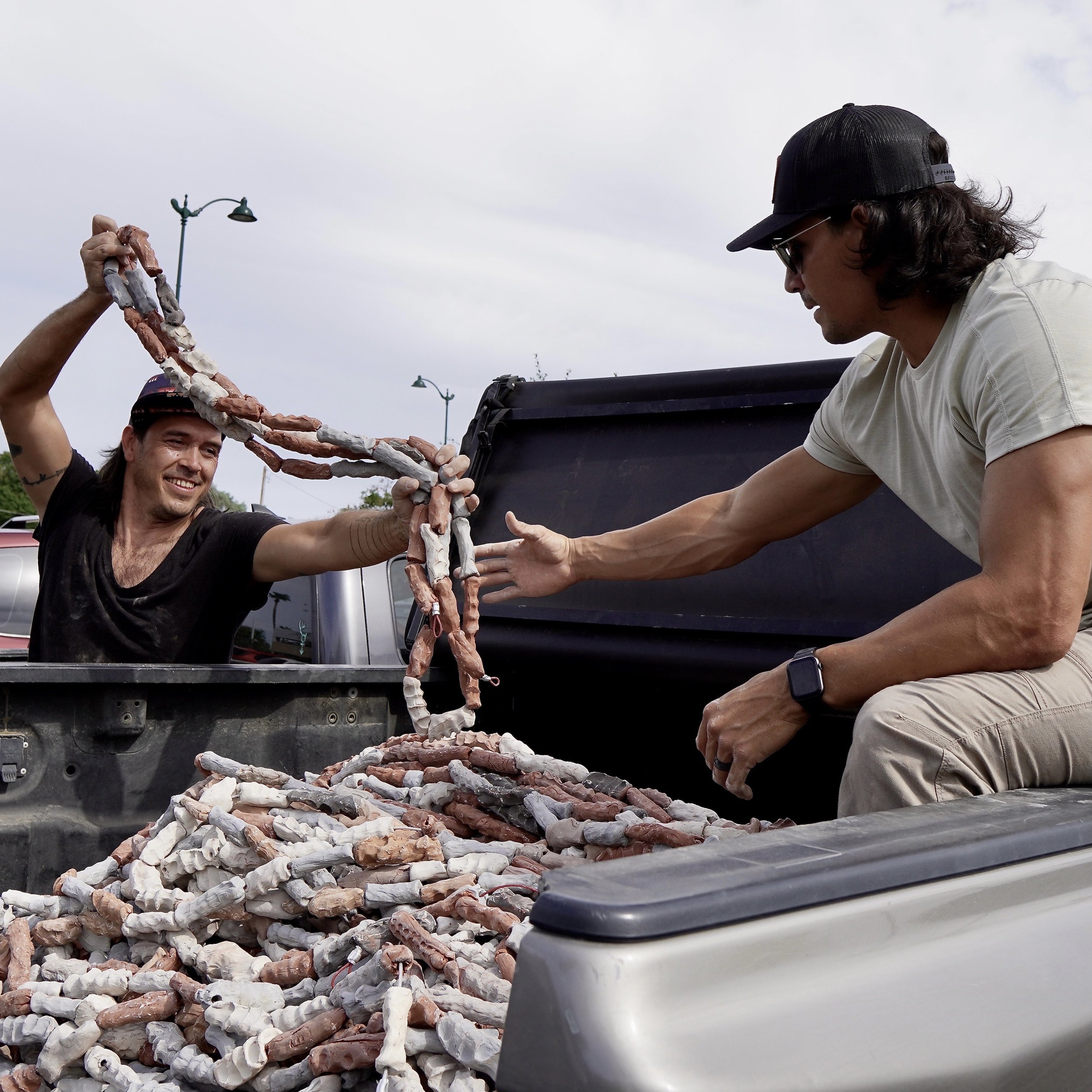
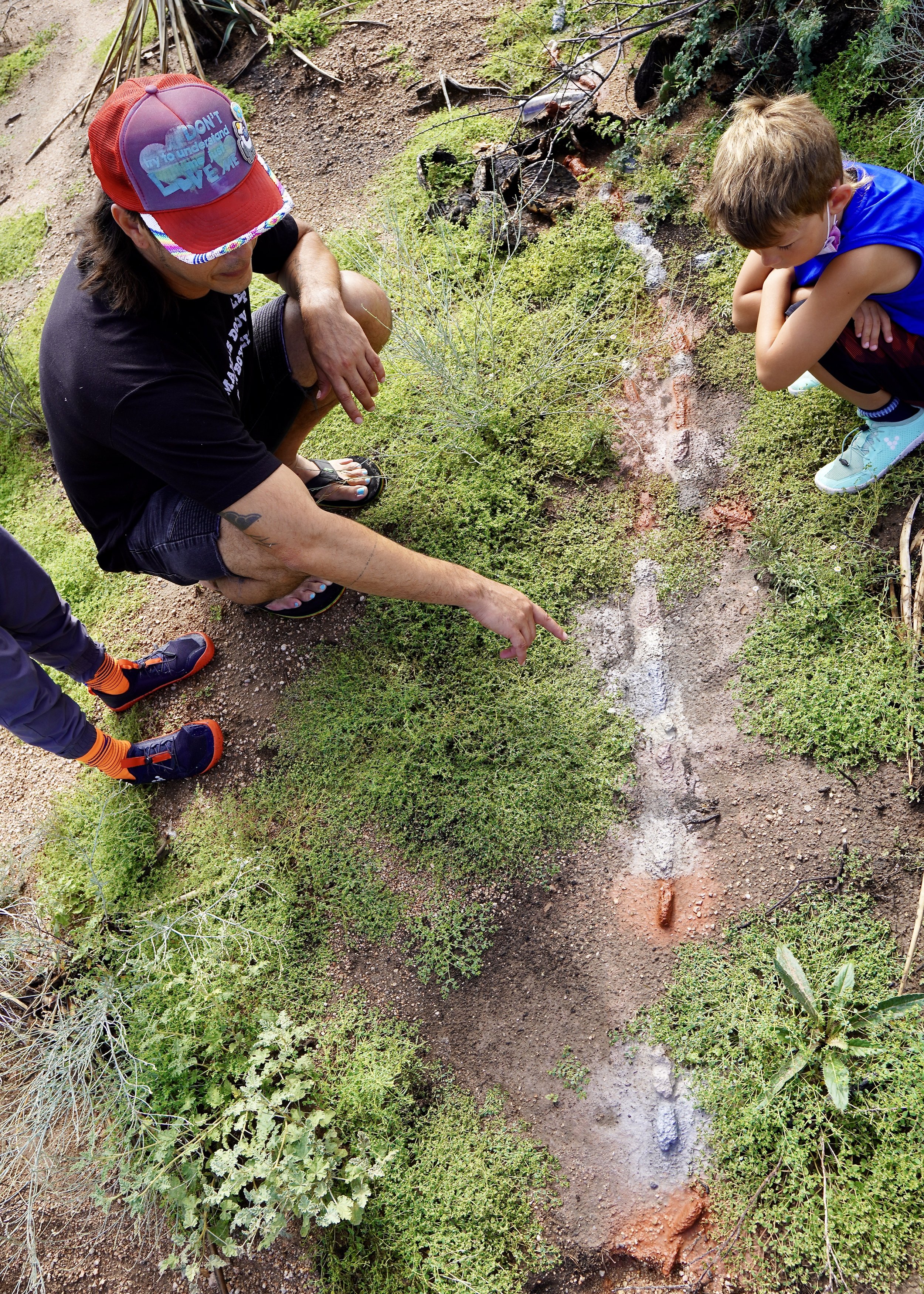
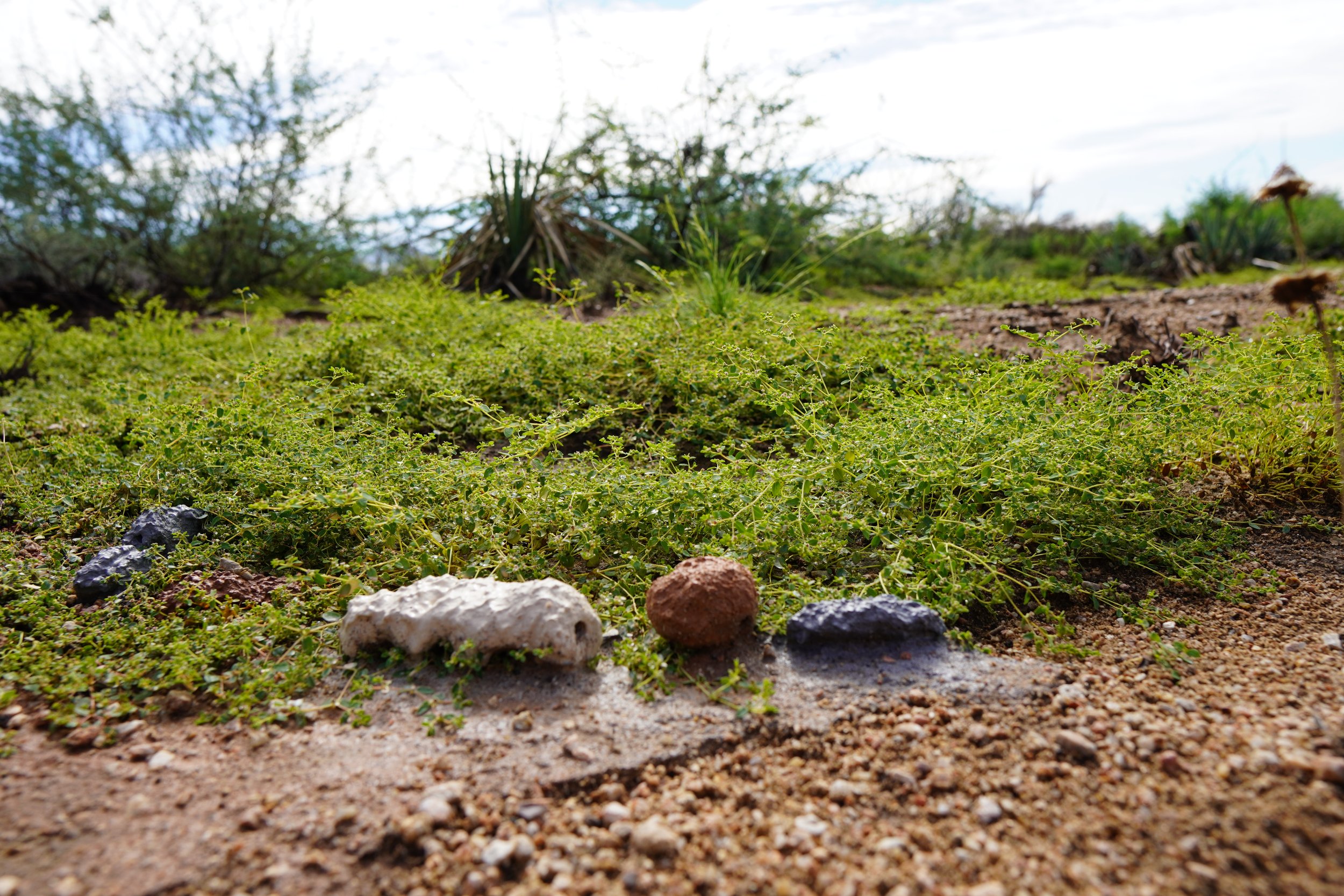
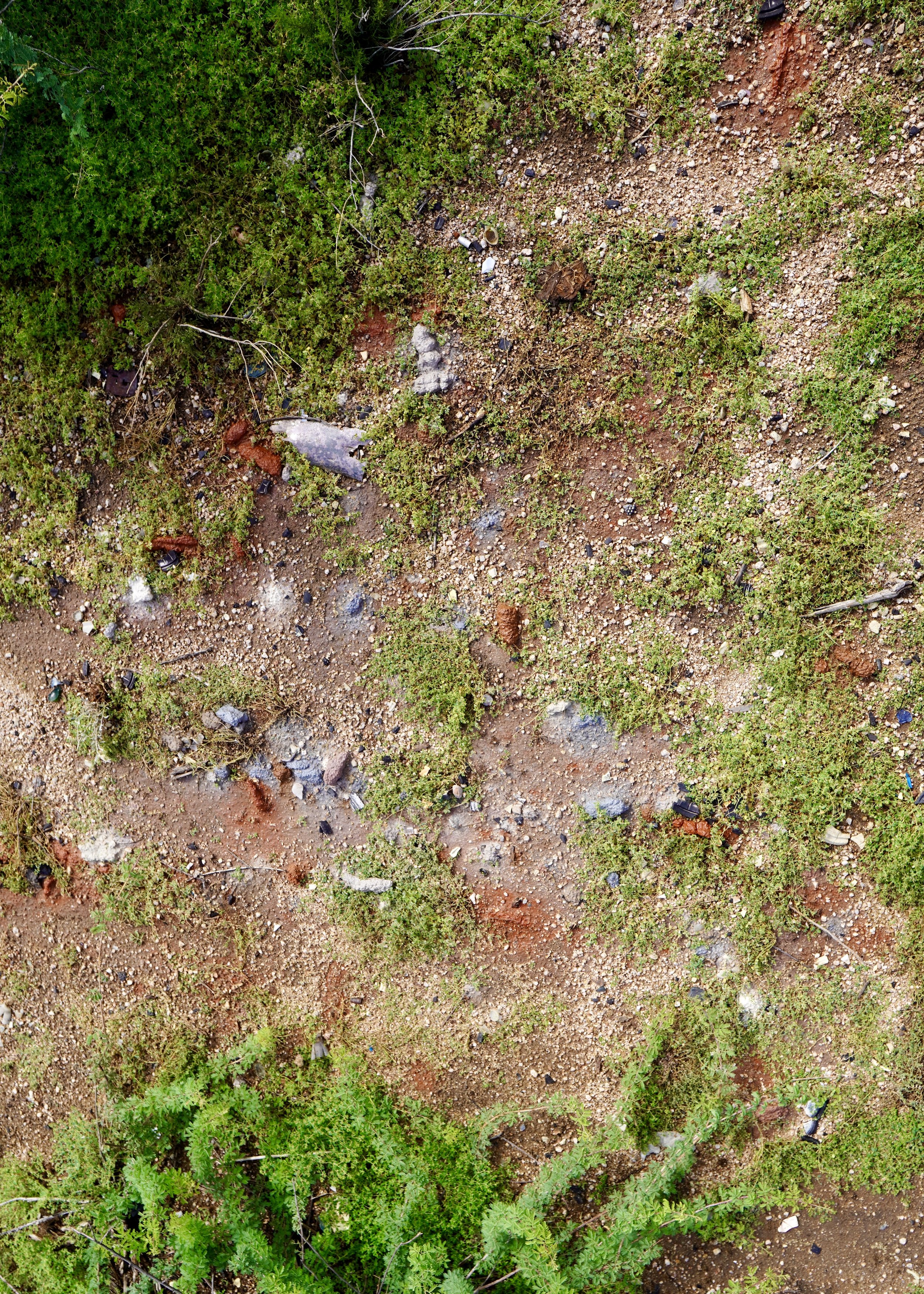
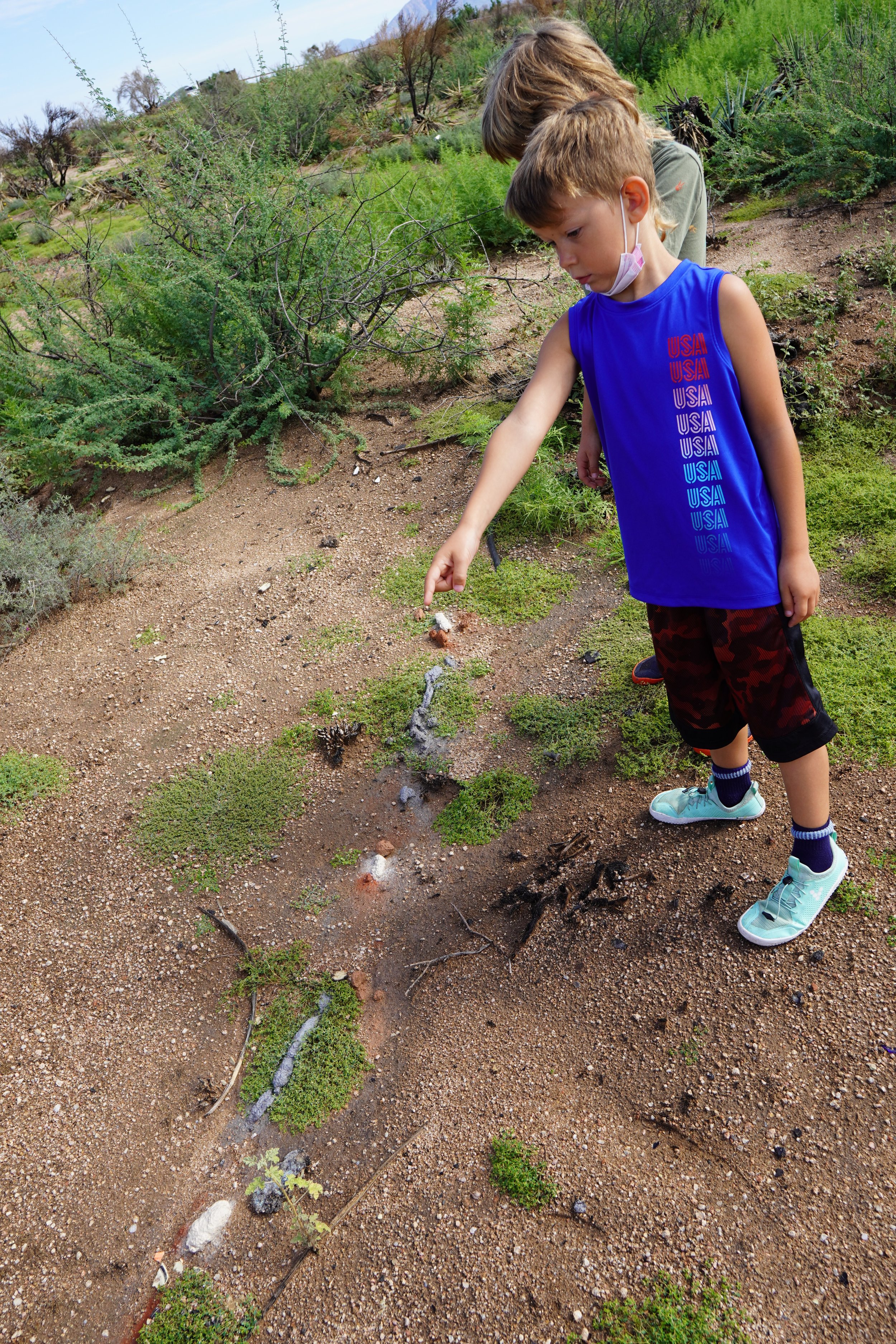
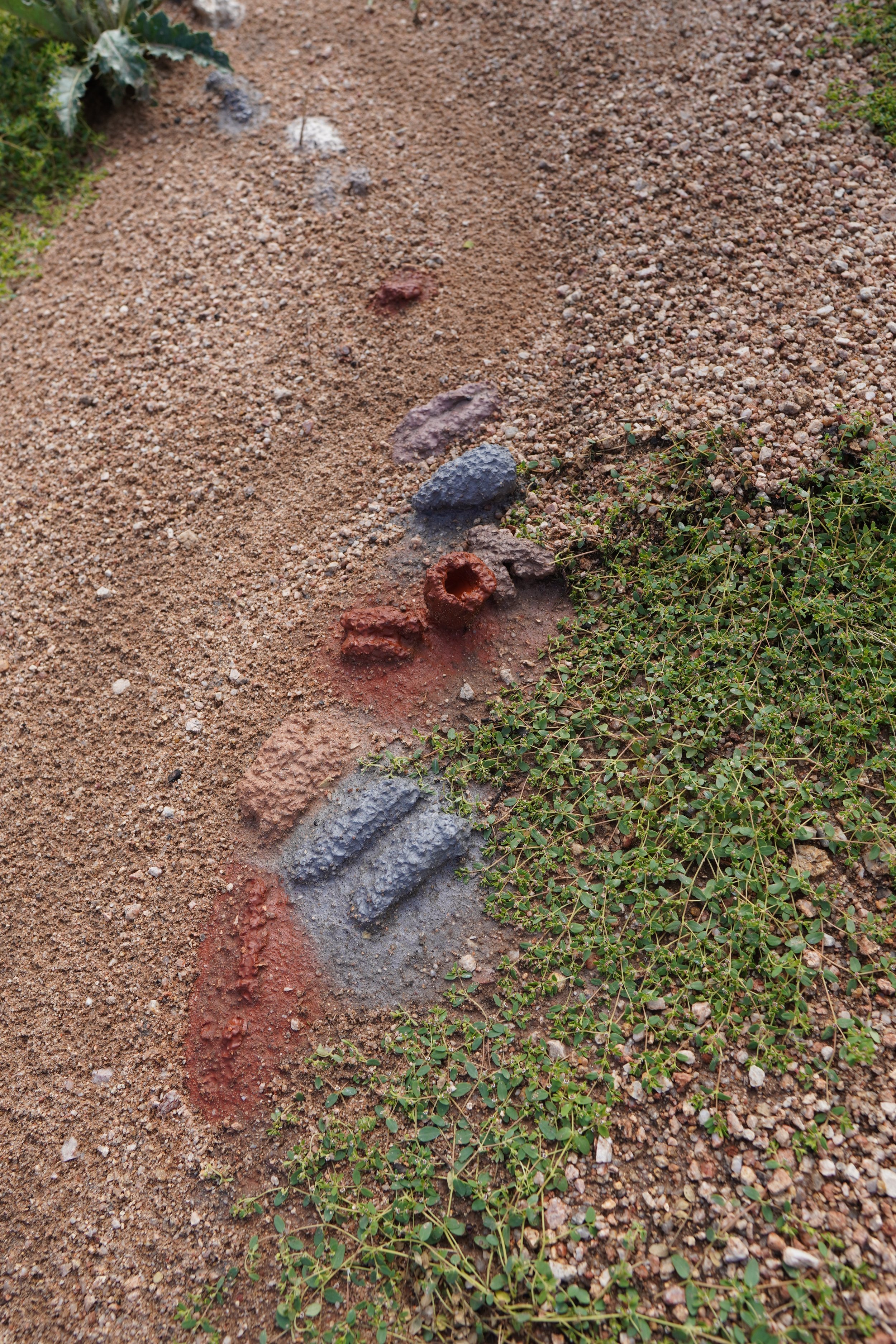
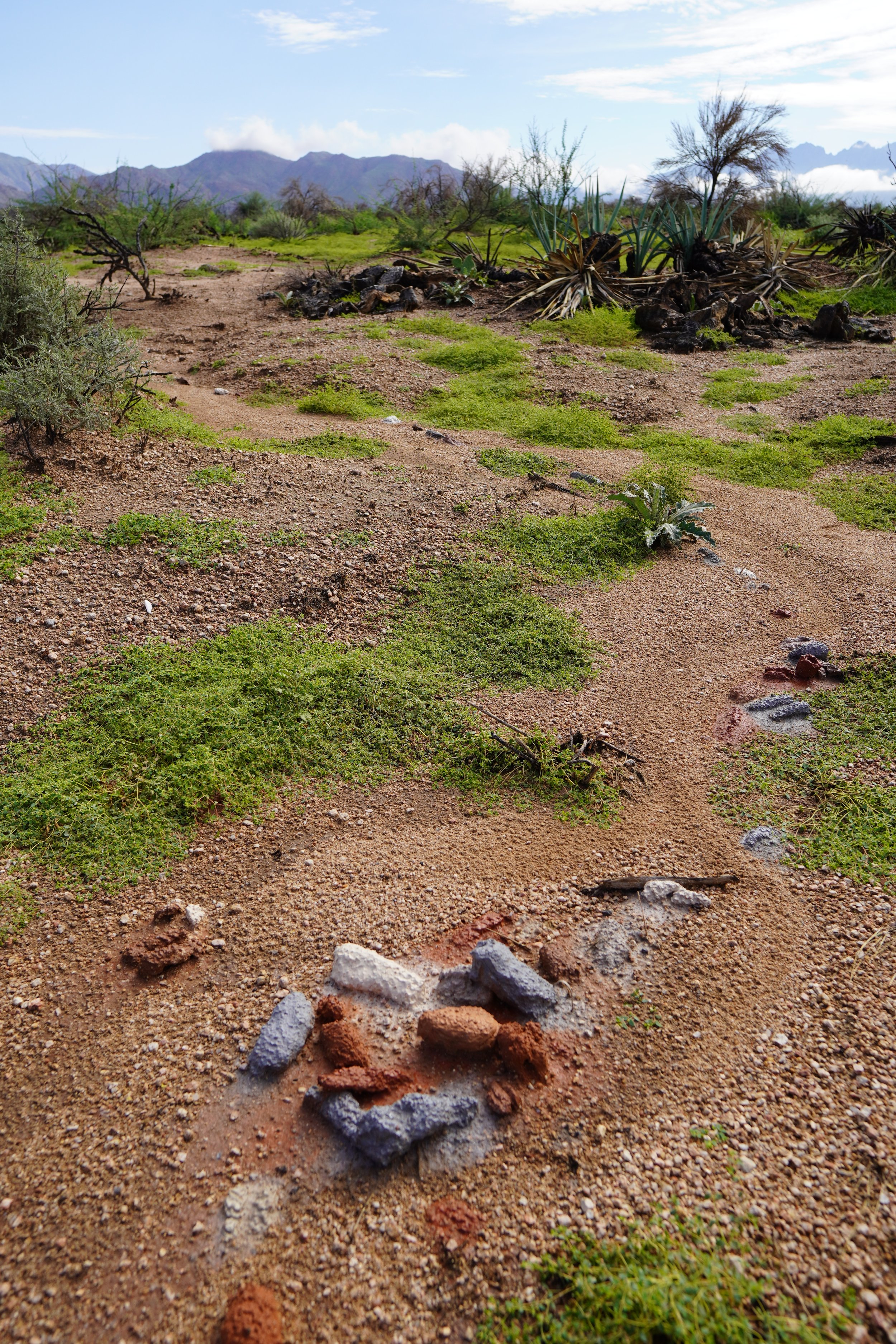
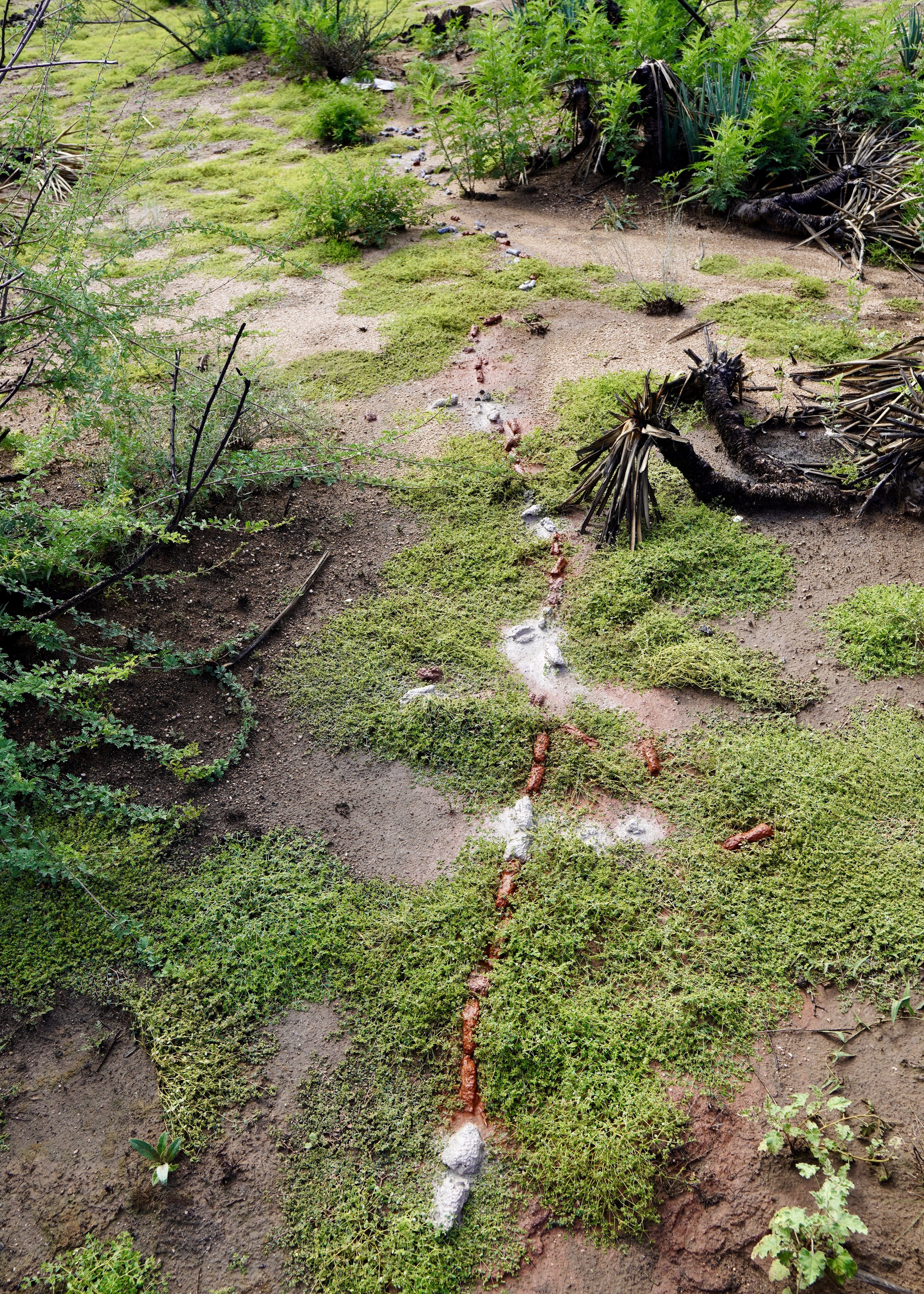
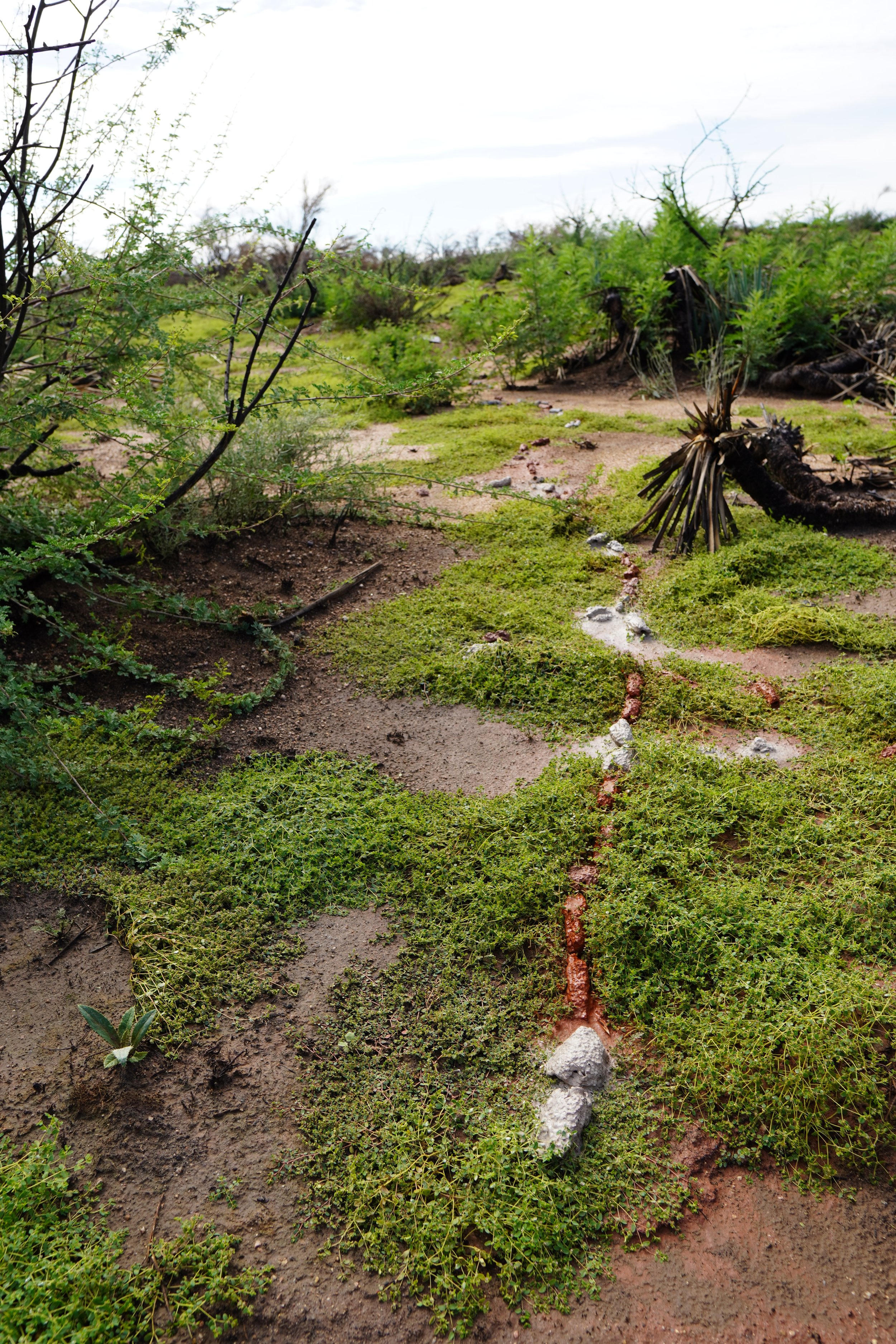
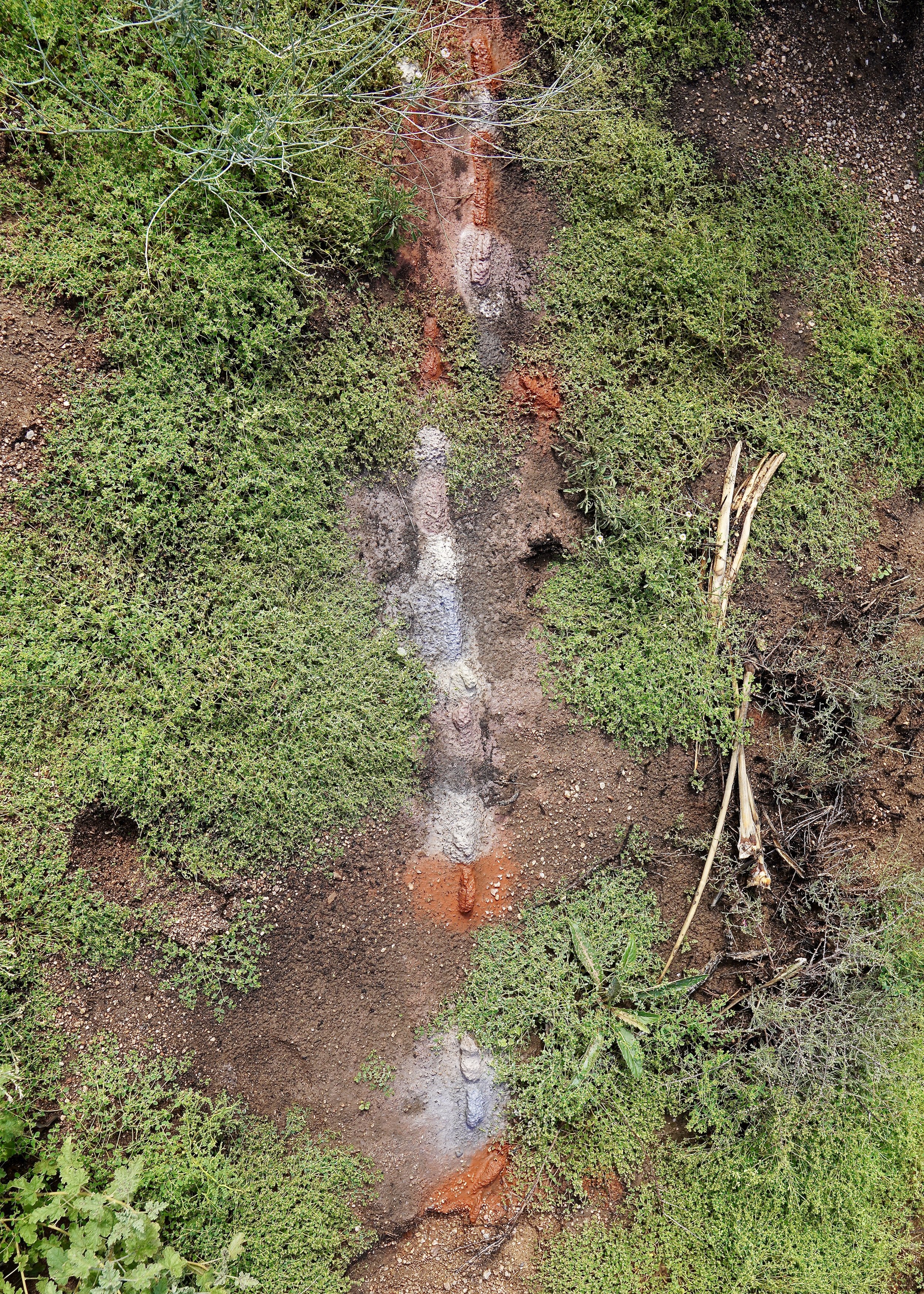
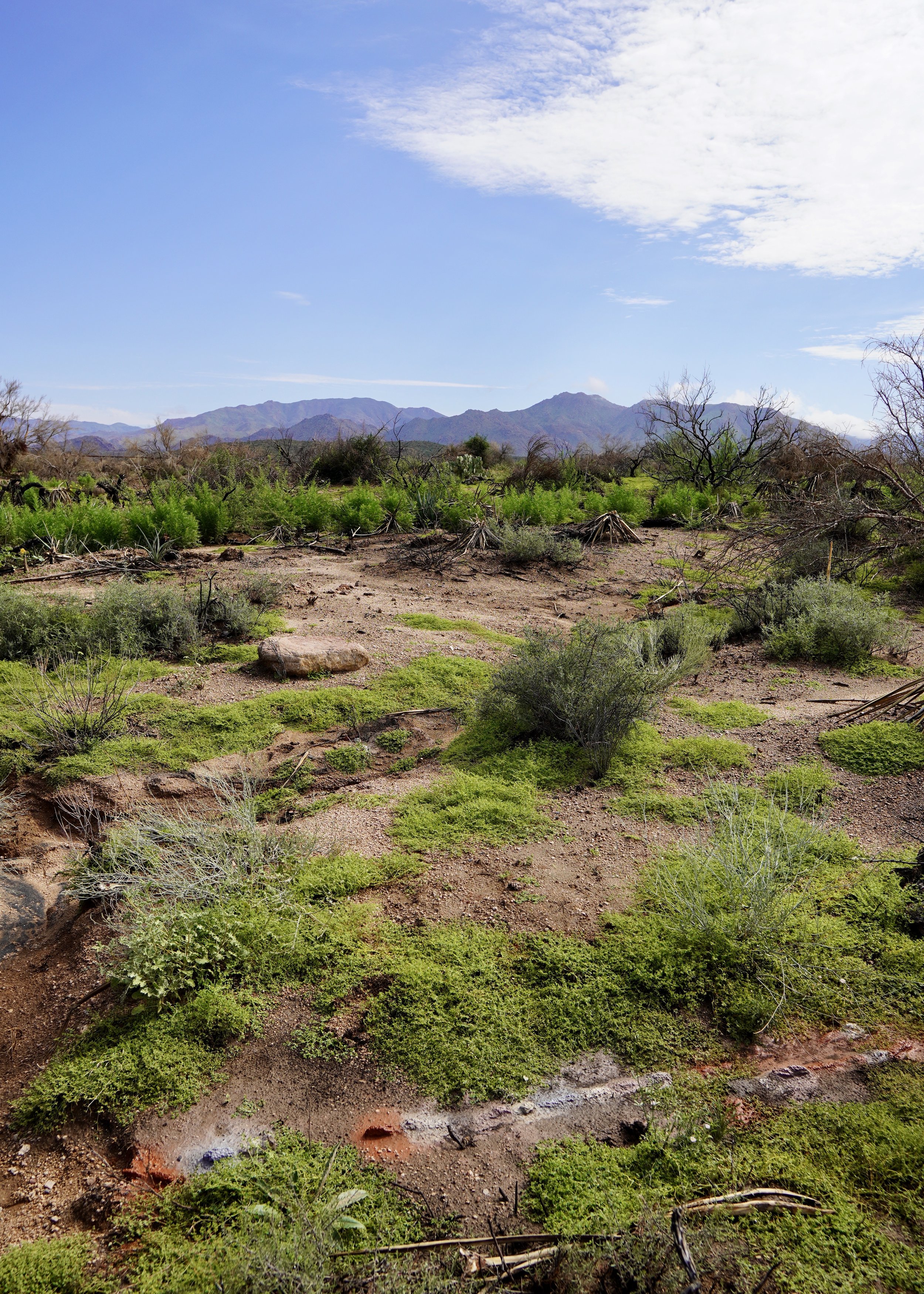
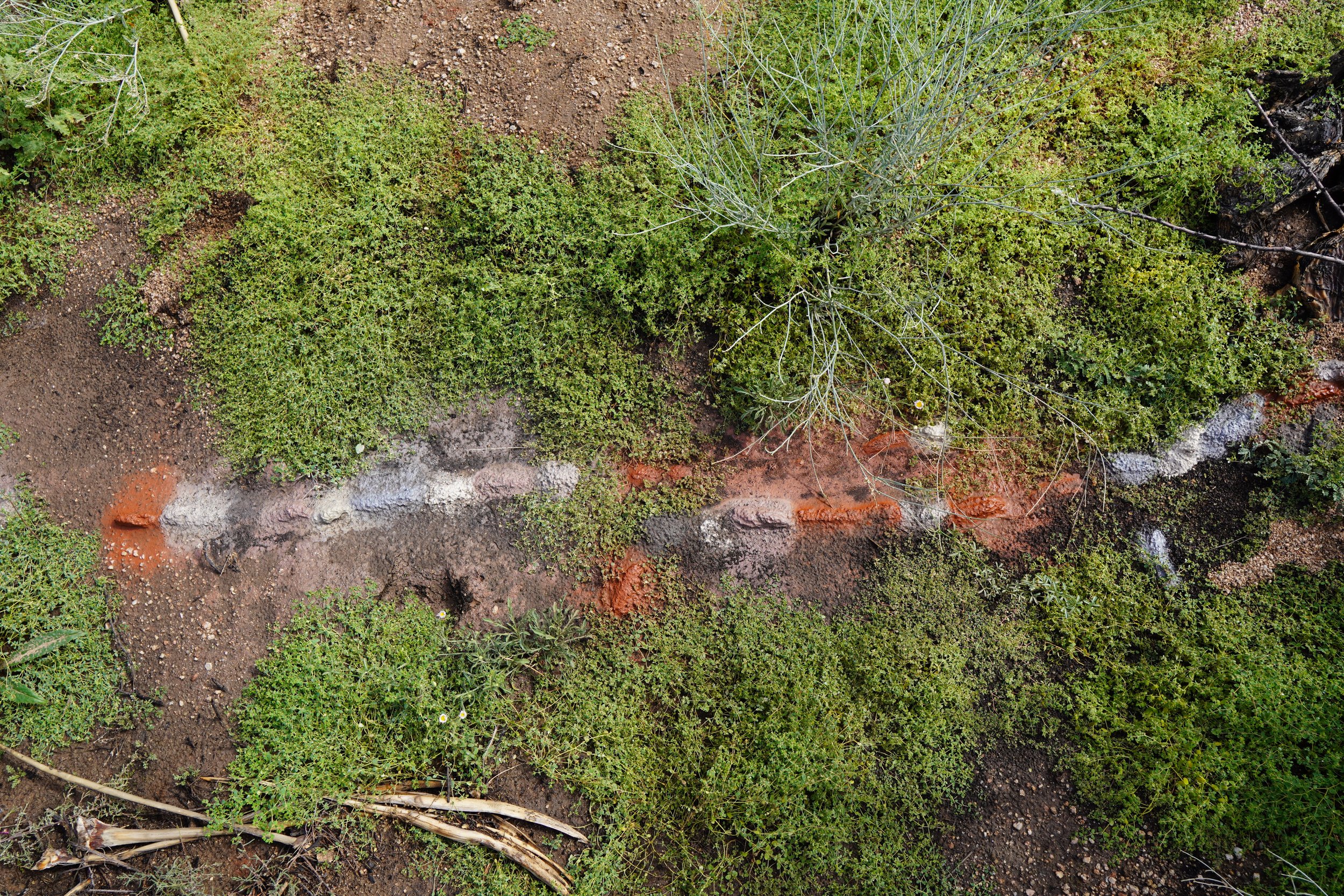



















The final action of Something To Hold Onto was returning 9000+ beads / 2640 feet / 2 tons unfired clay to the earth near the US / Mexico Border in Arizona after its’ presentation. The day after the action of returning the clay to the land, monsoon rains came and supported the unfired clay to be drawn back to the earth. Six months later Luger traveled back to witness how the unfired clay was drawn back into the earth almost completely, completing the project and setting the intentions of healing back to the land.
